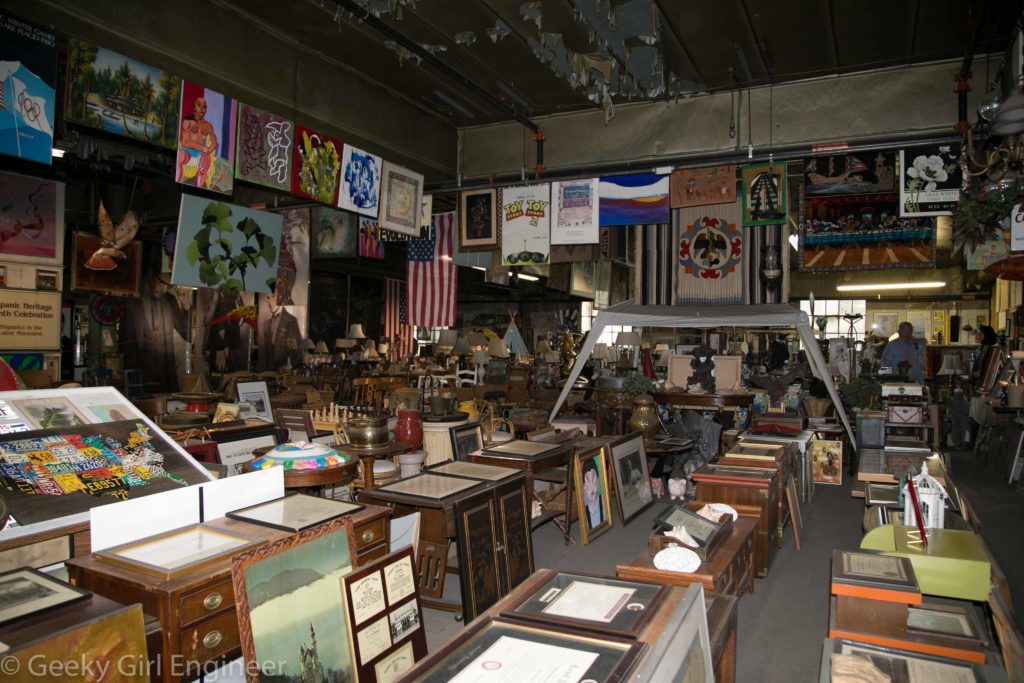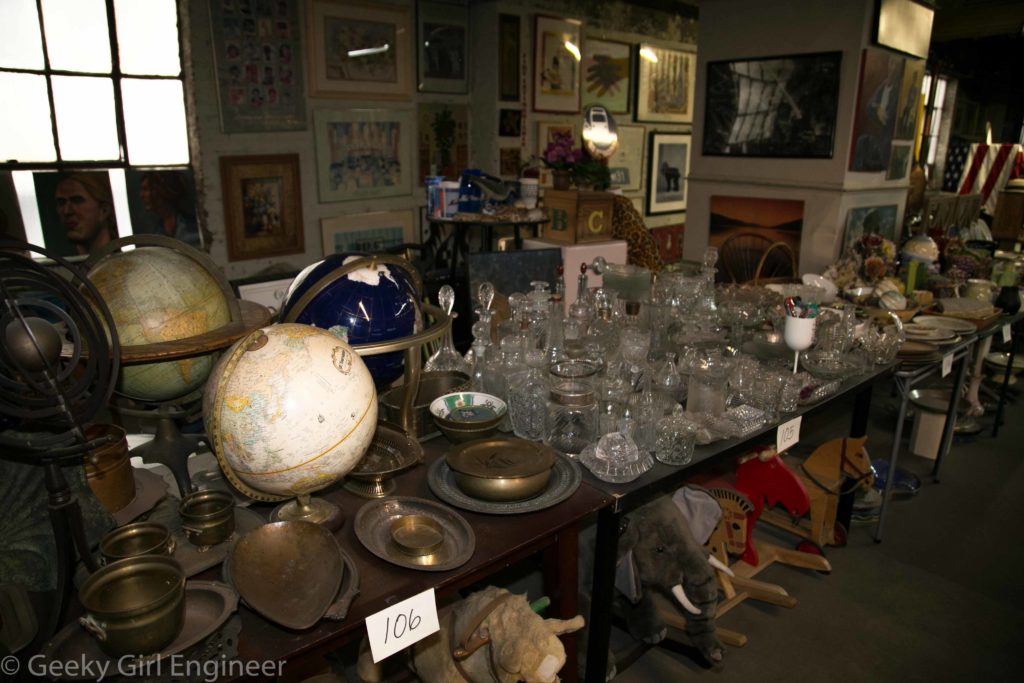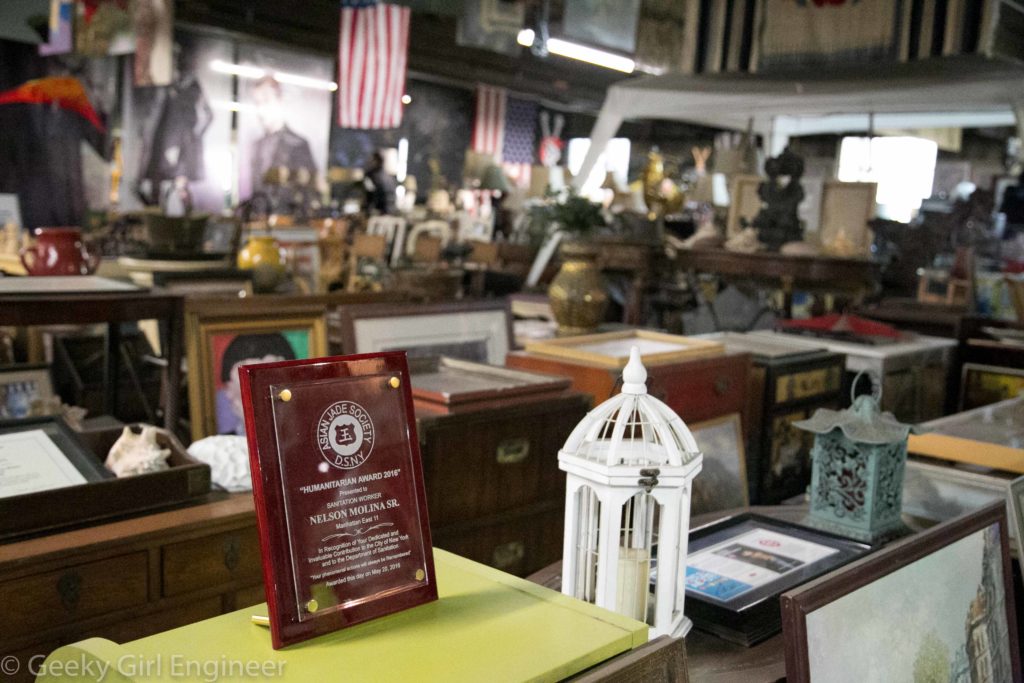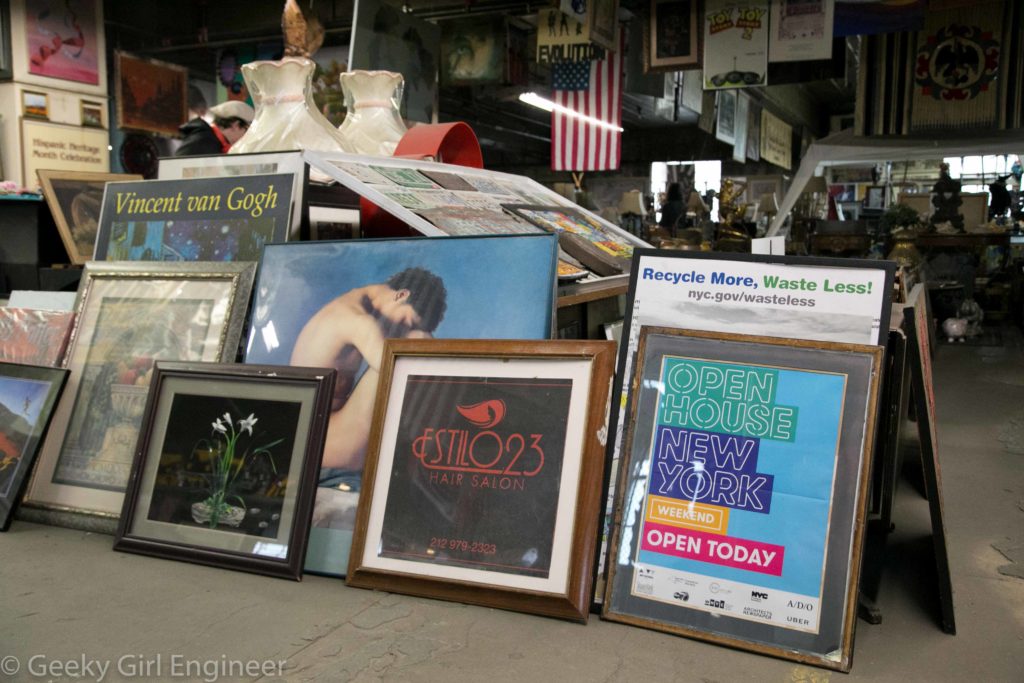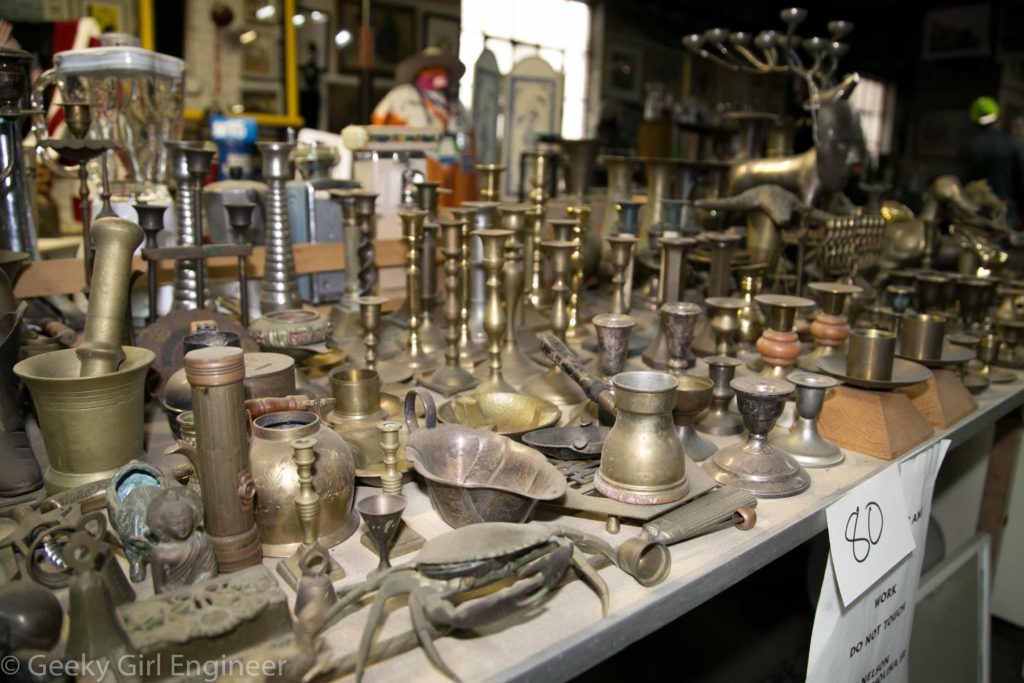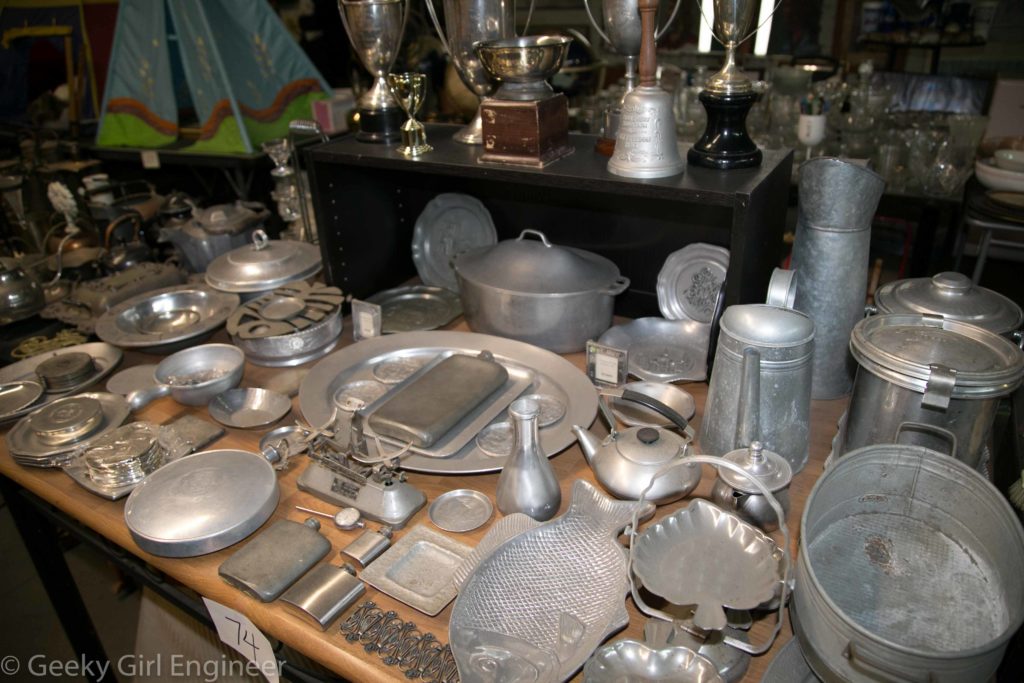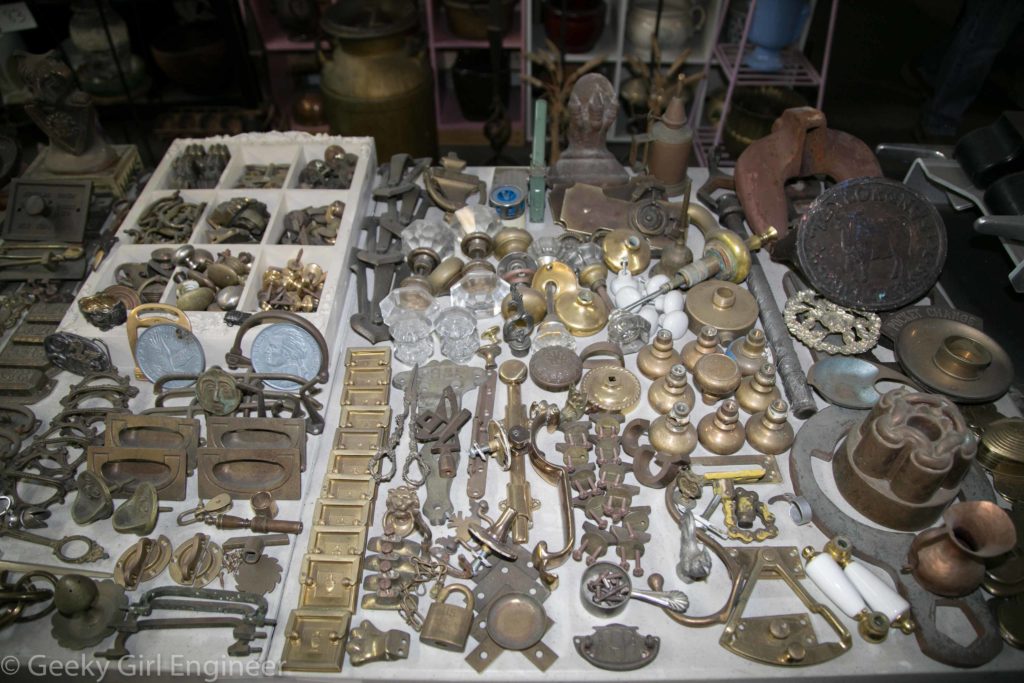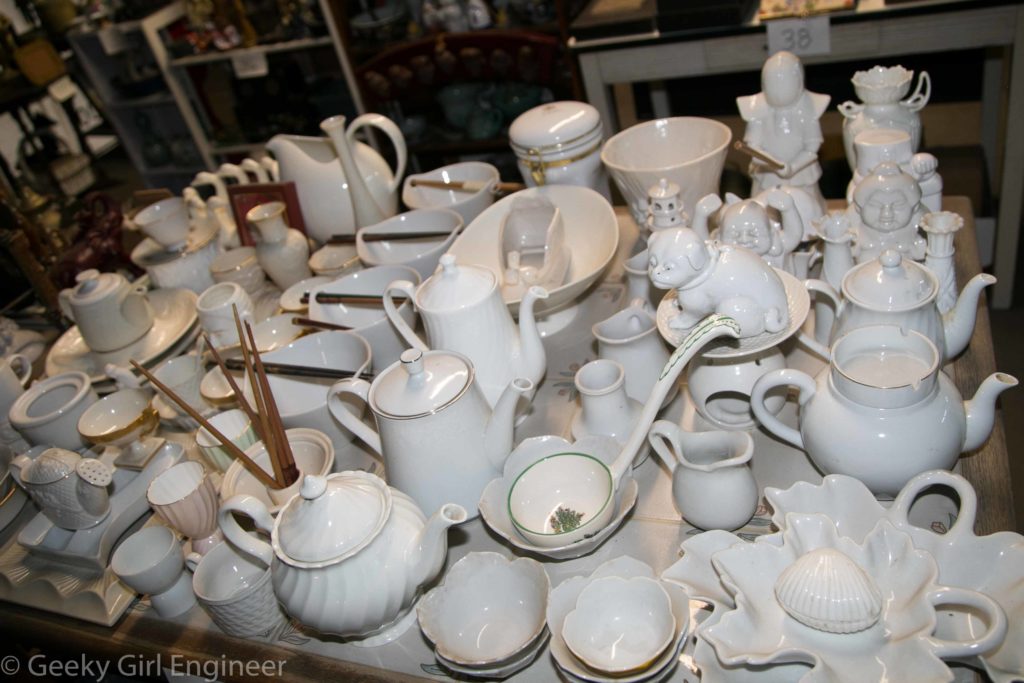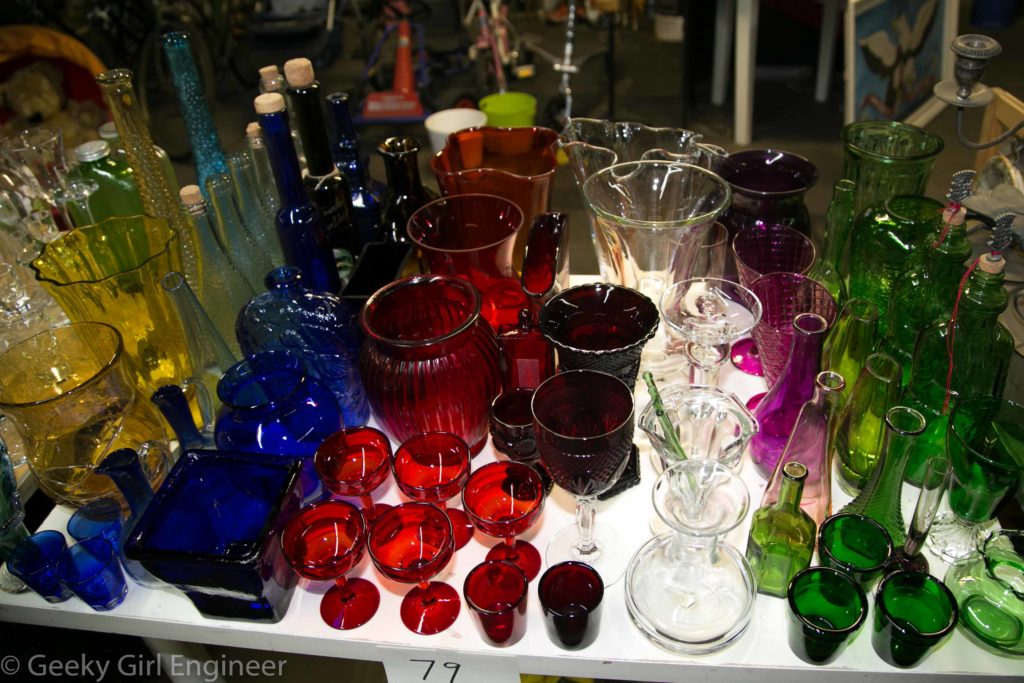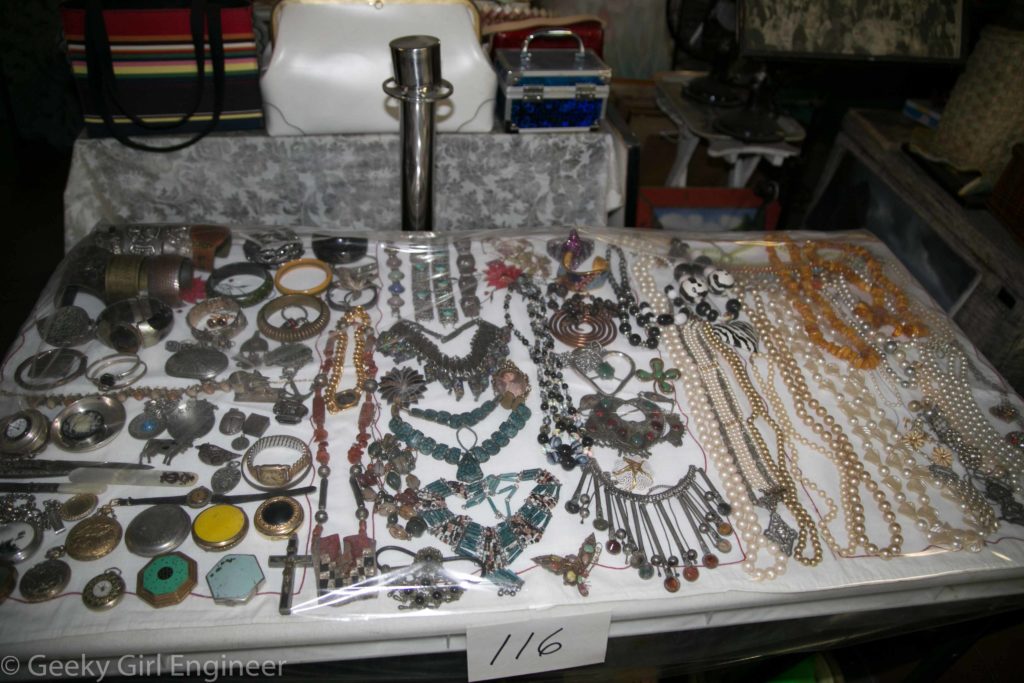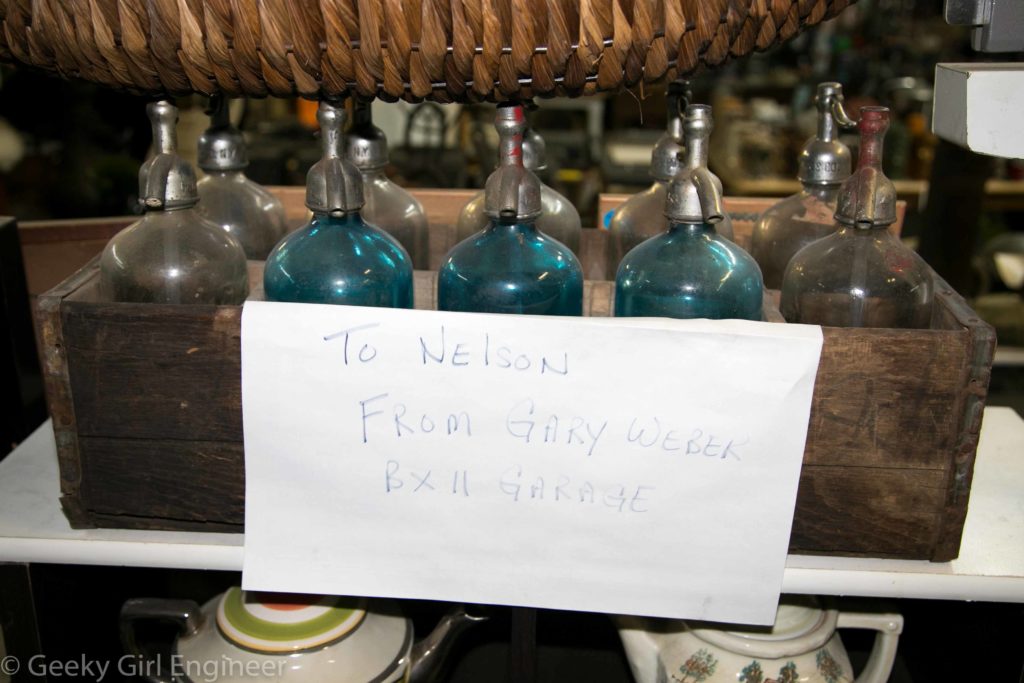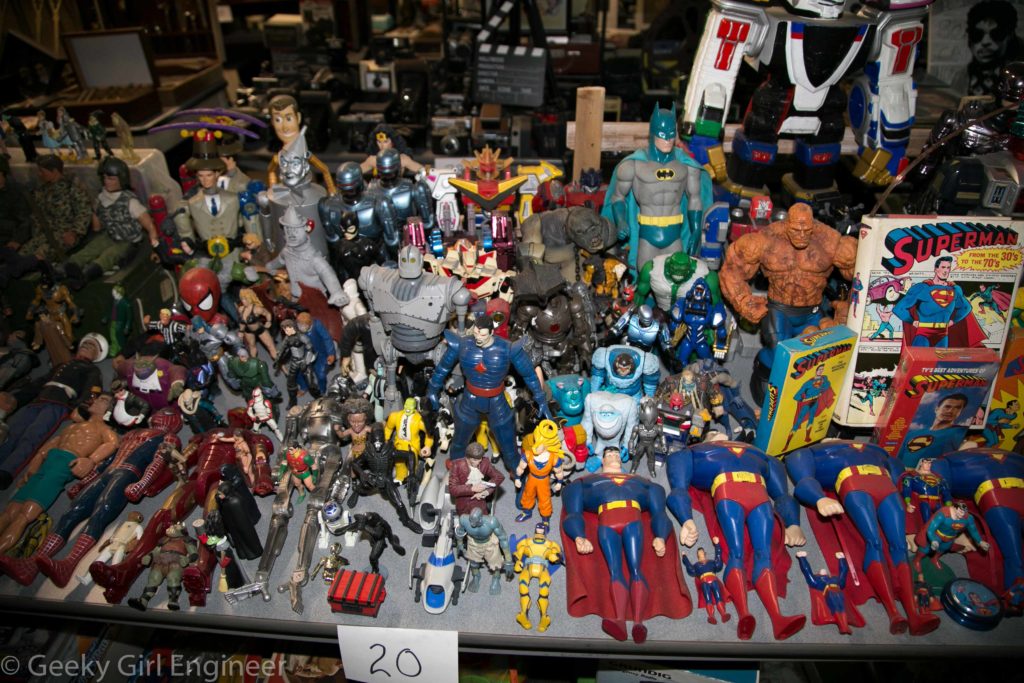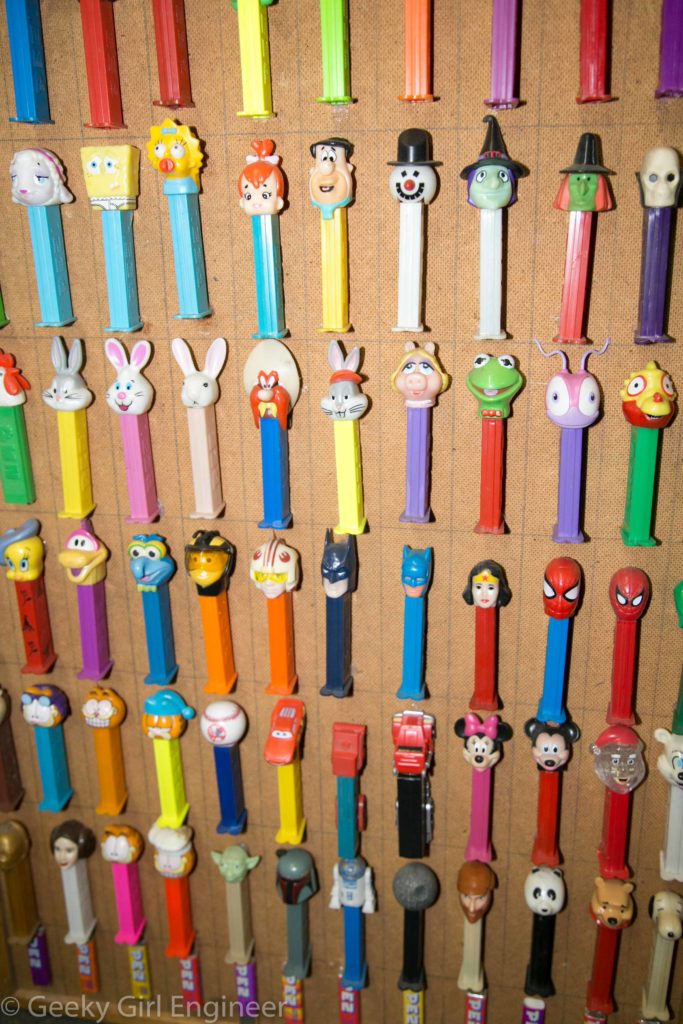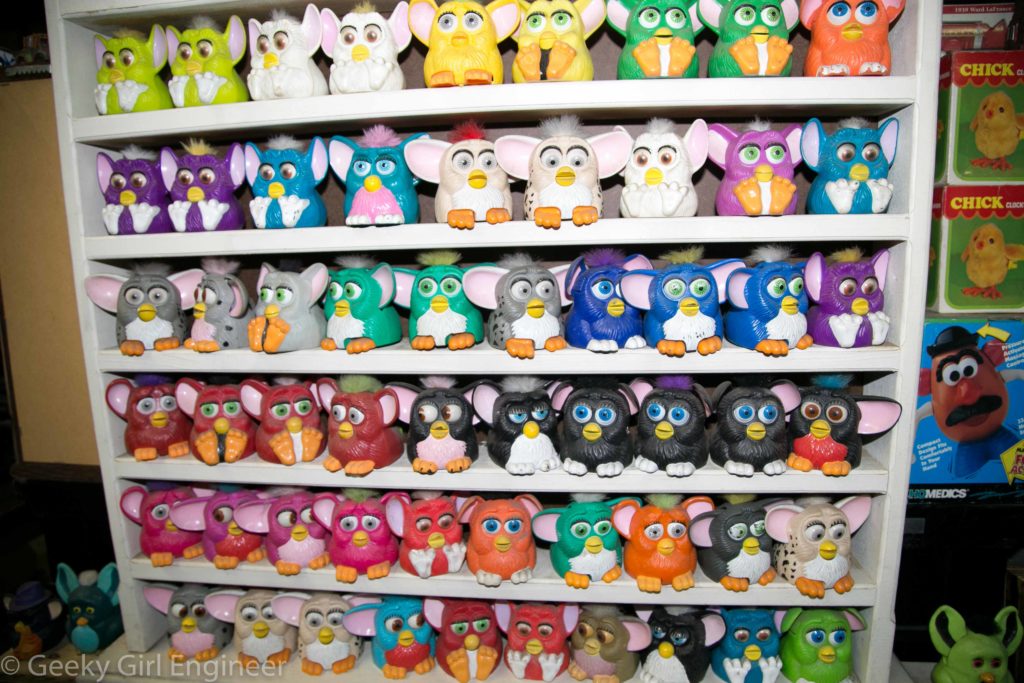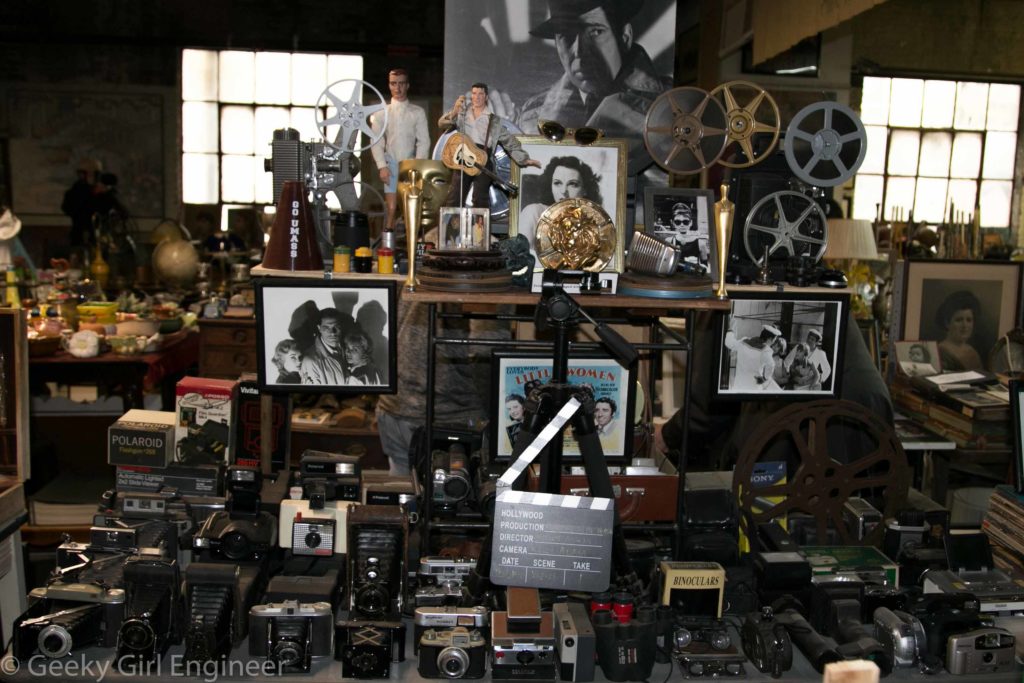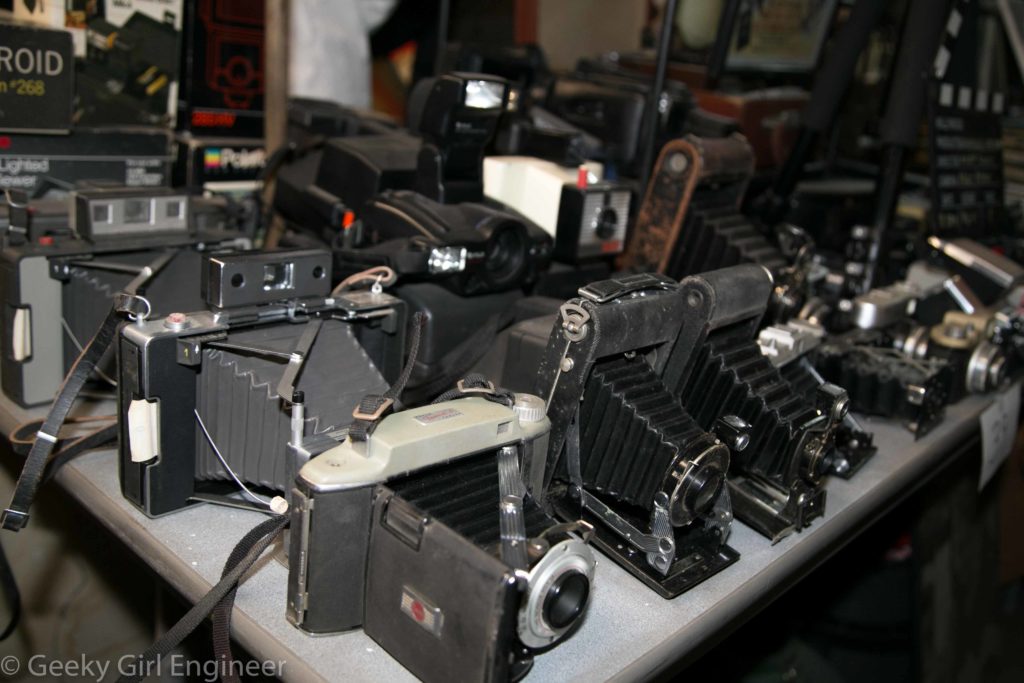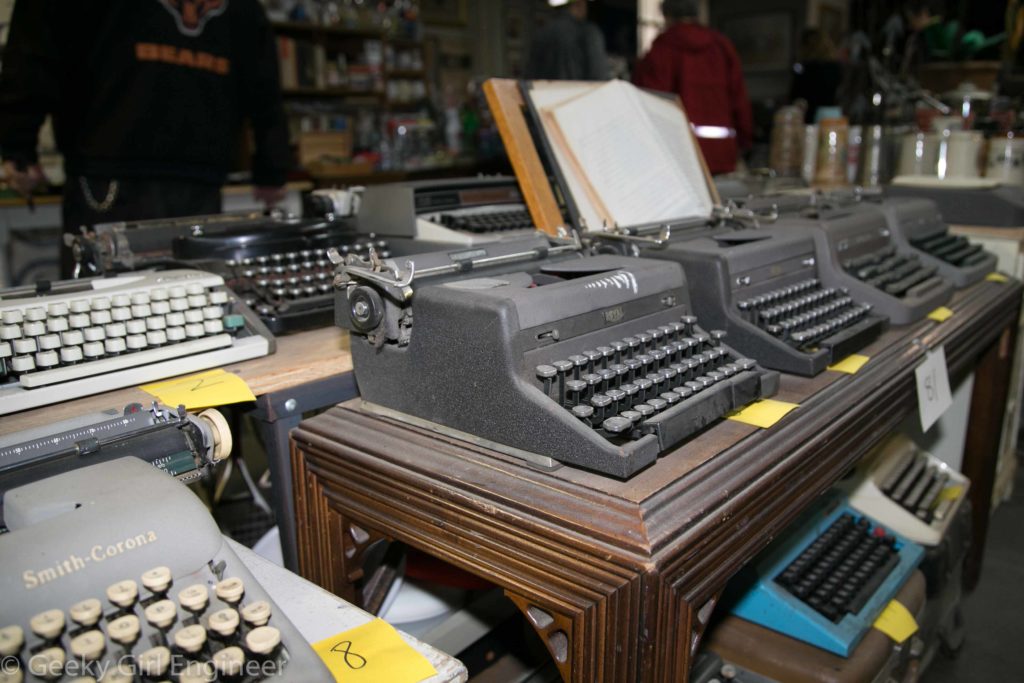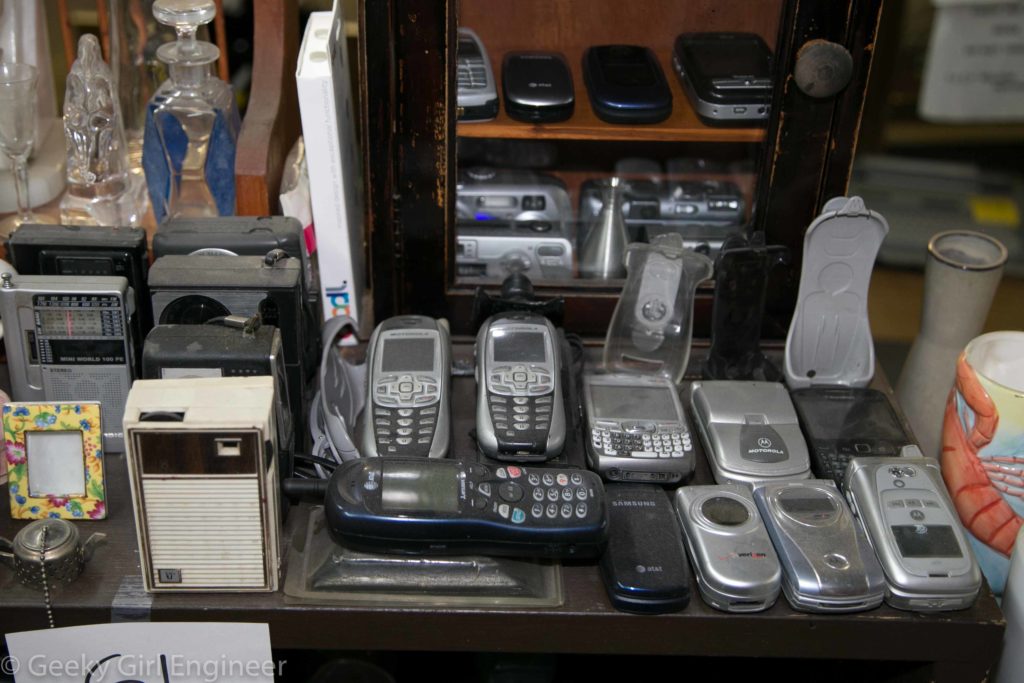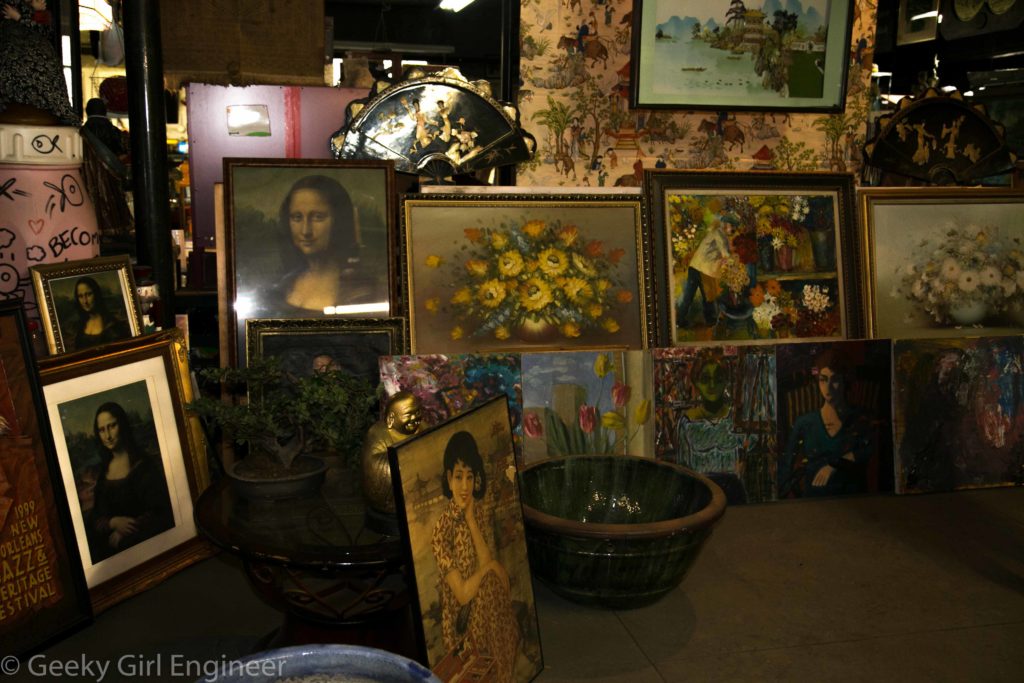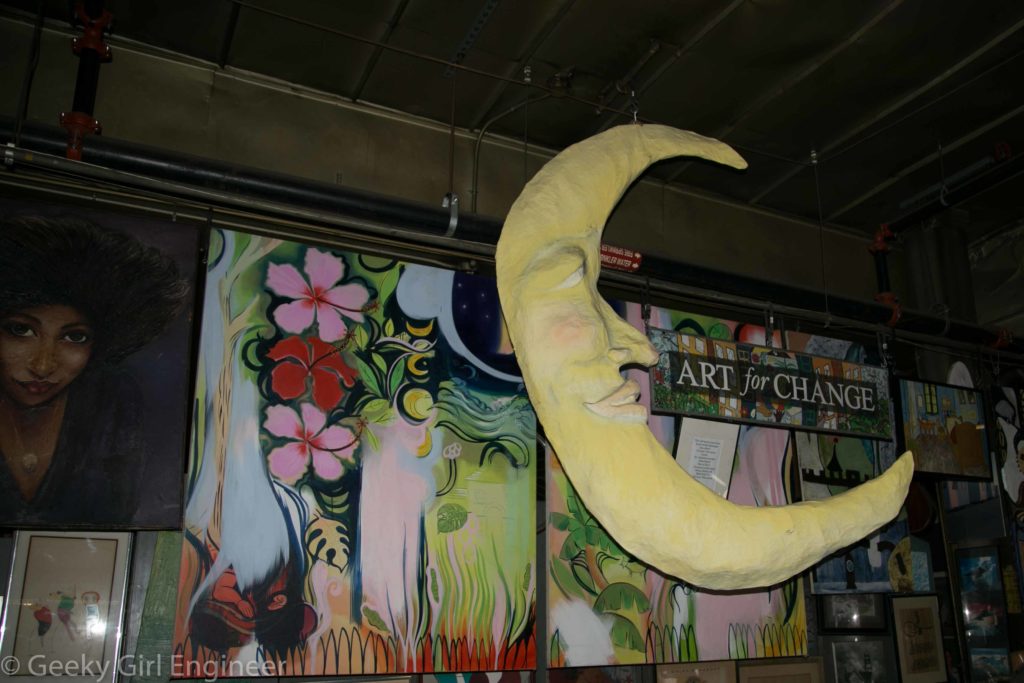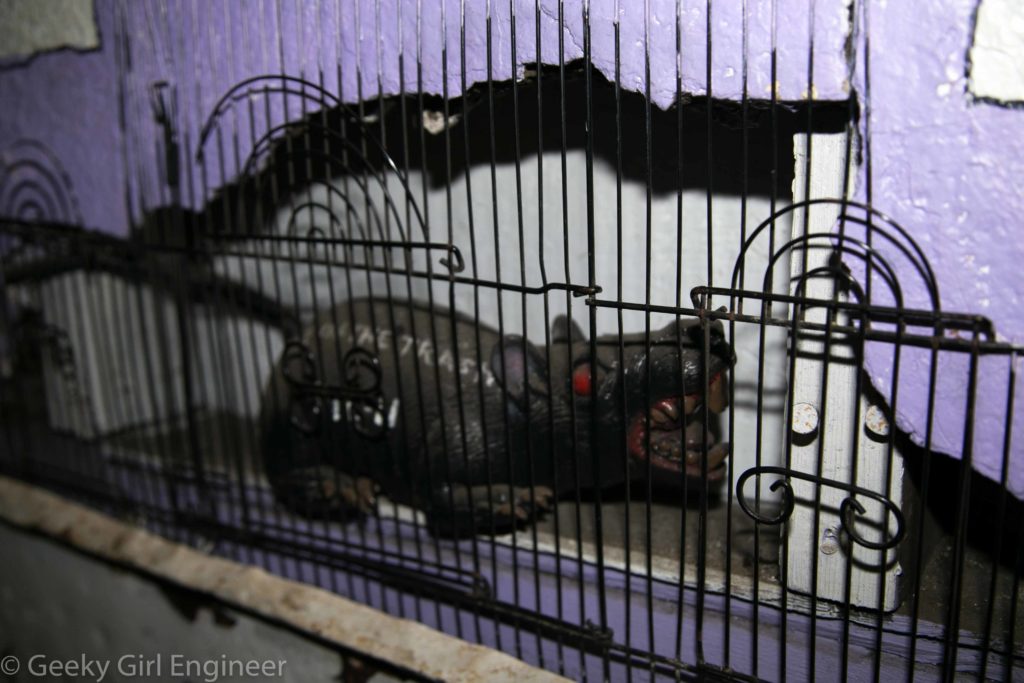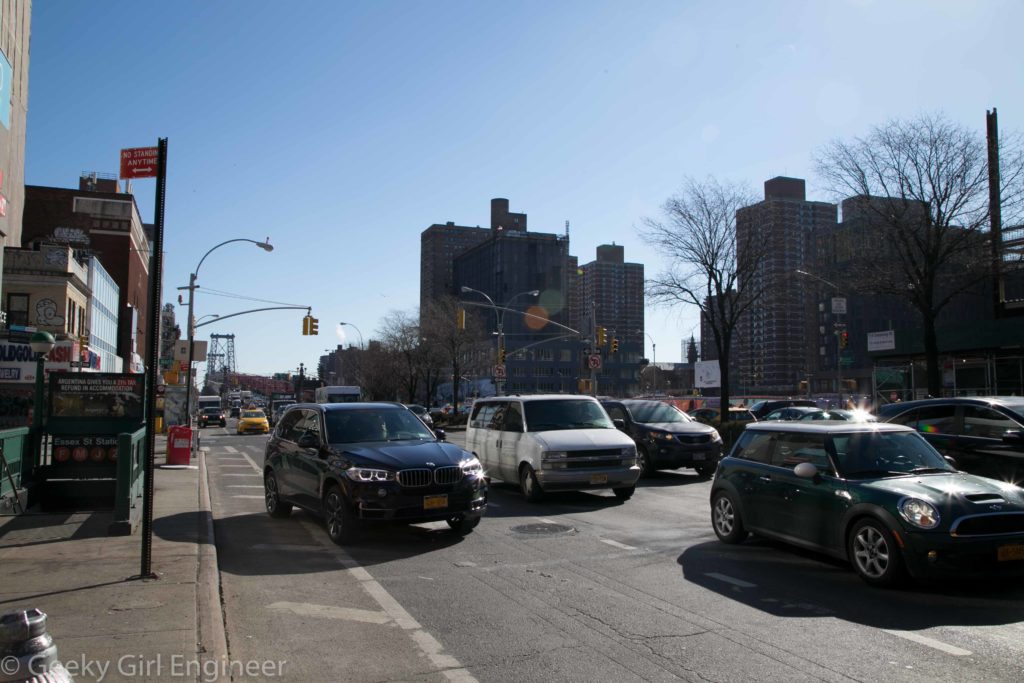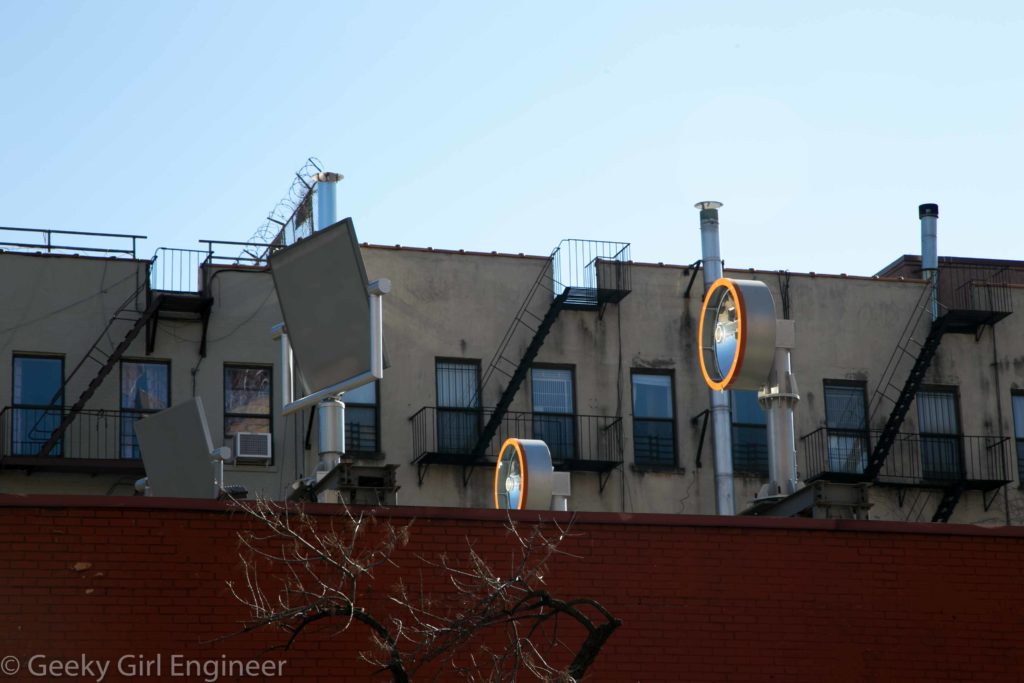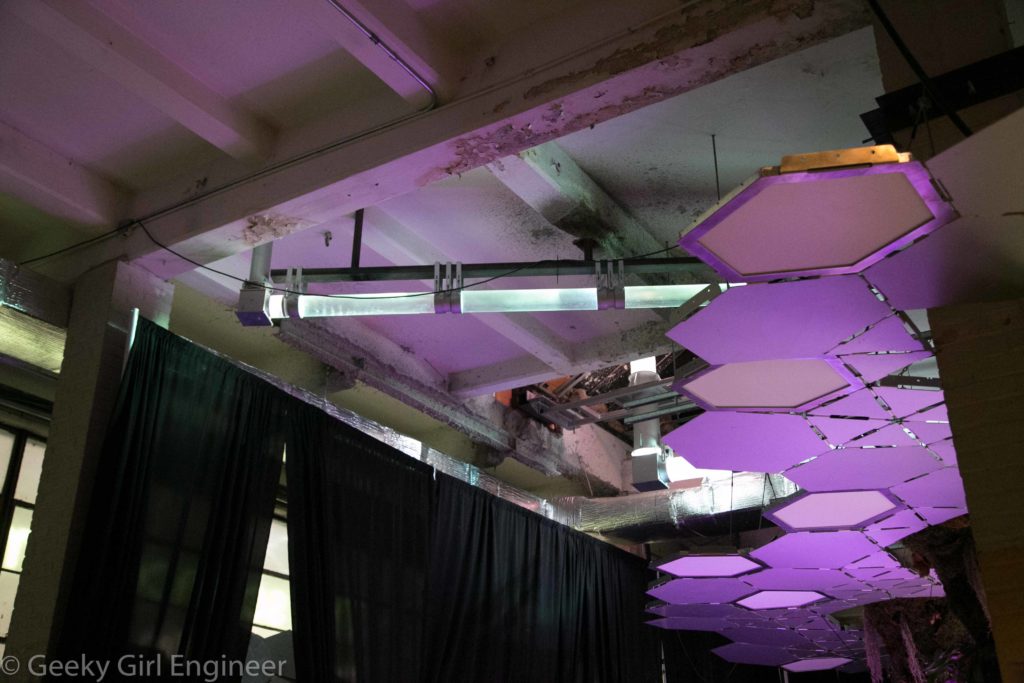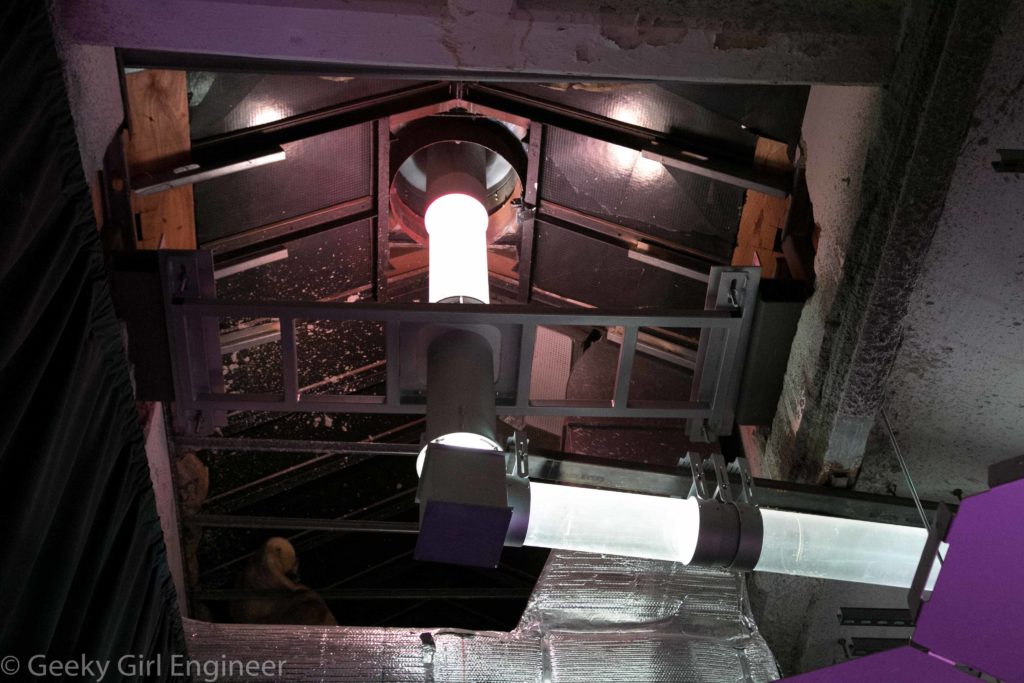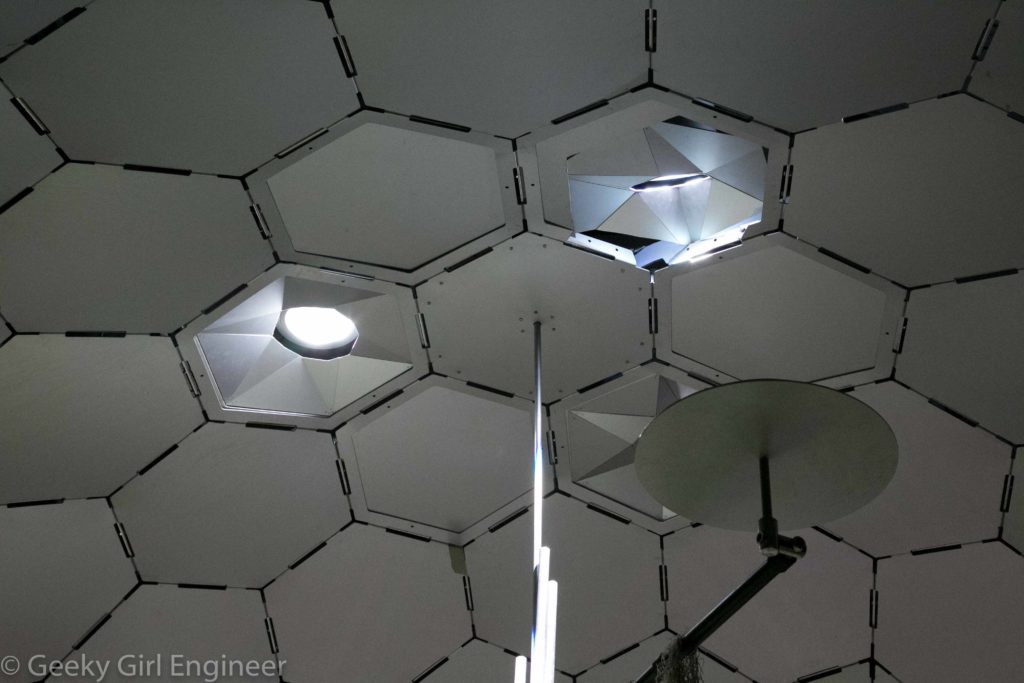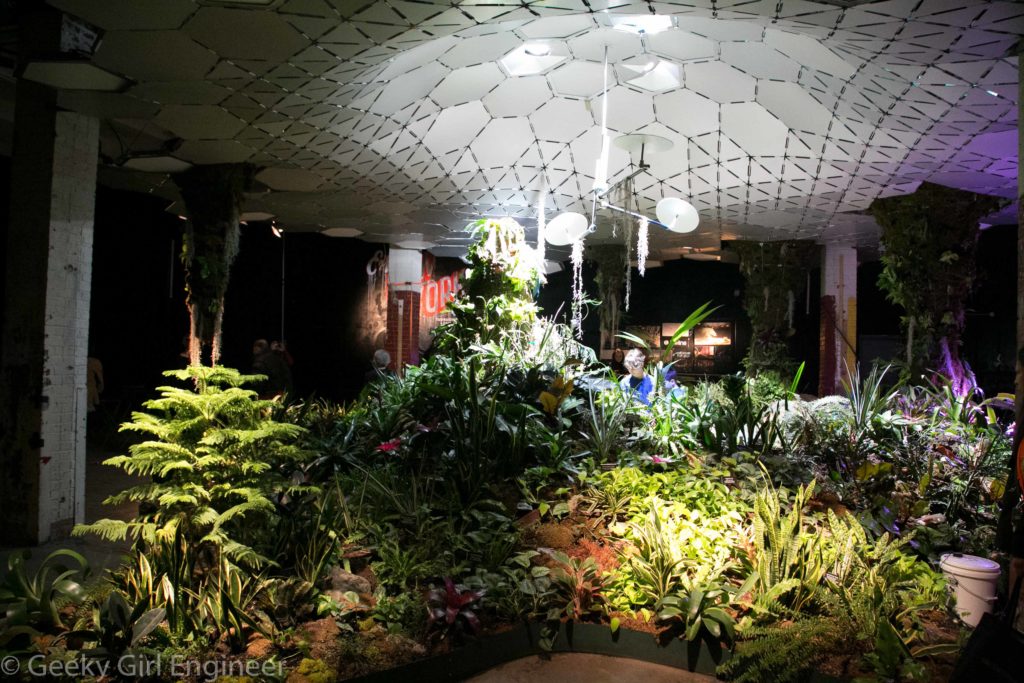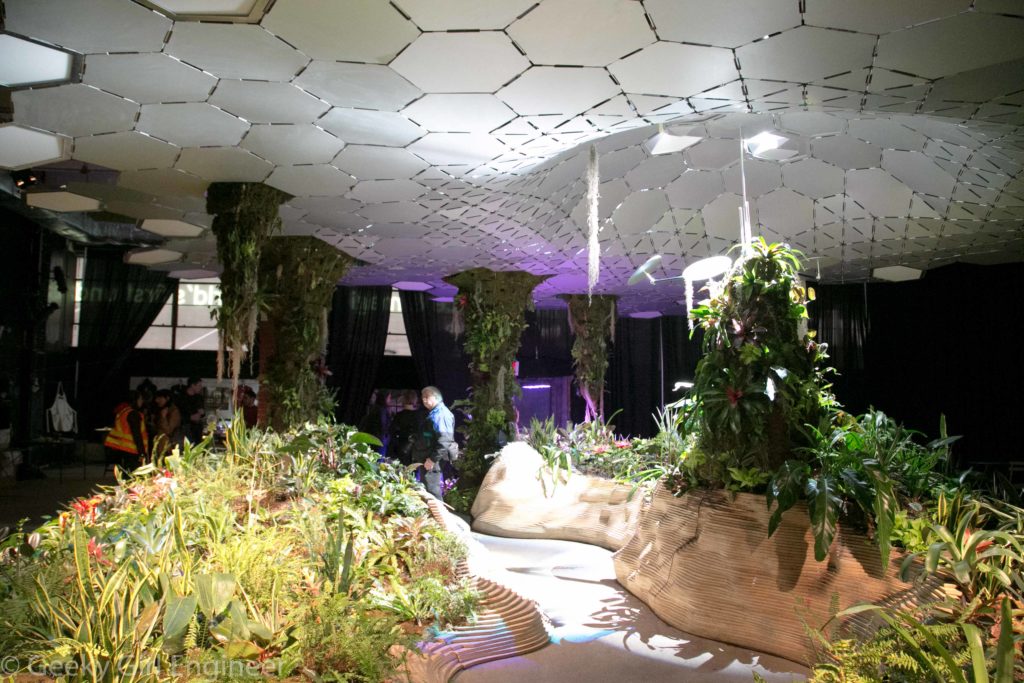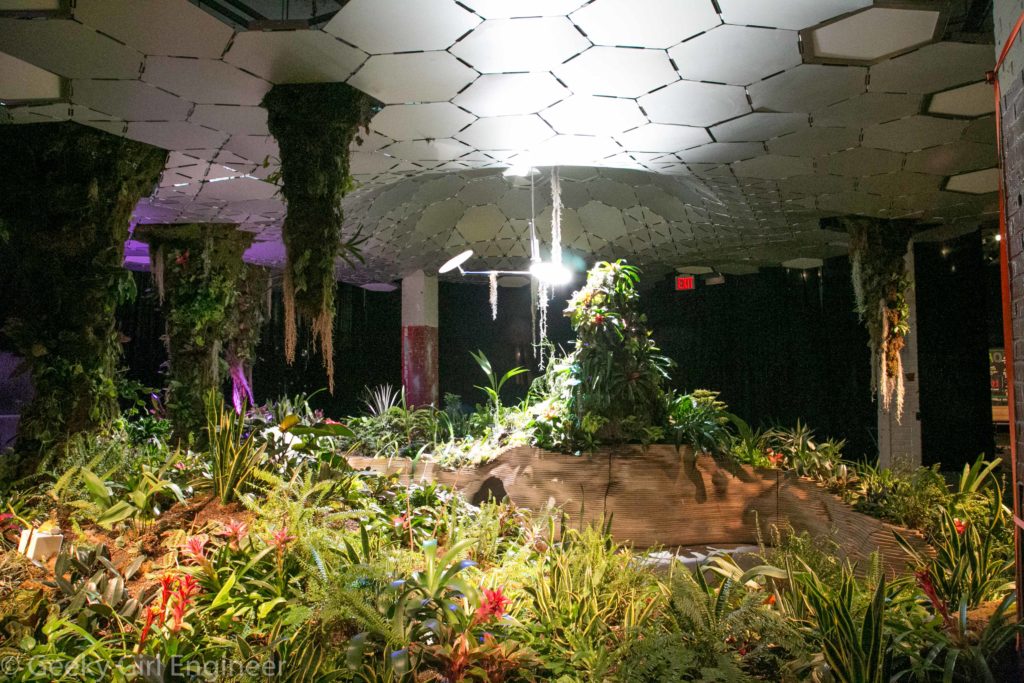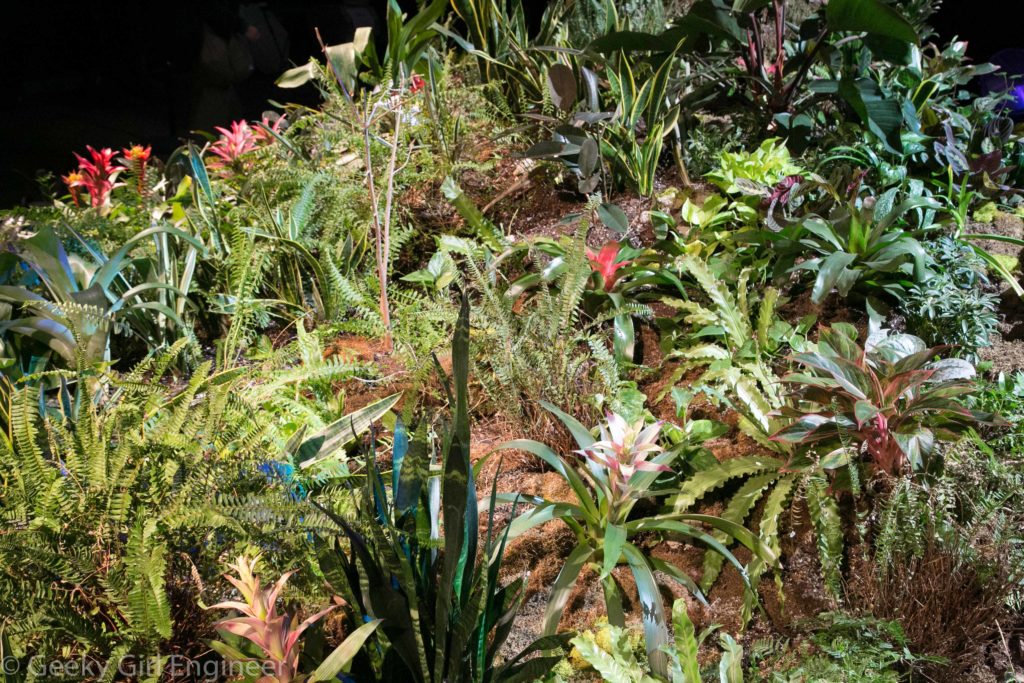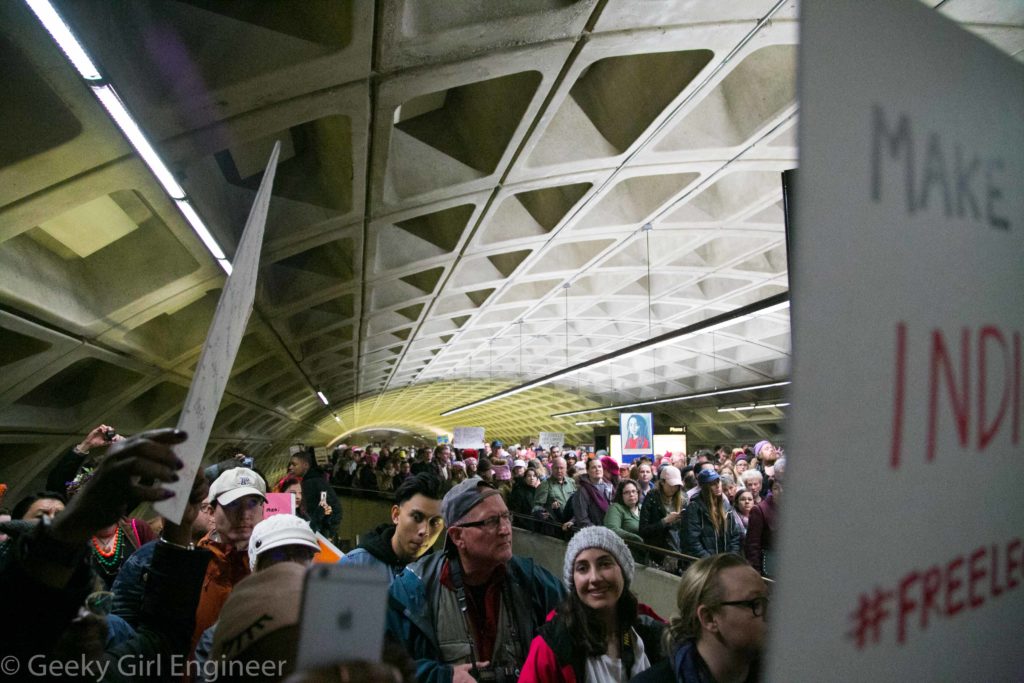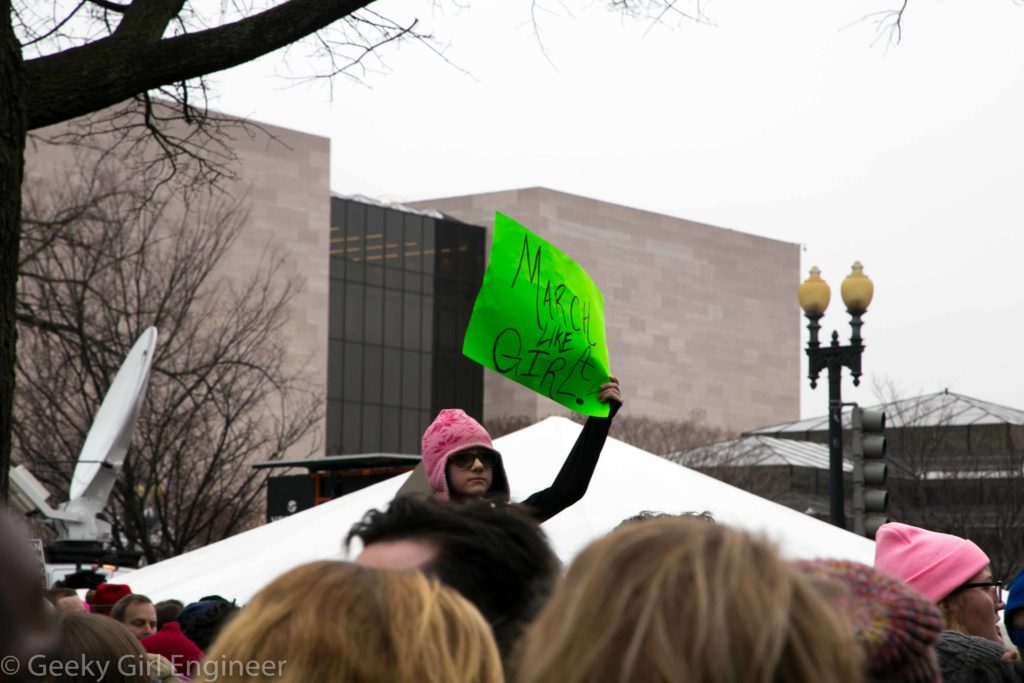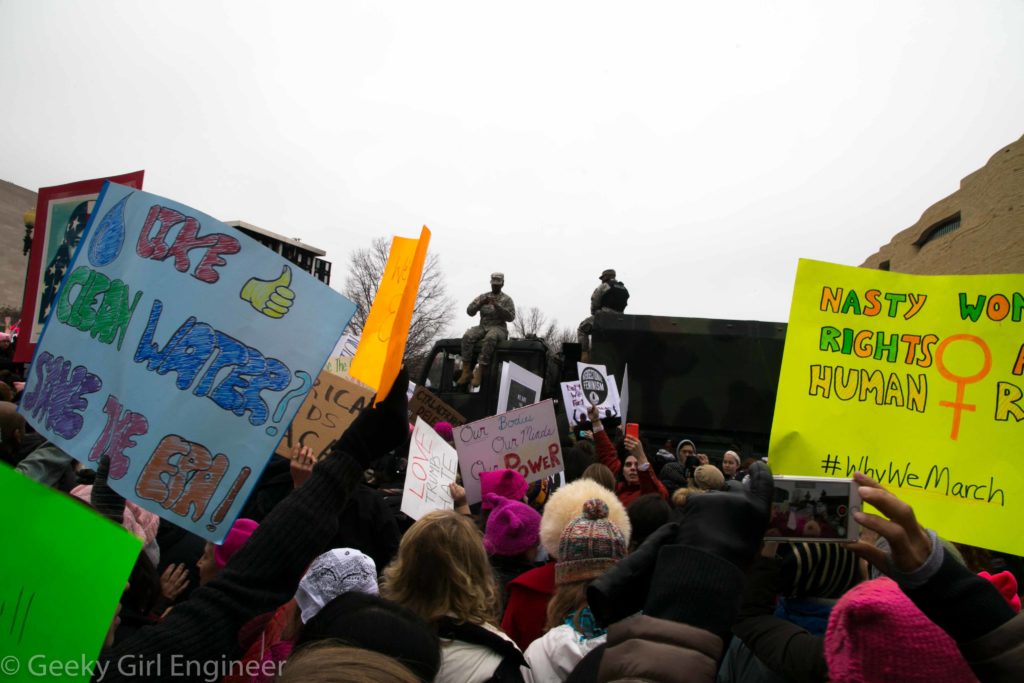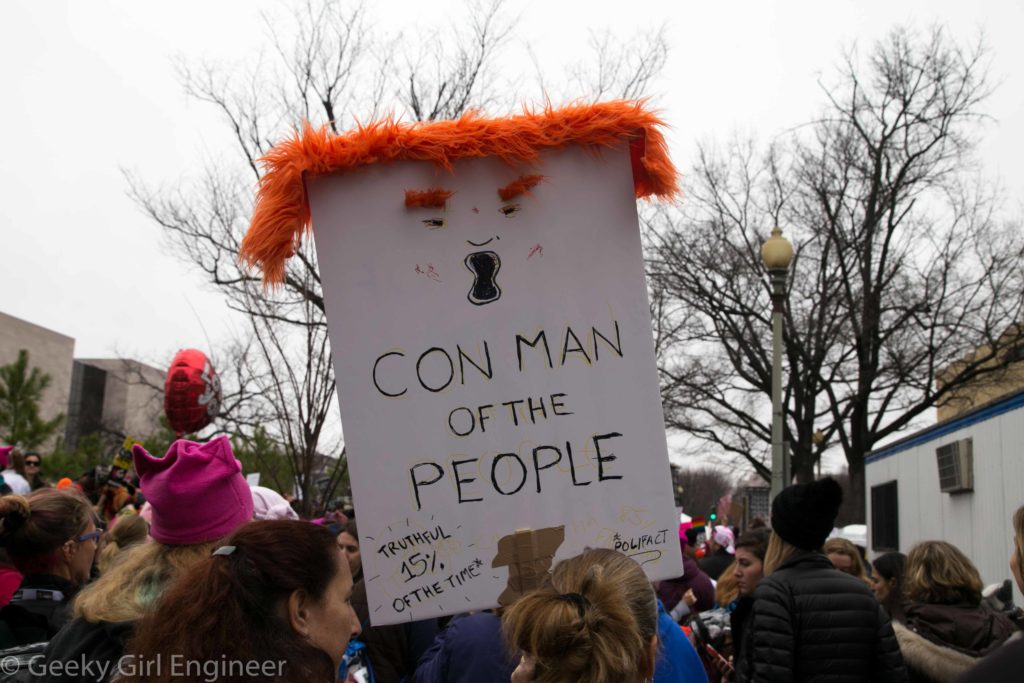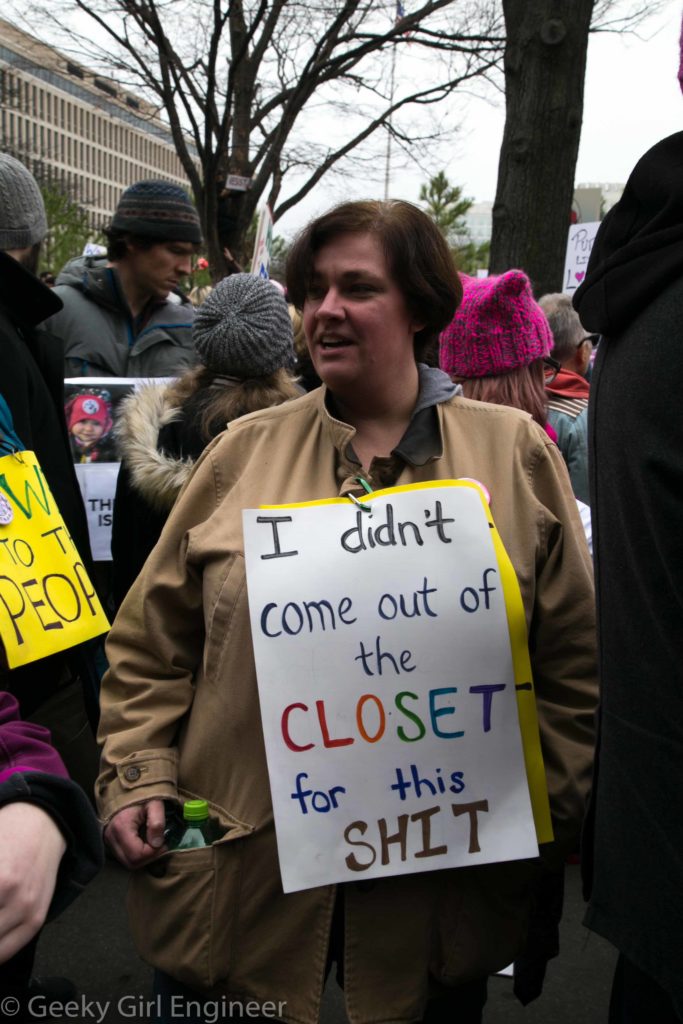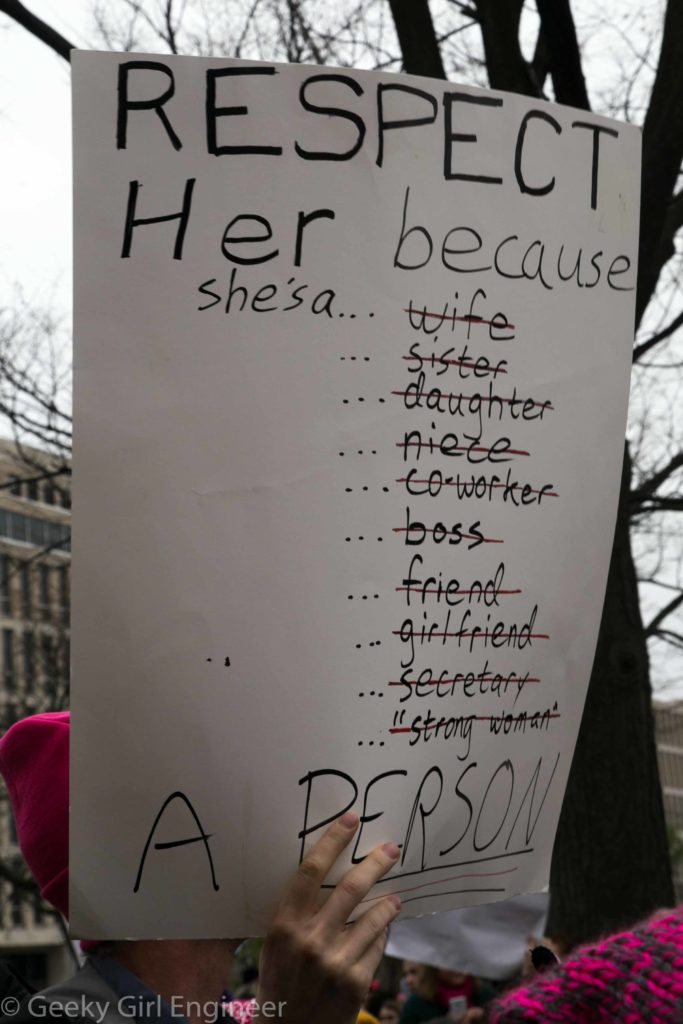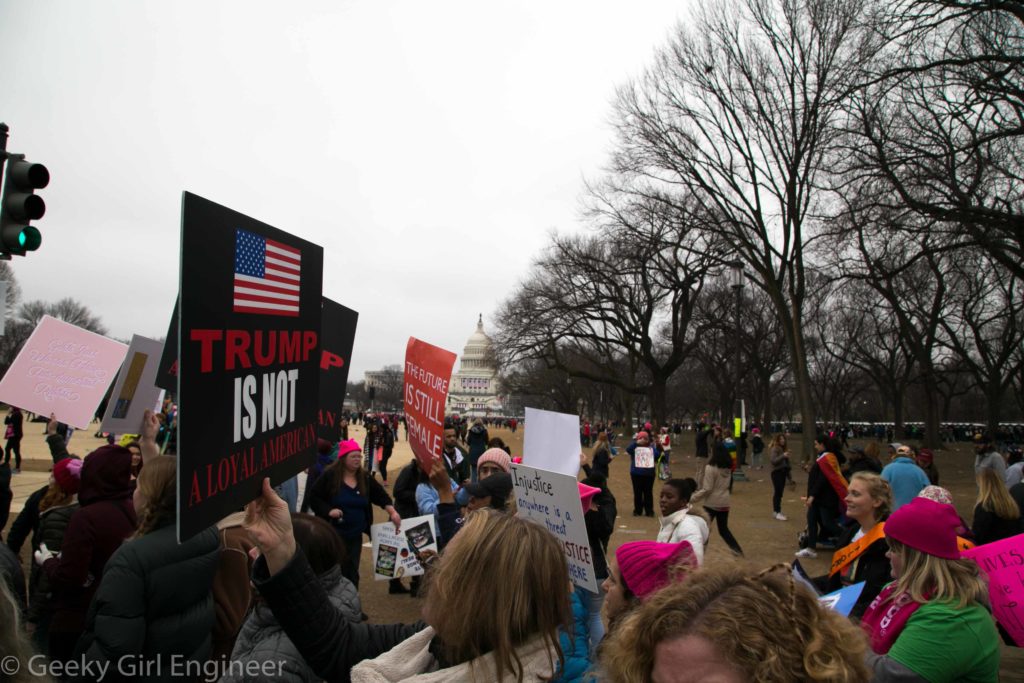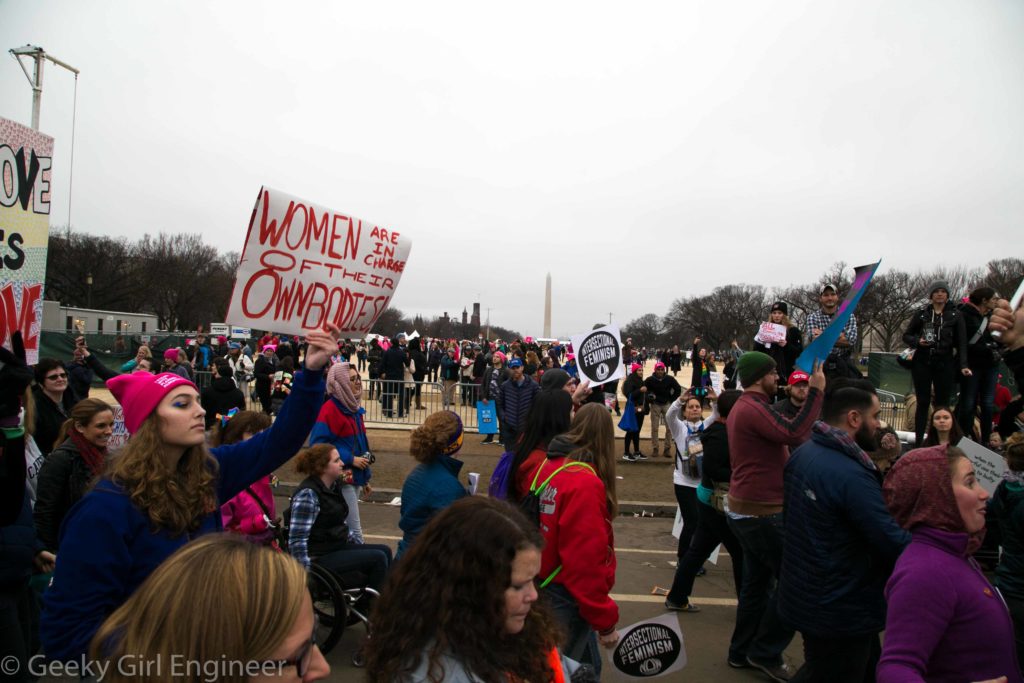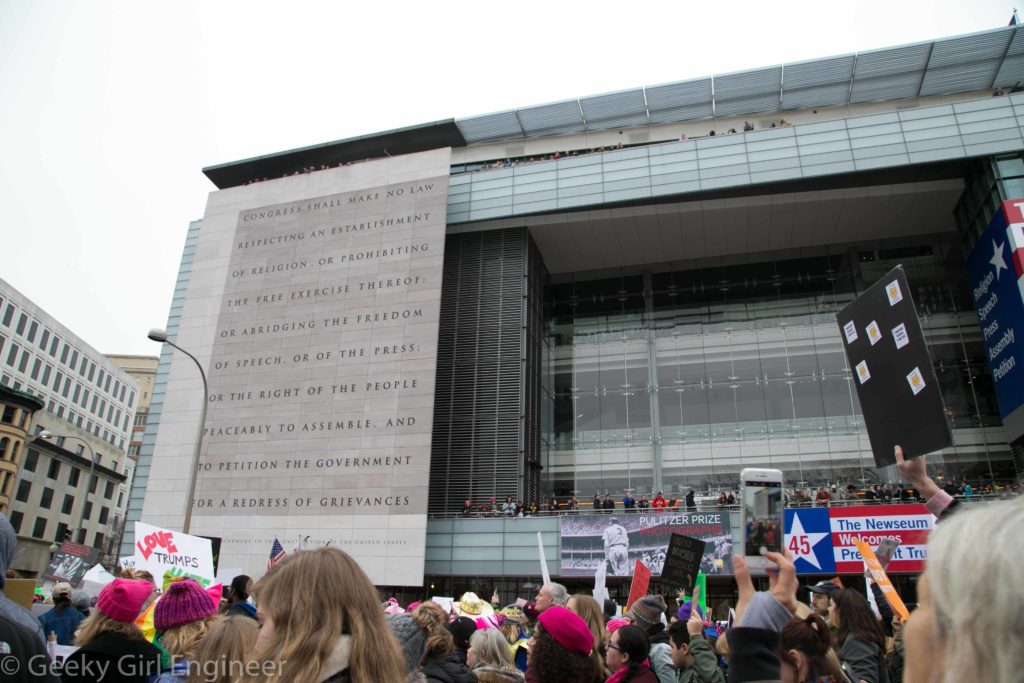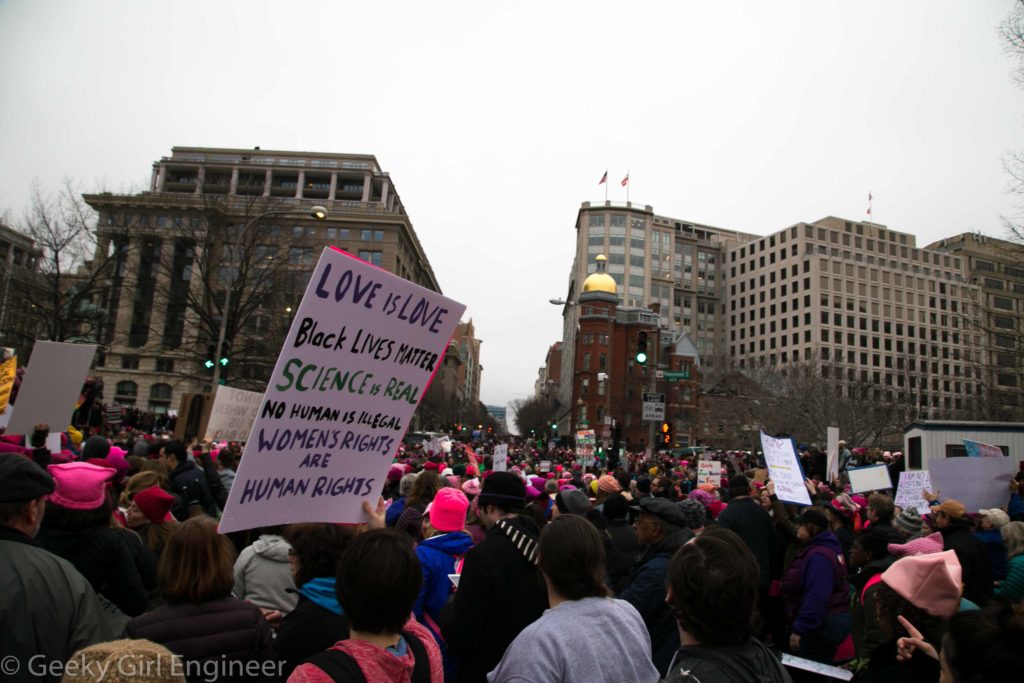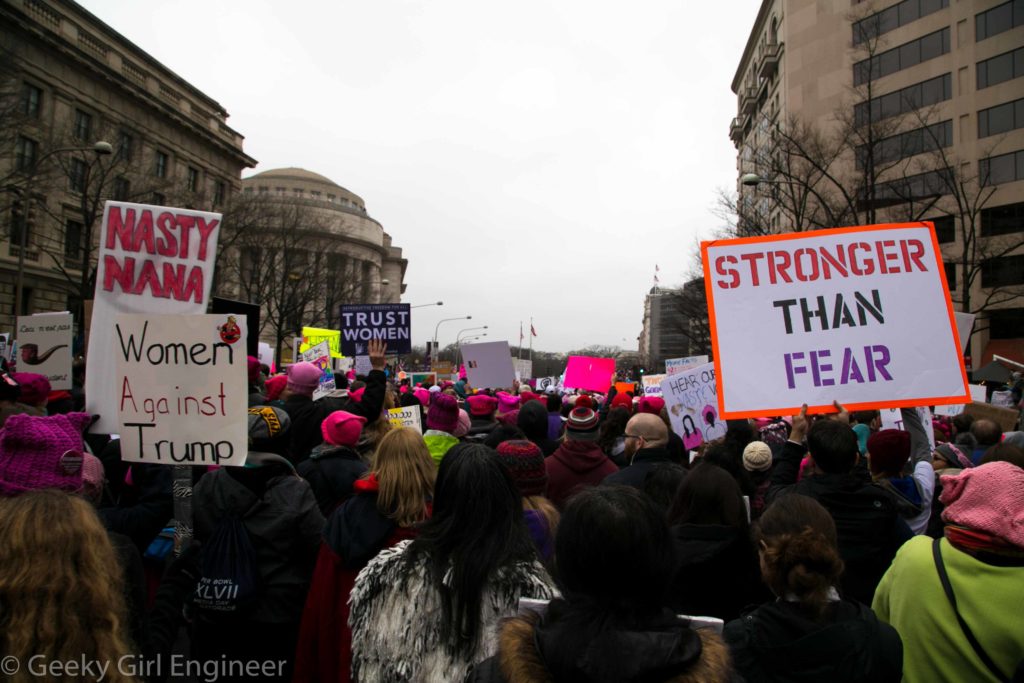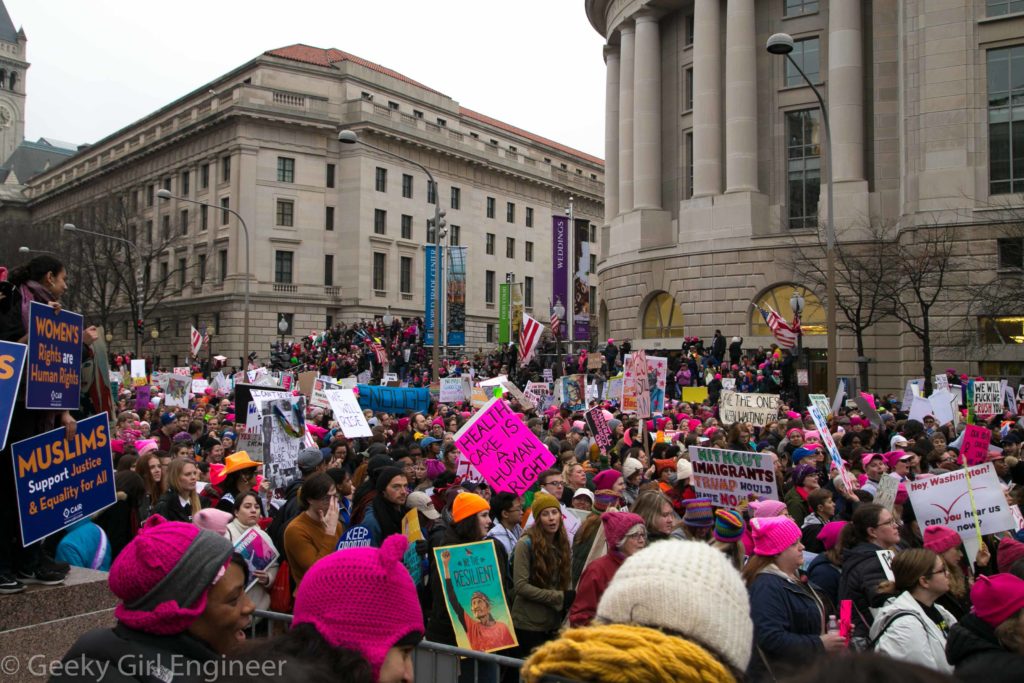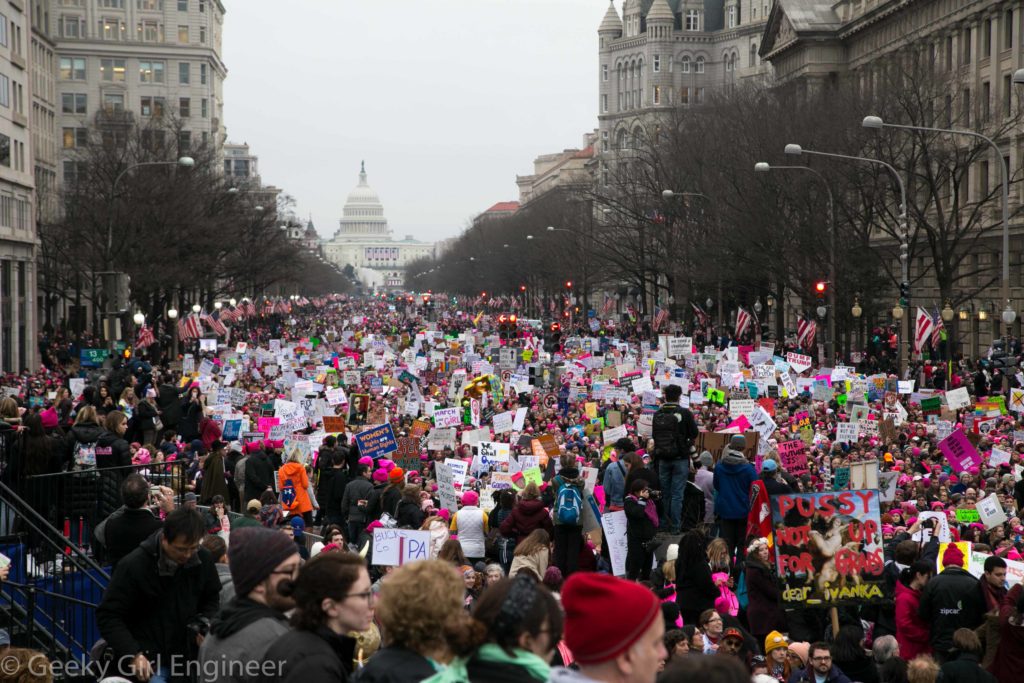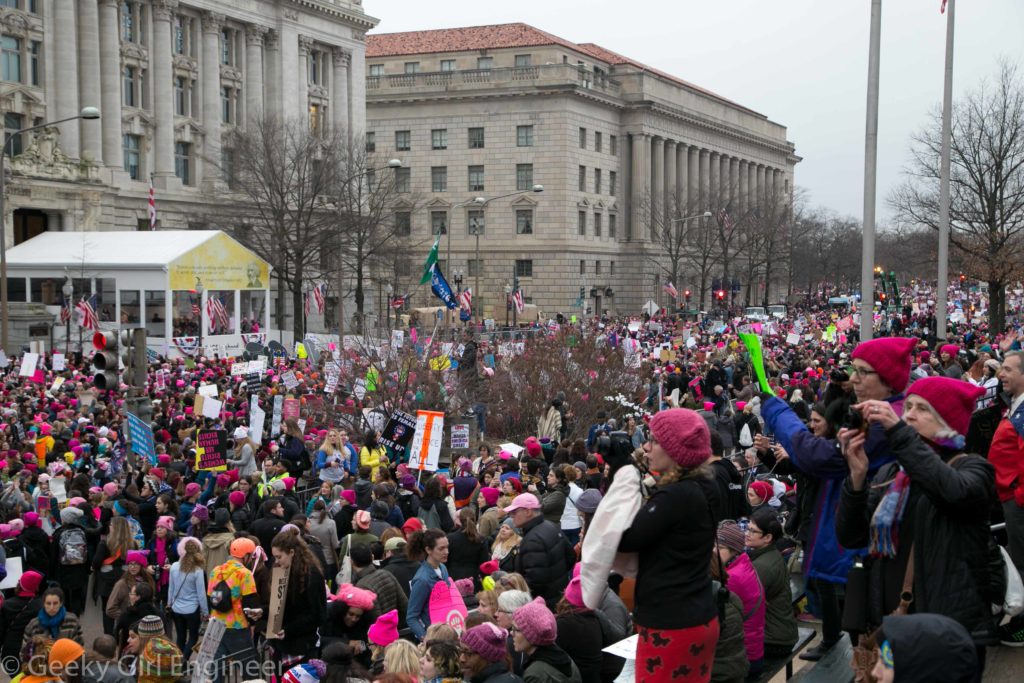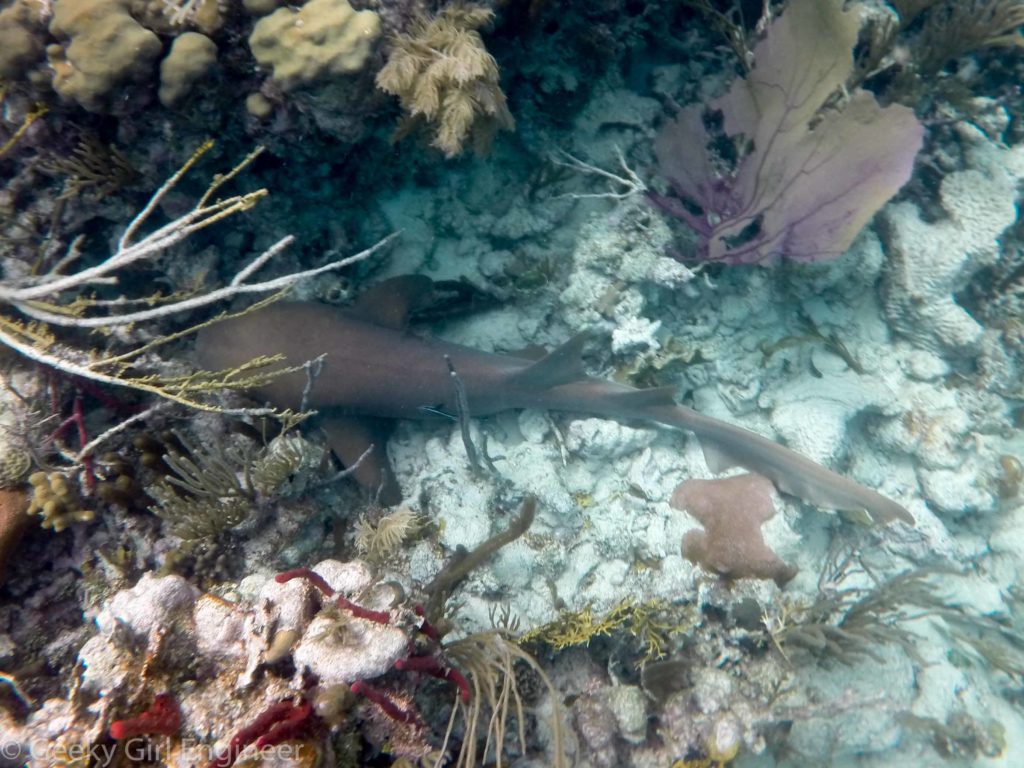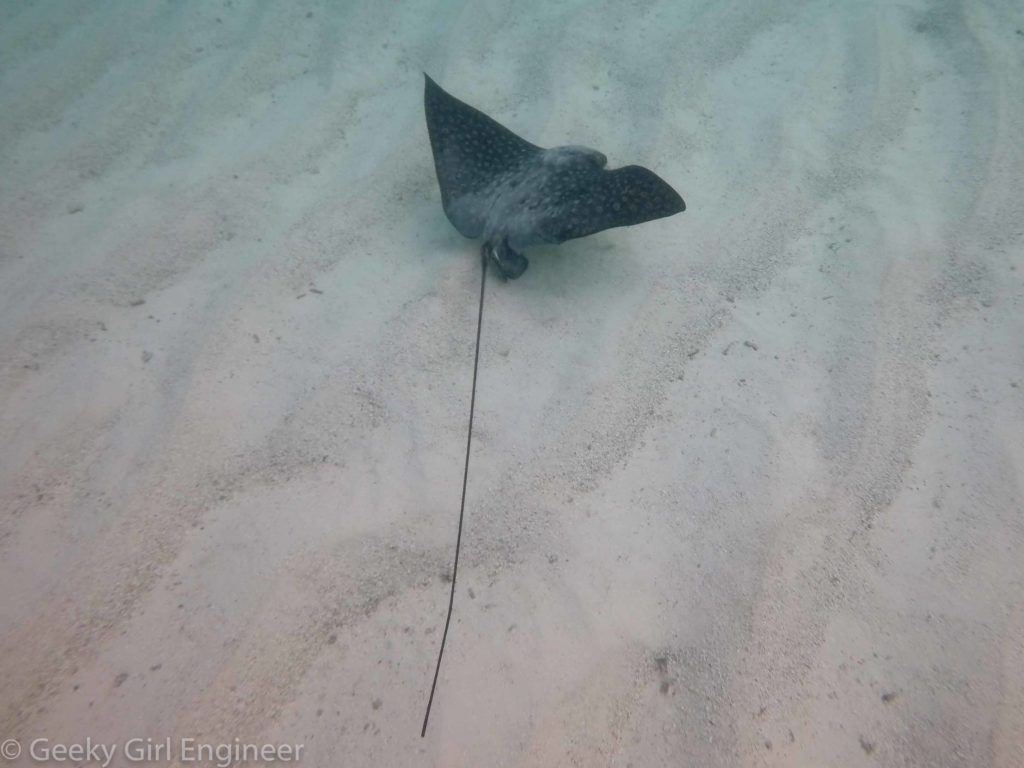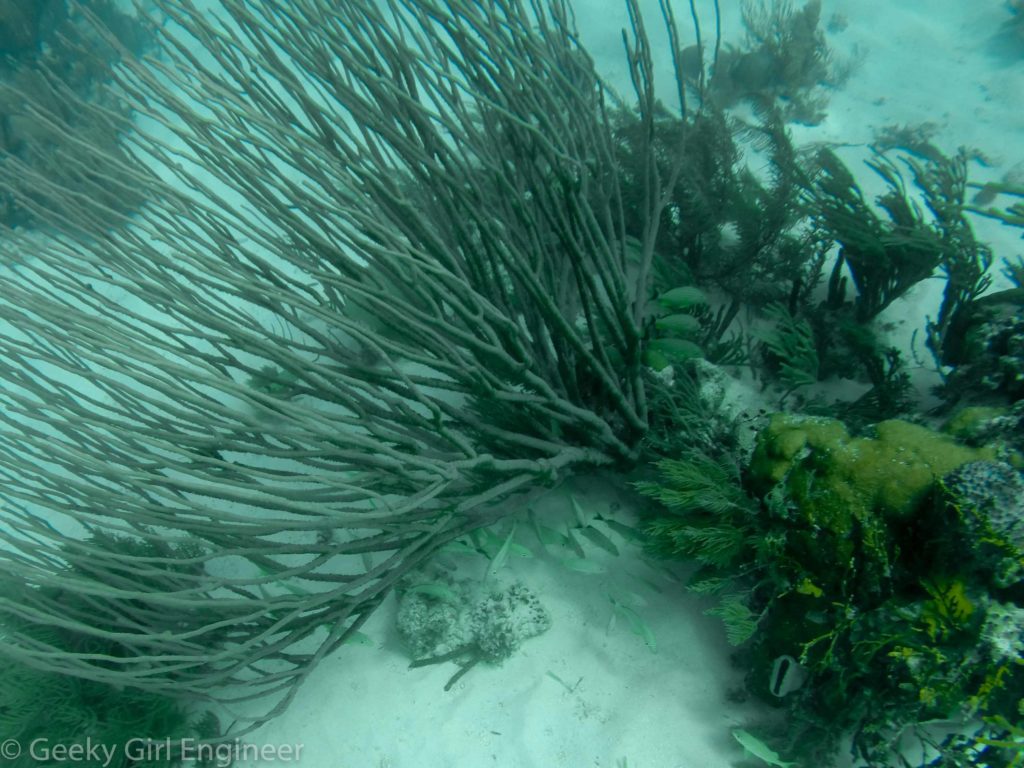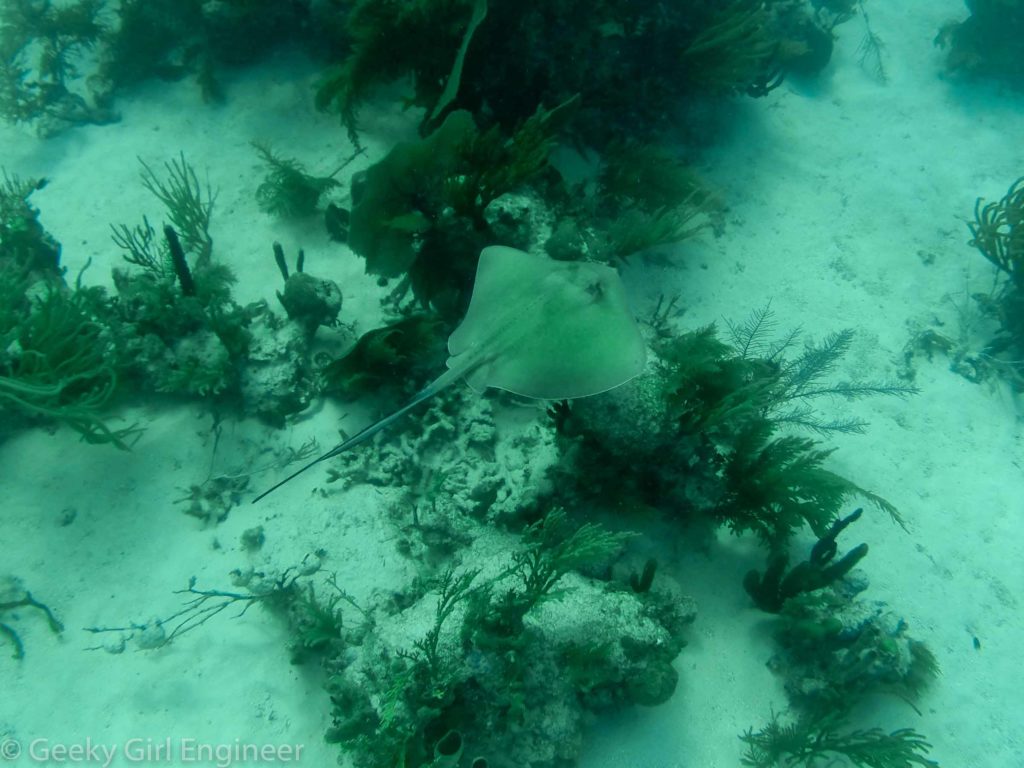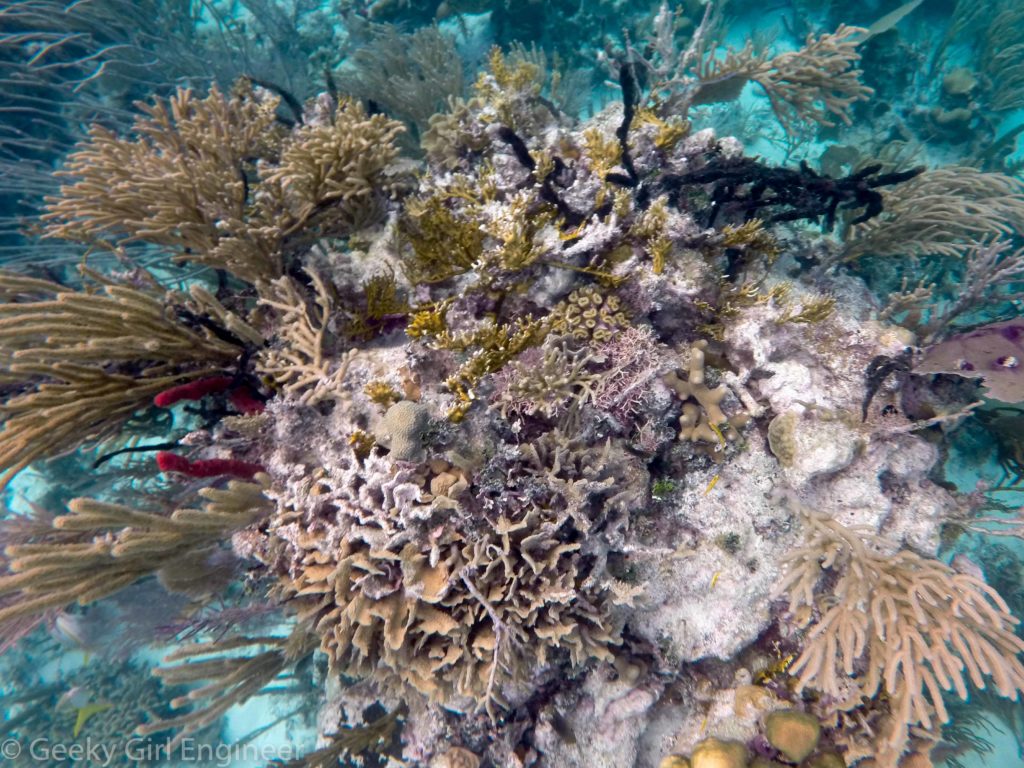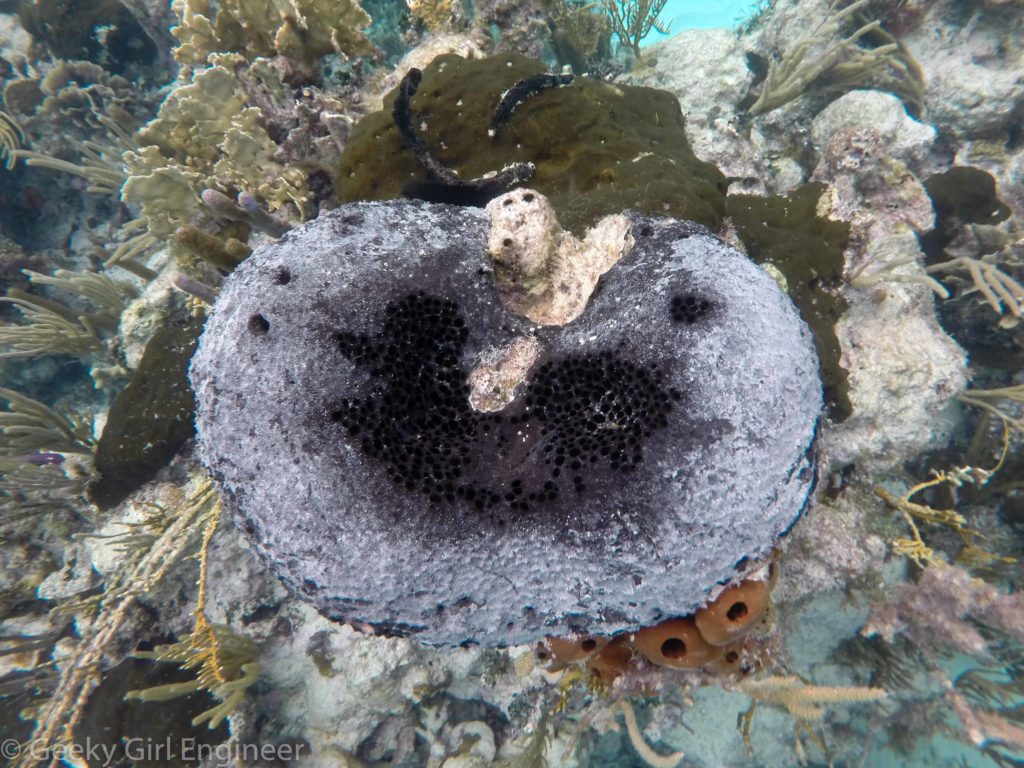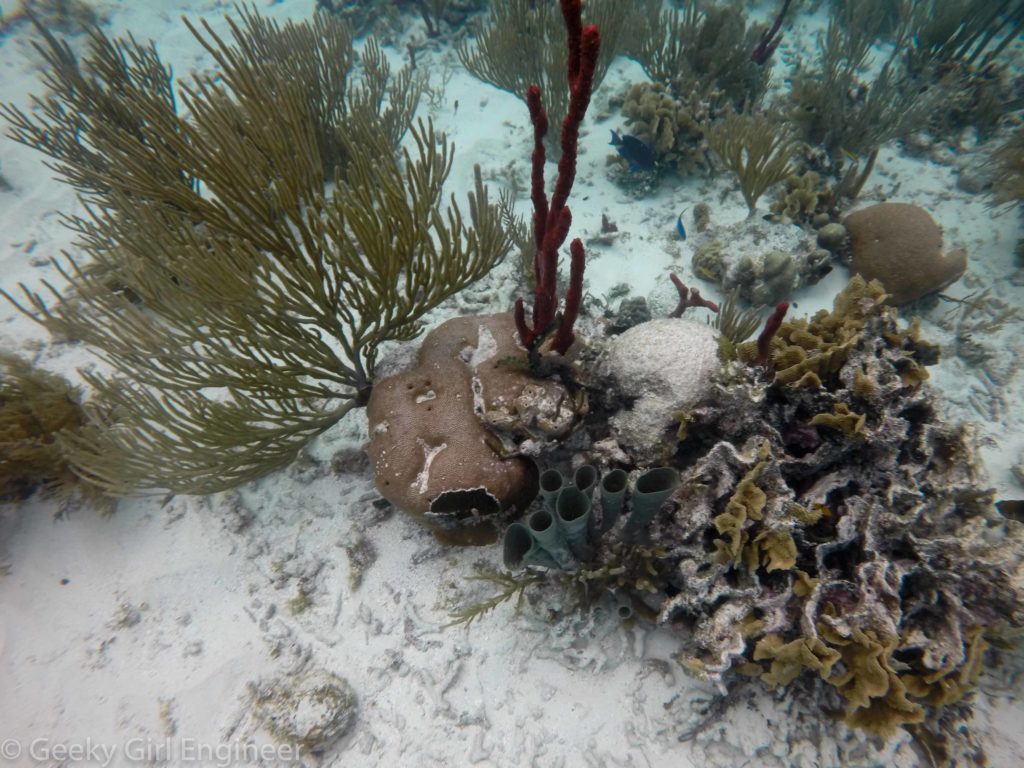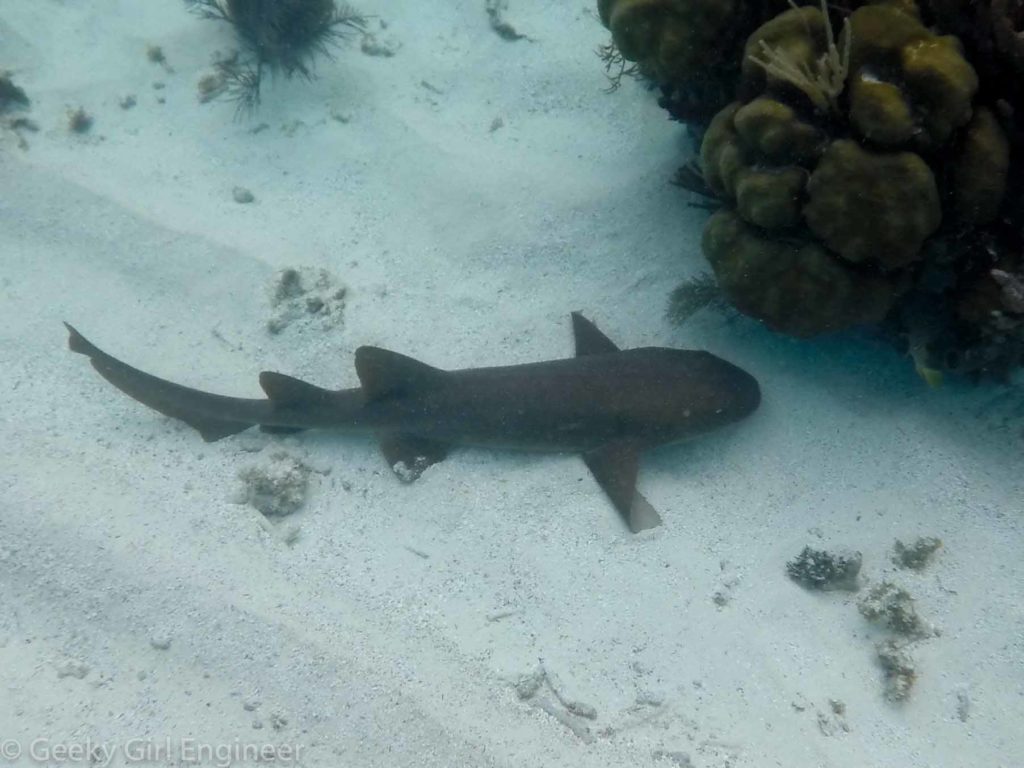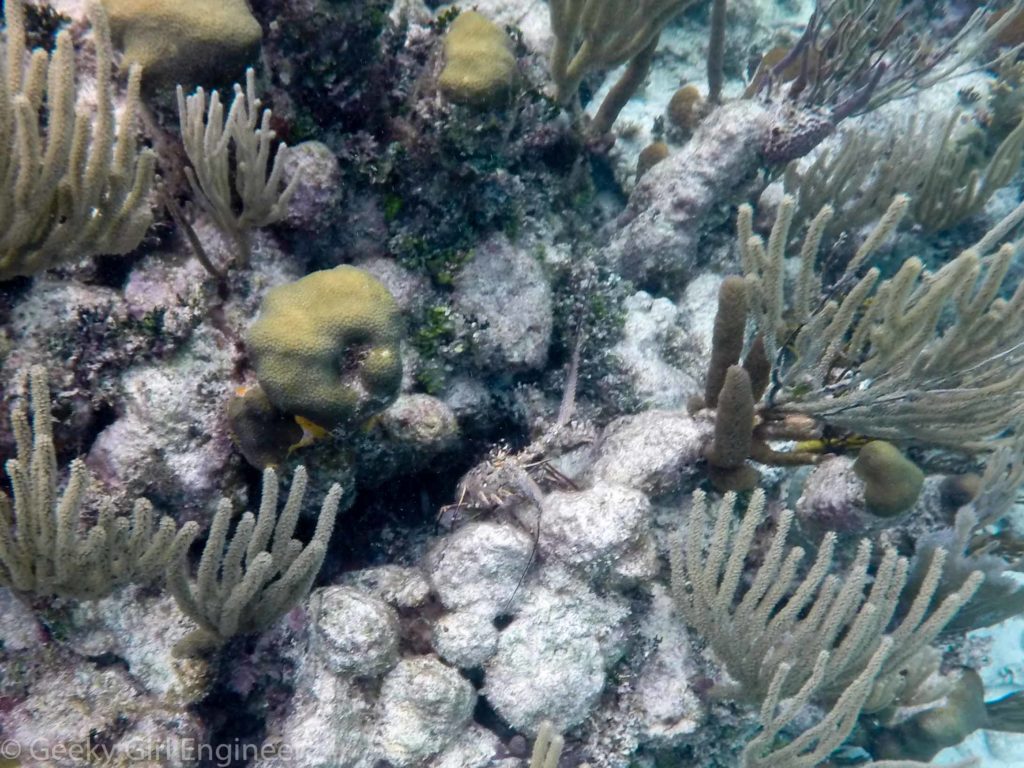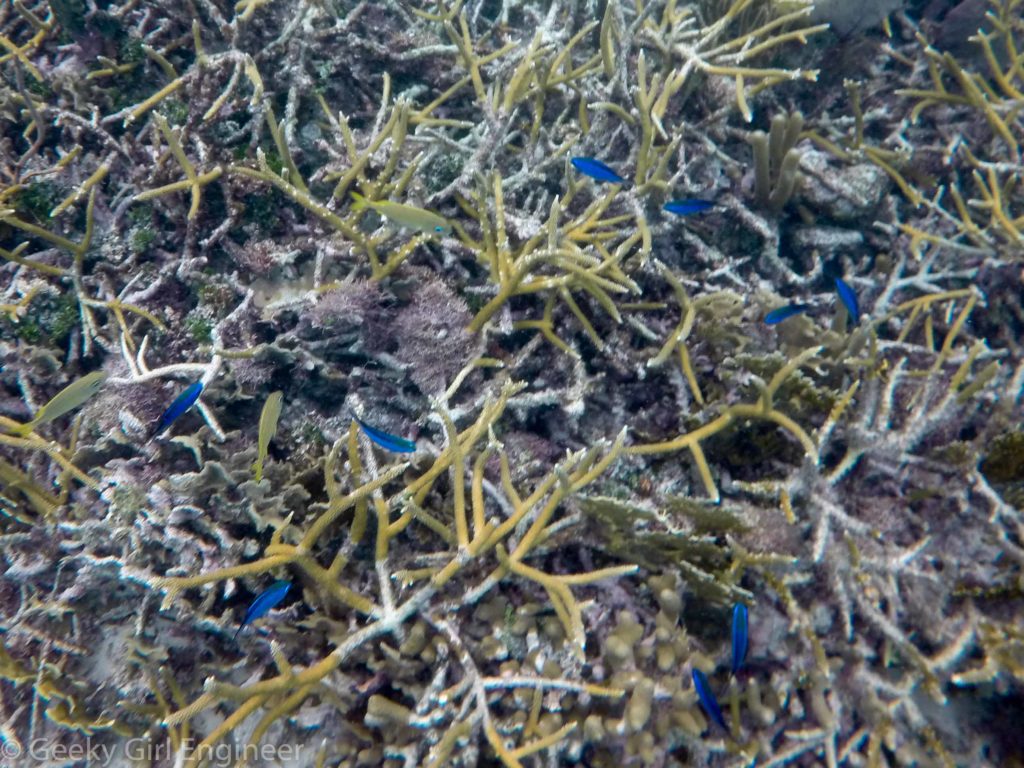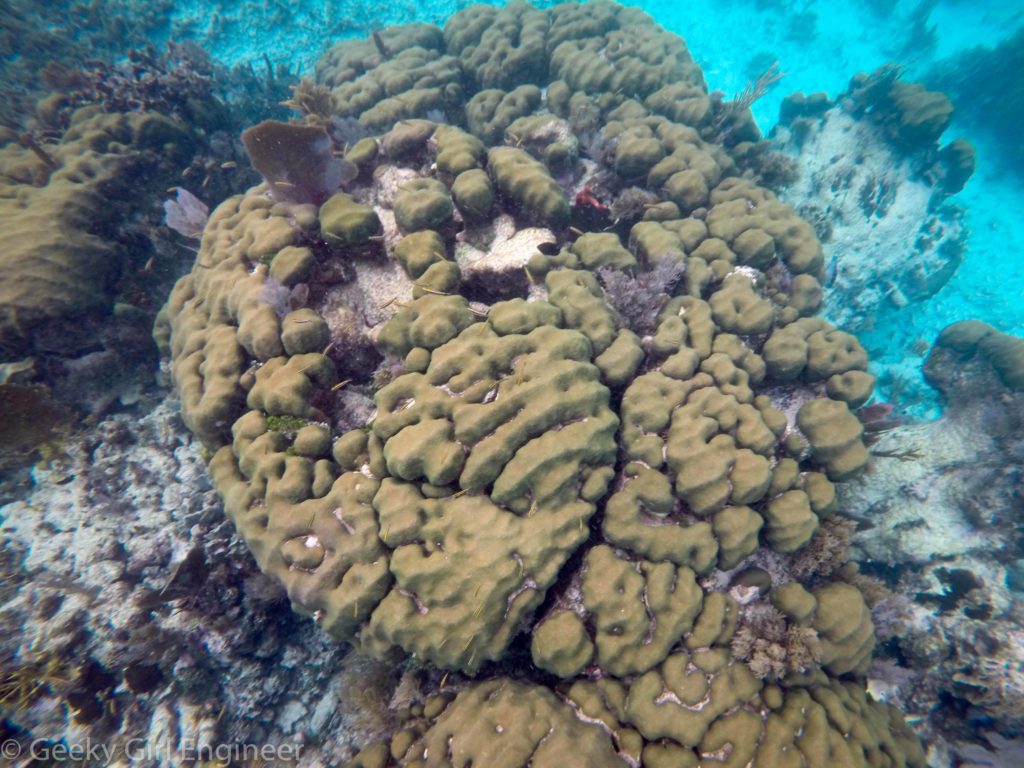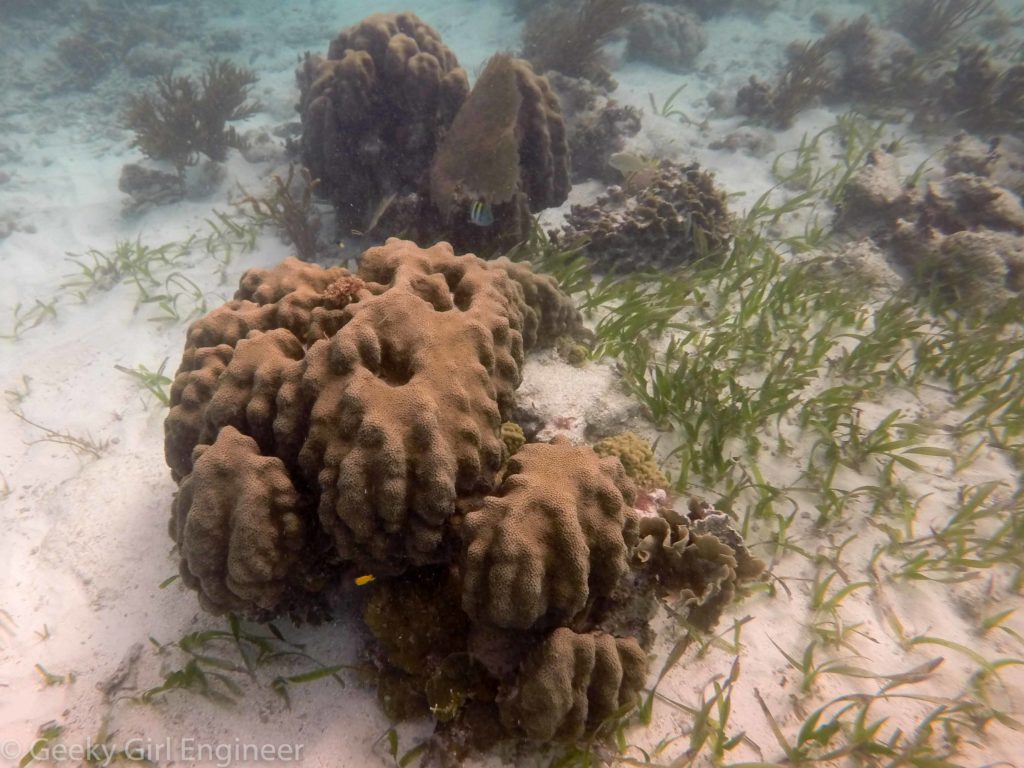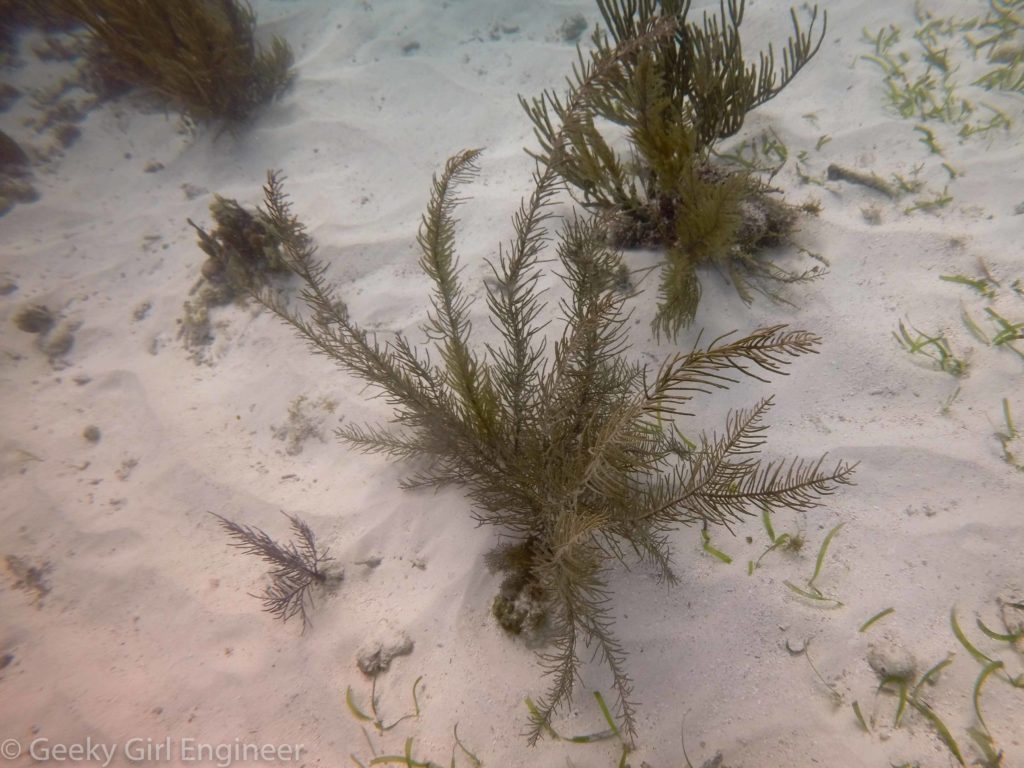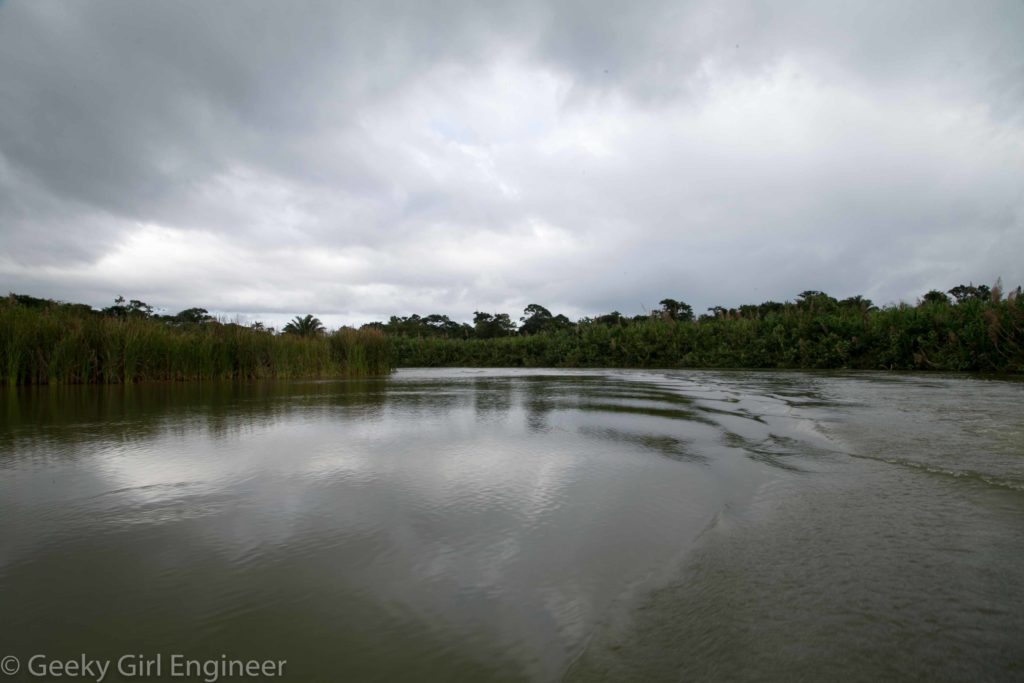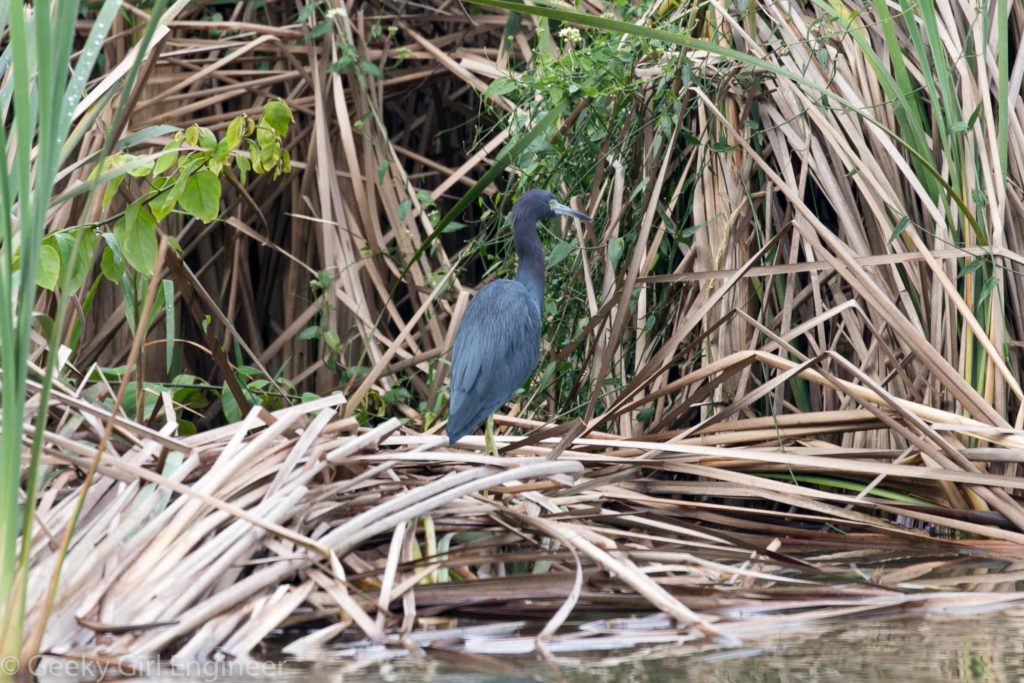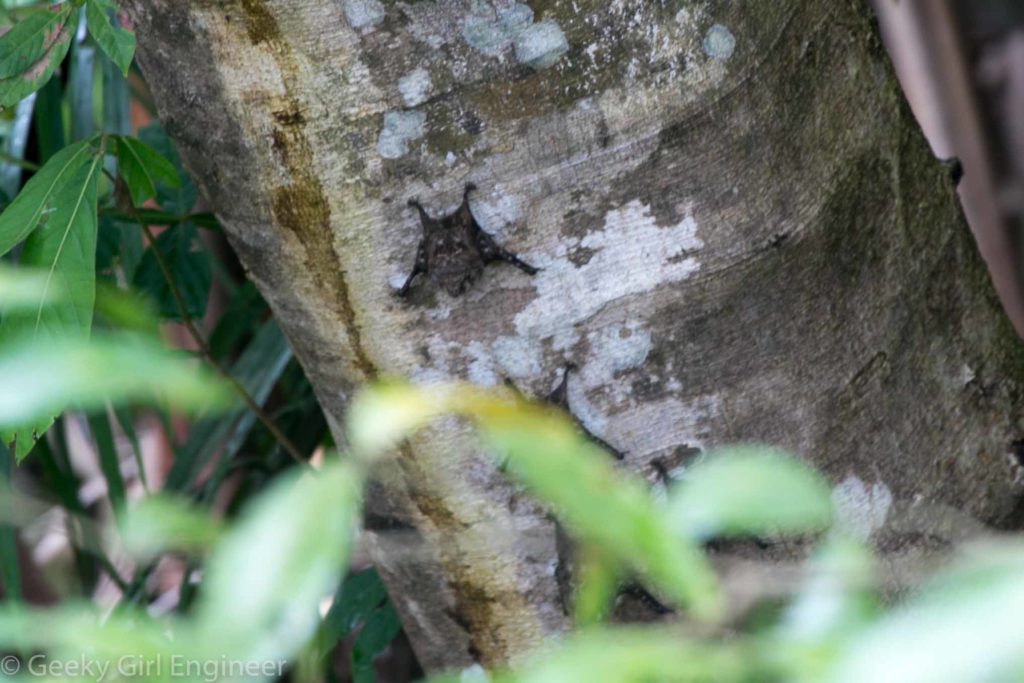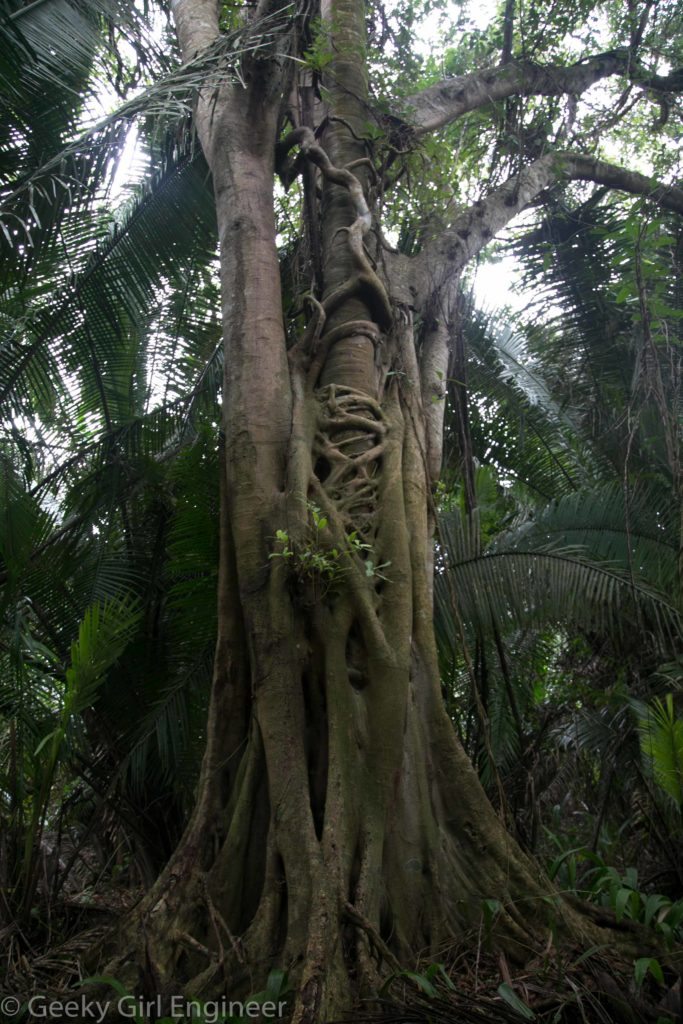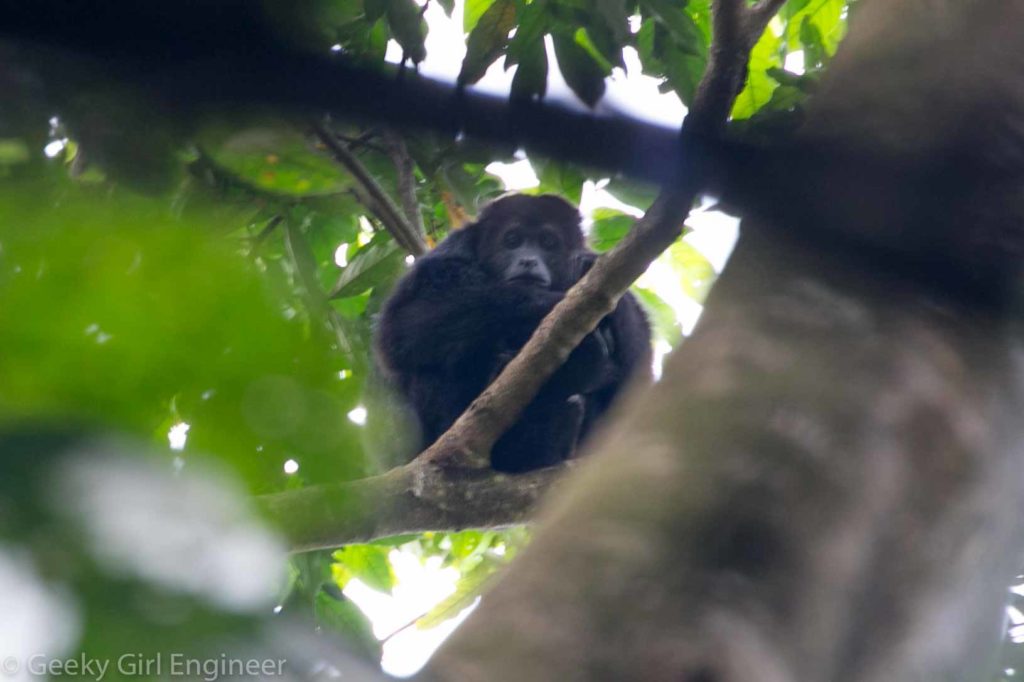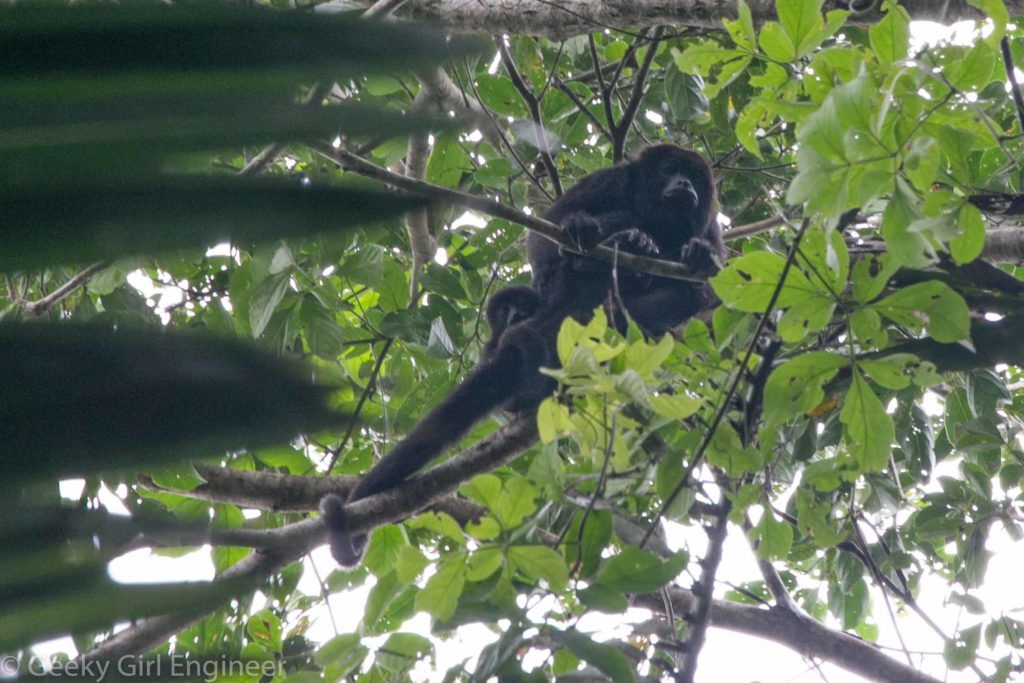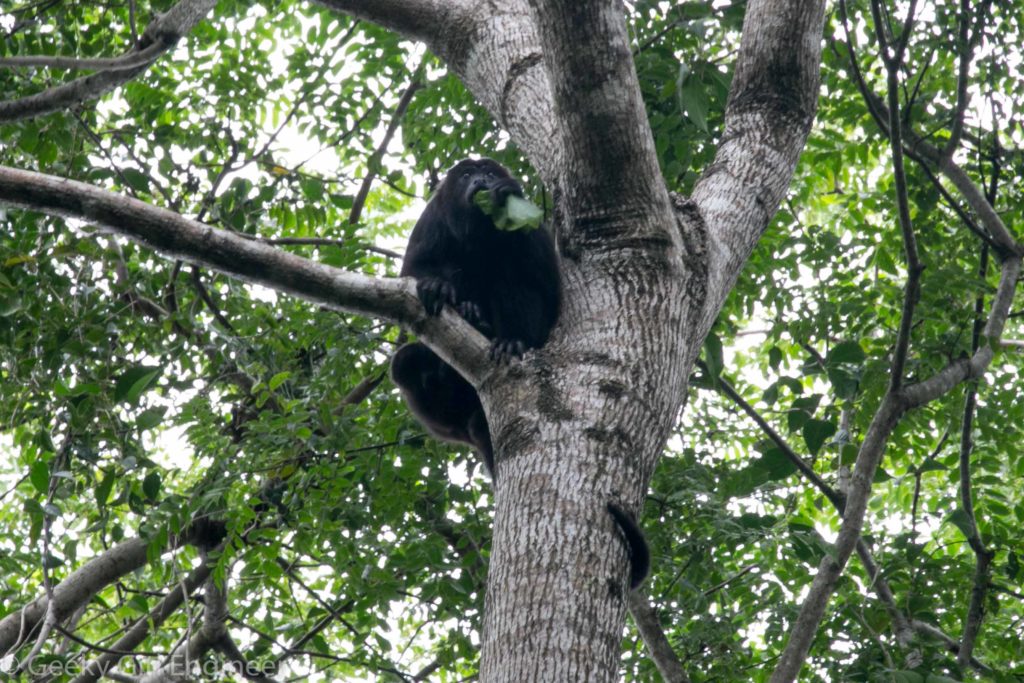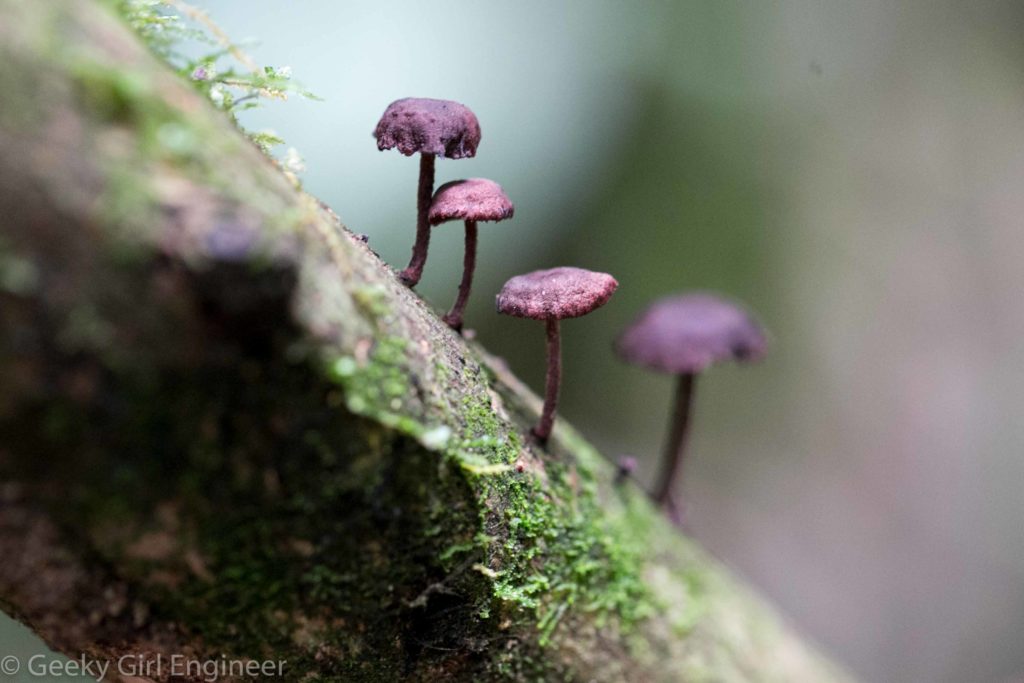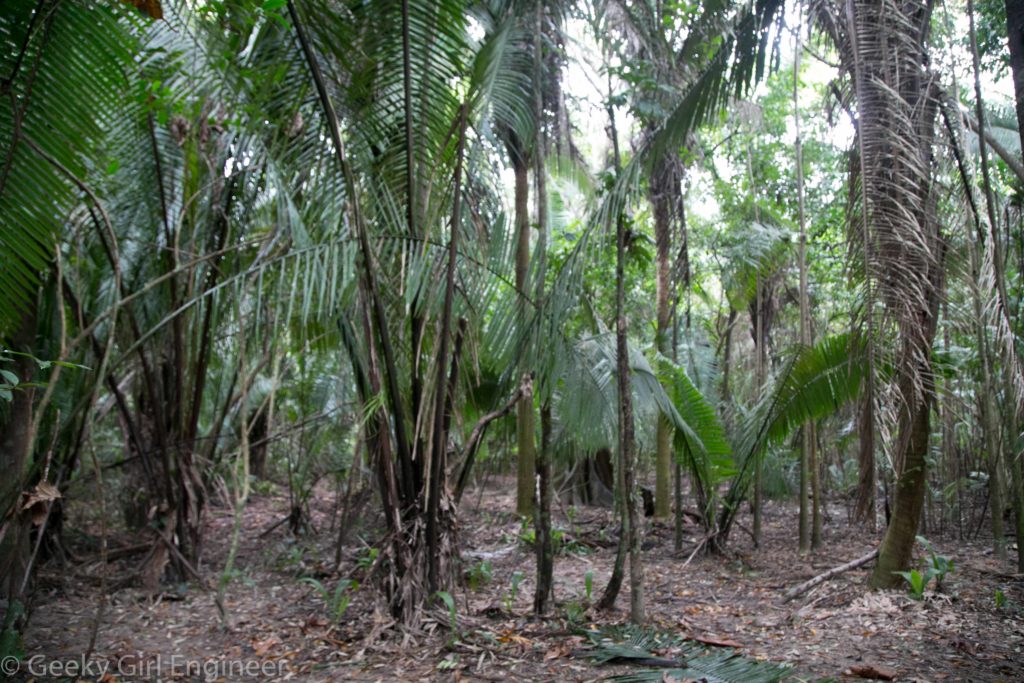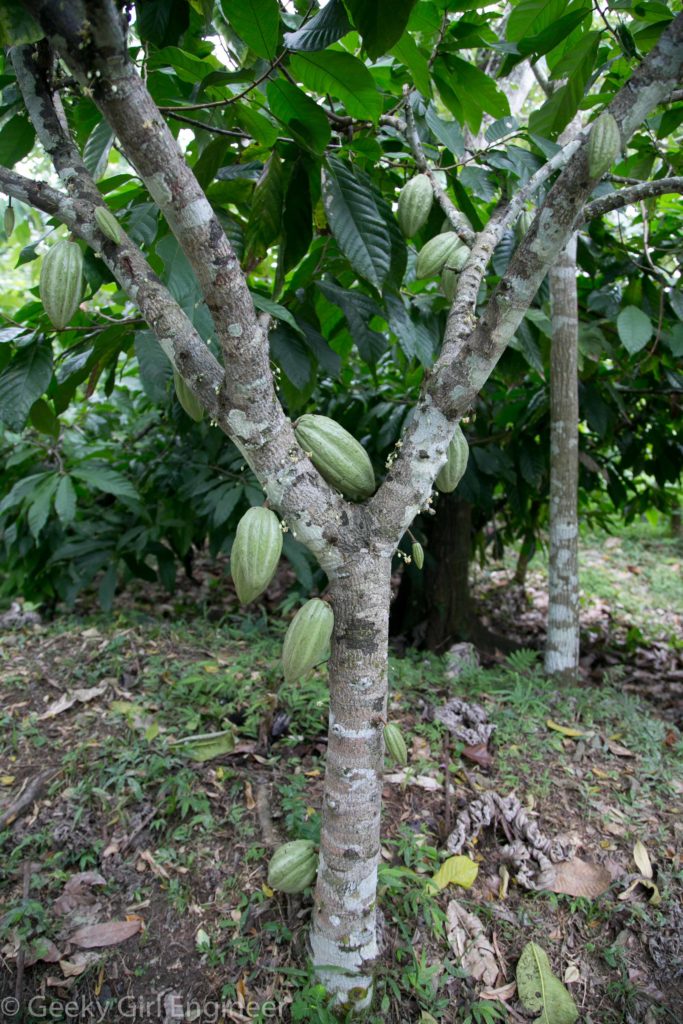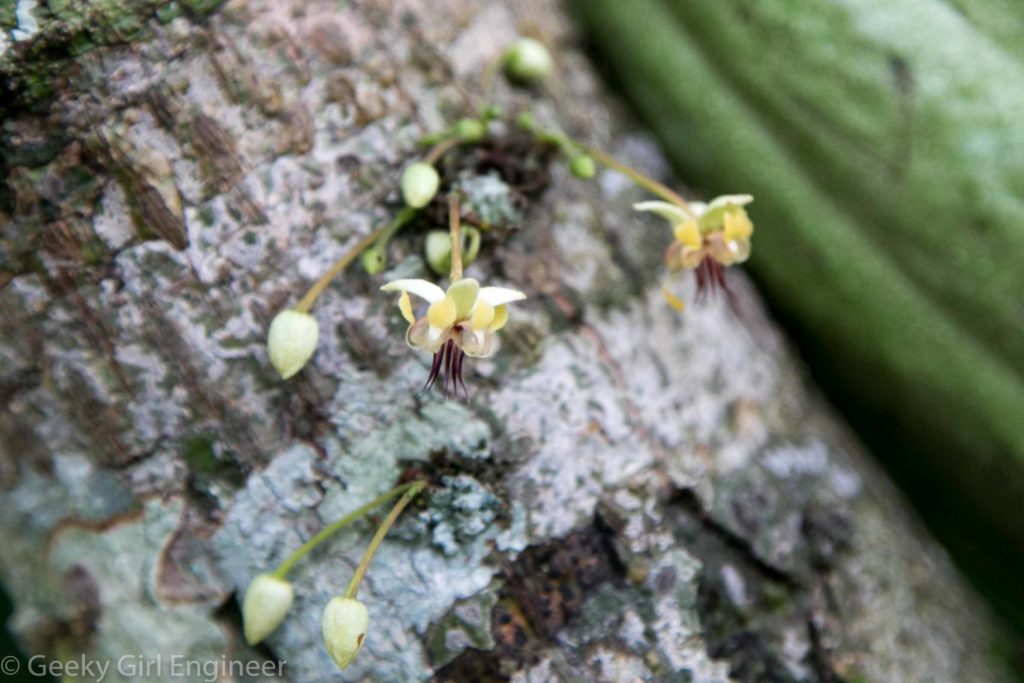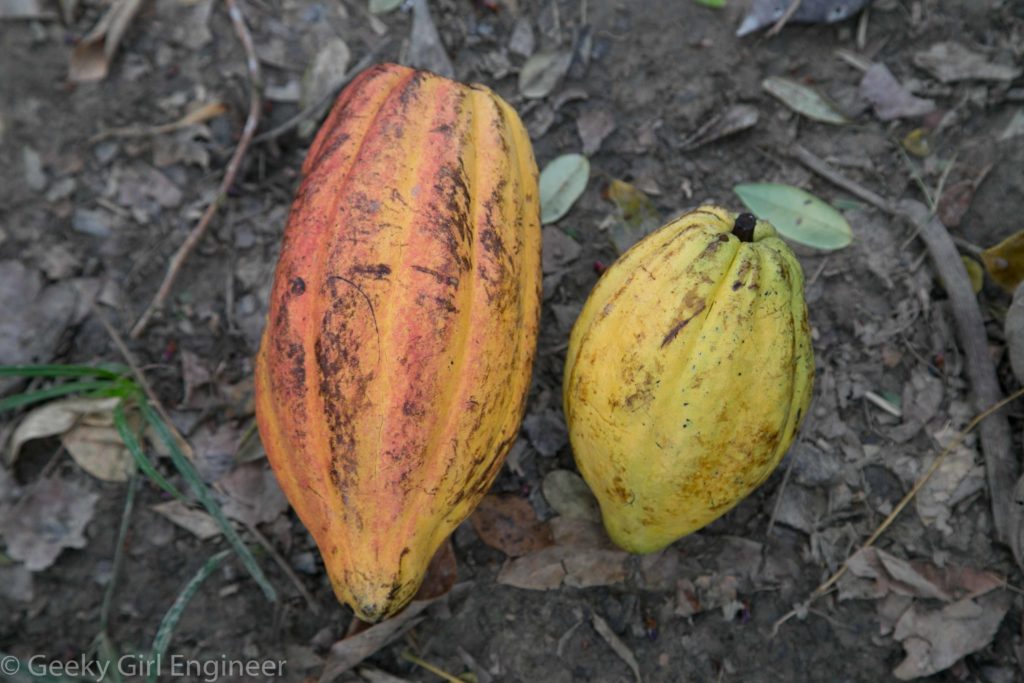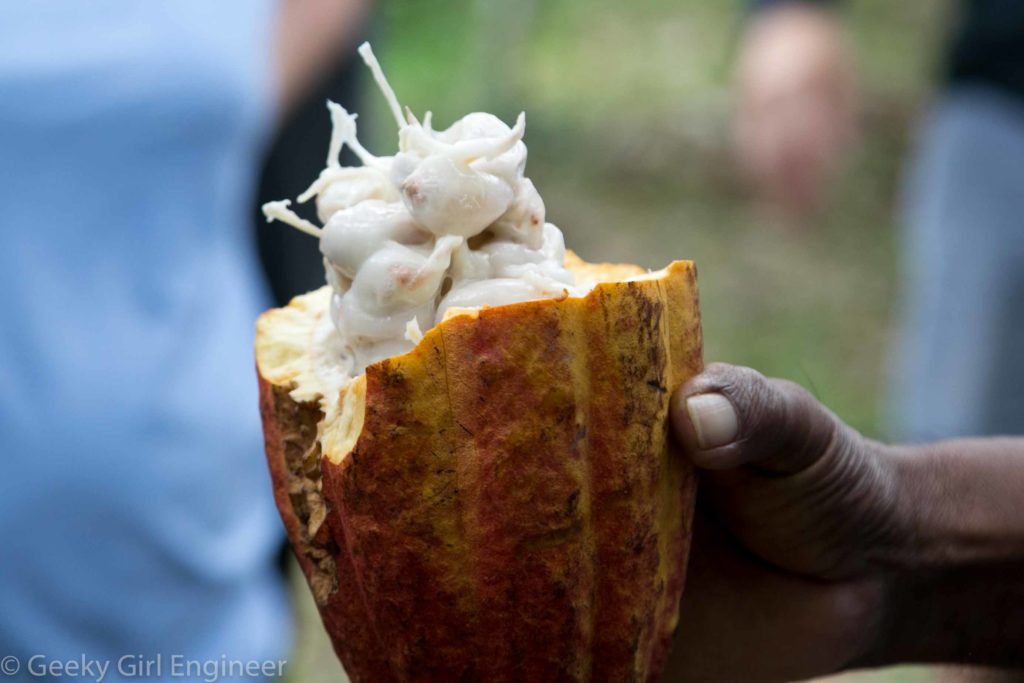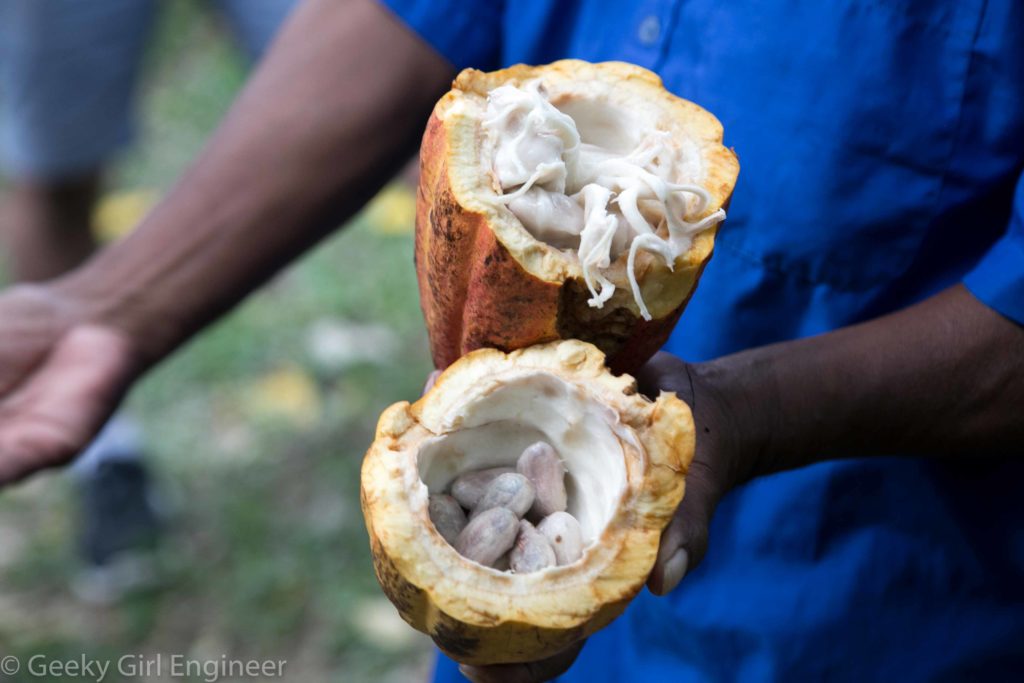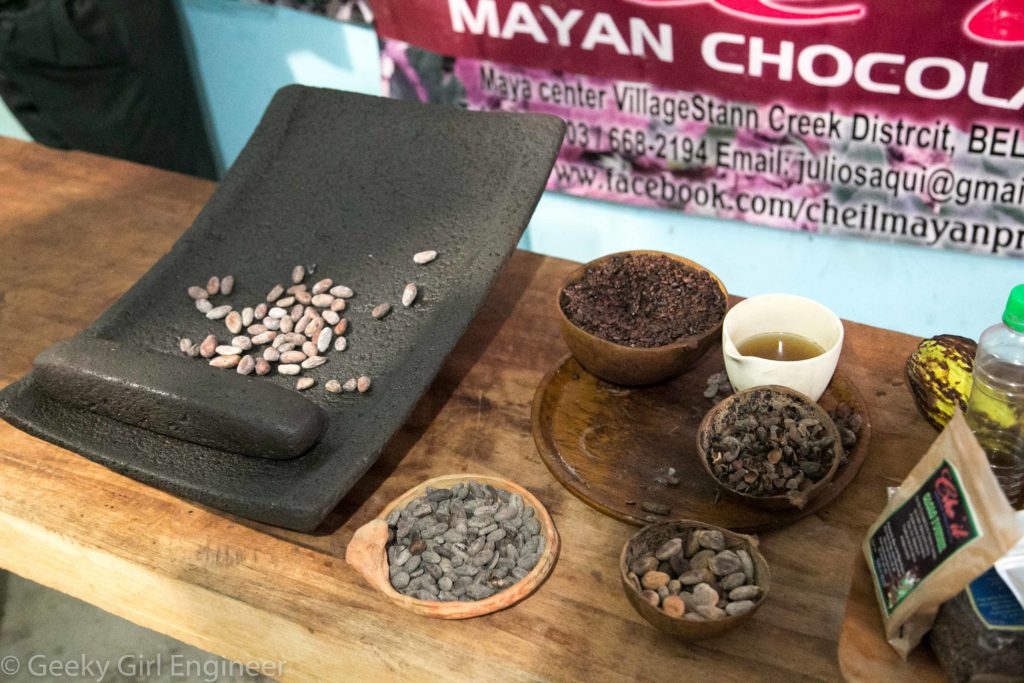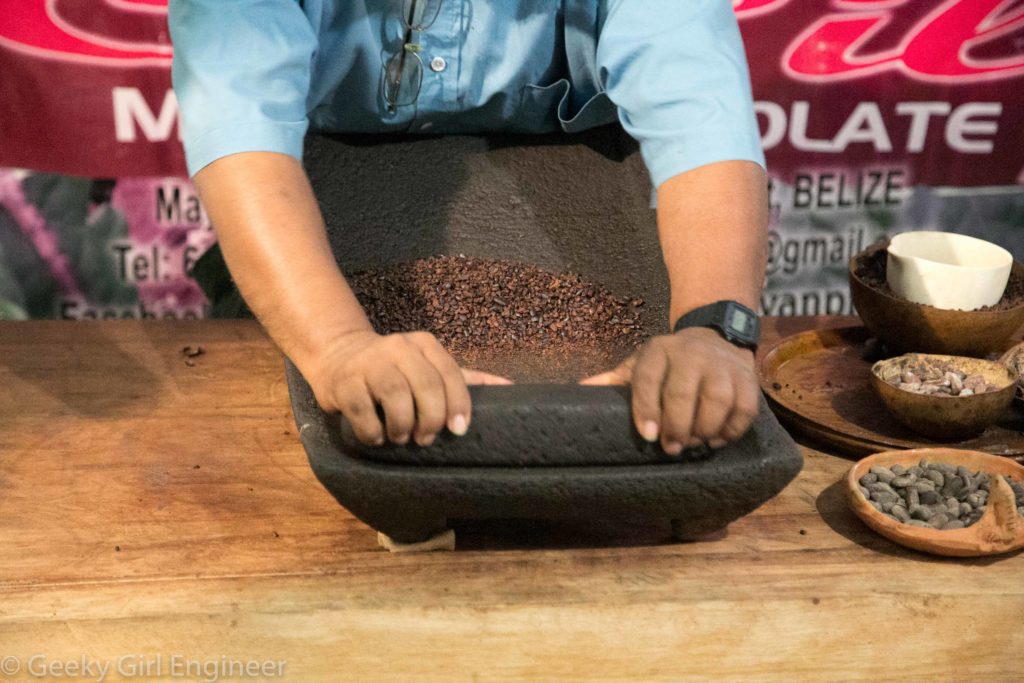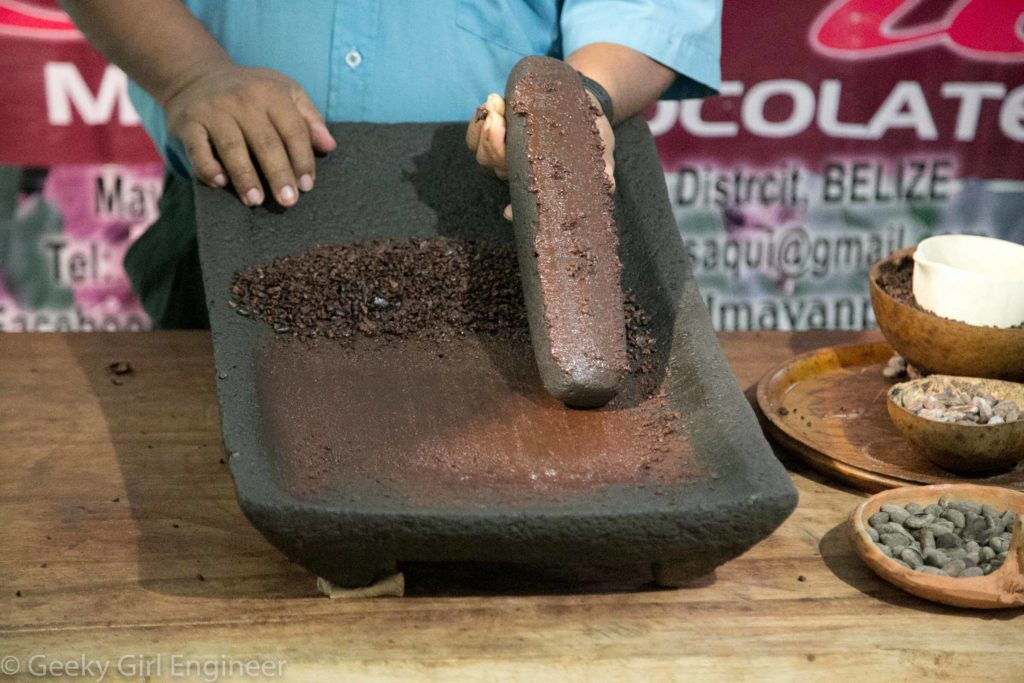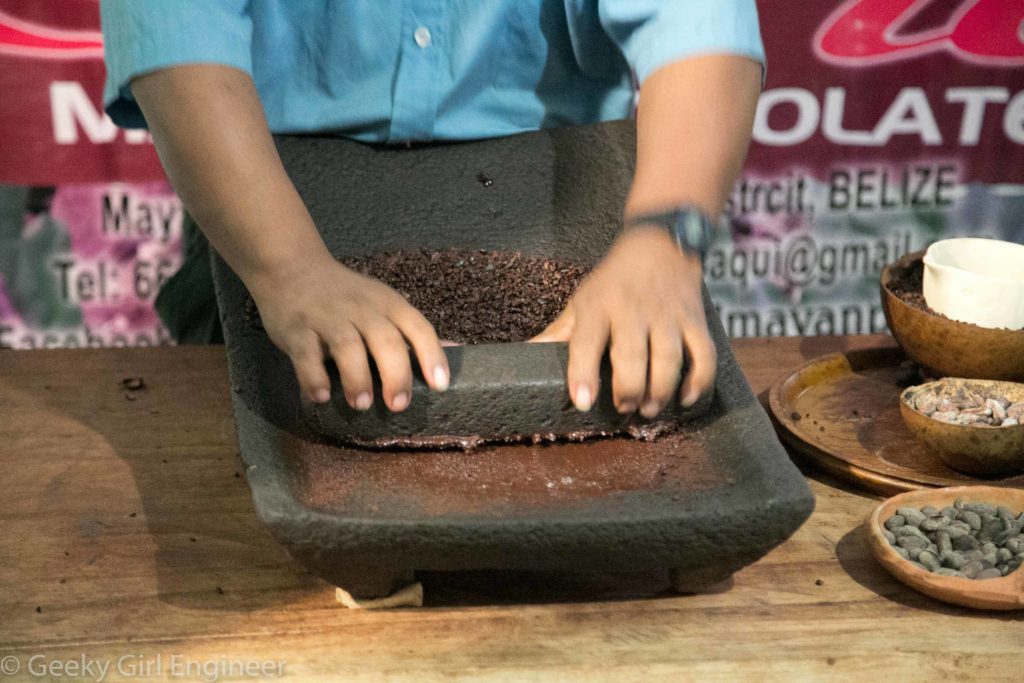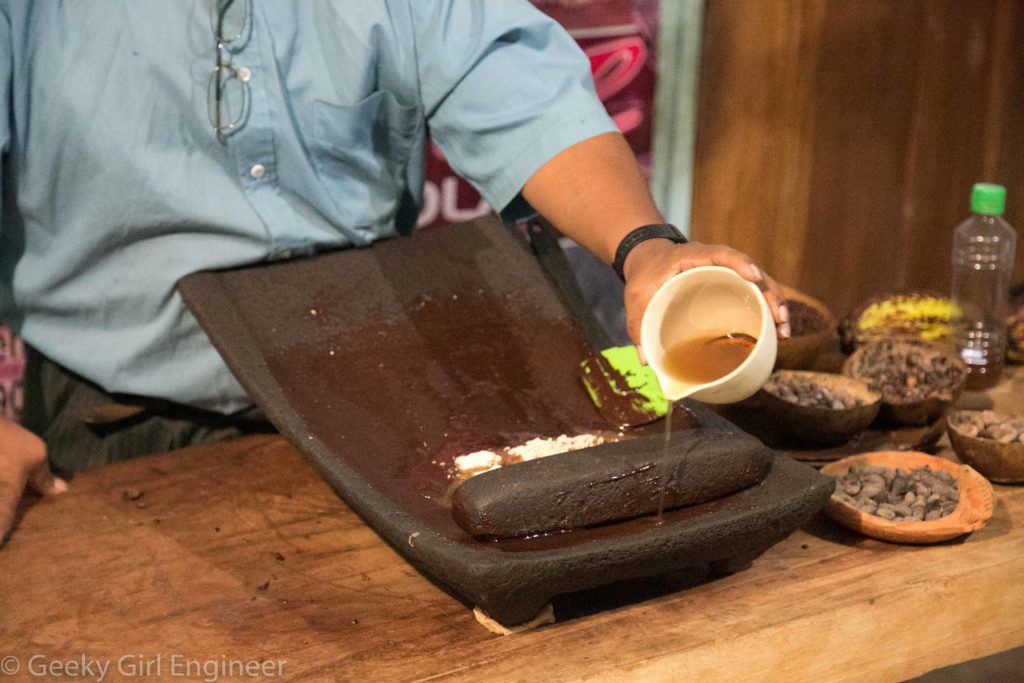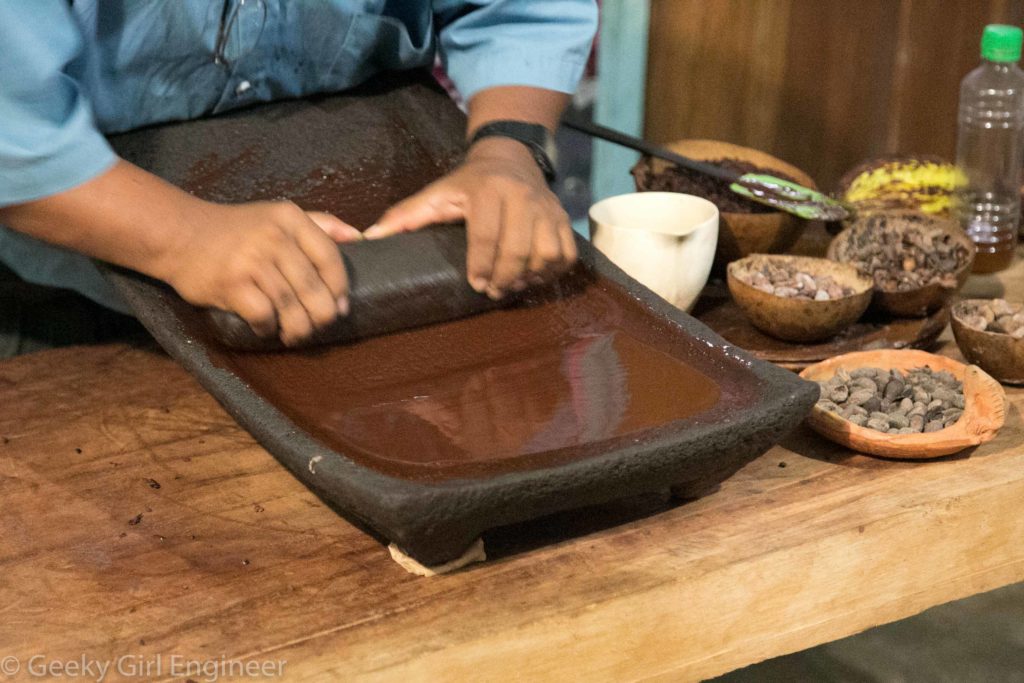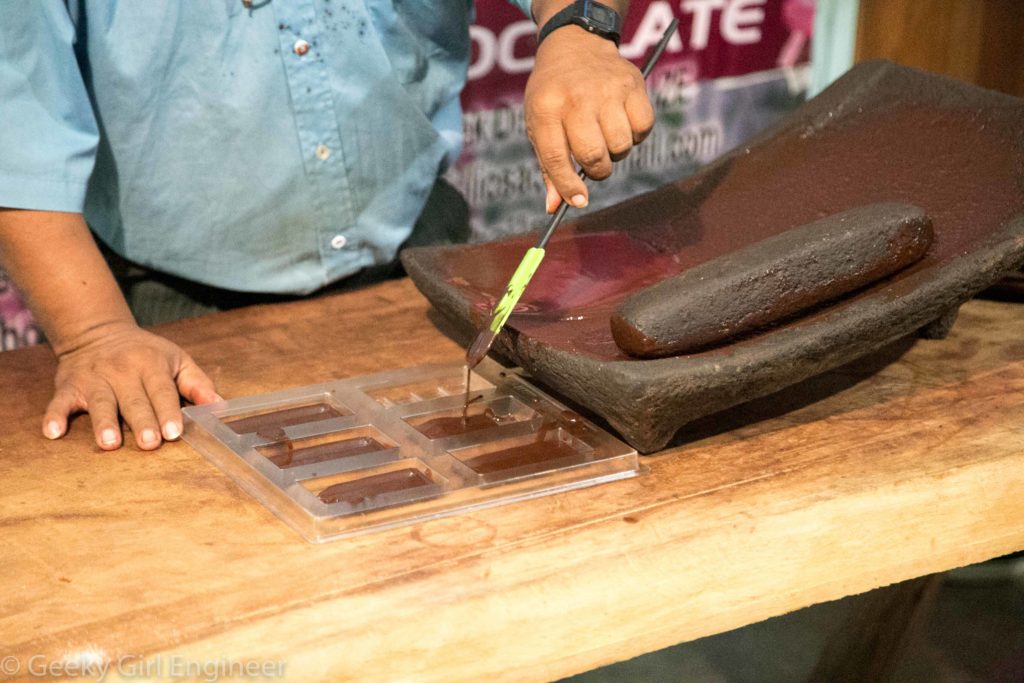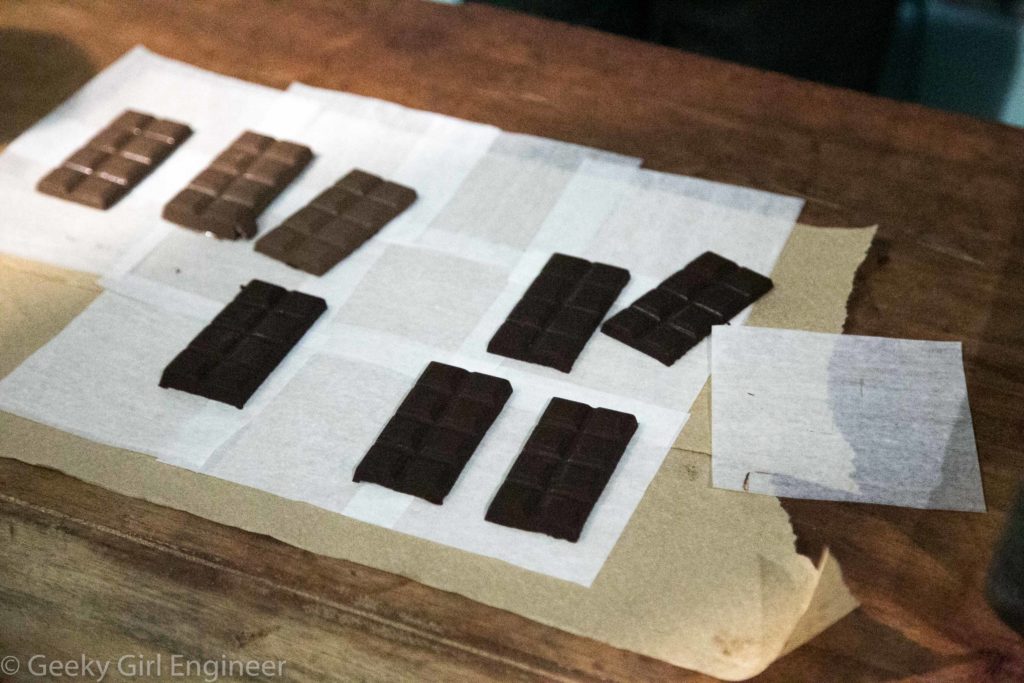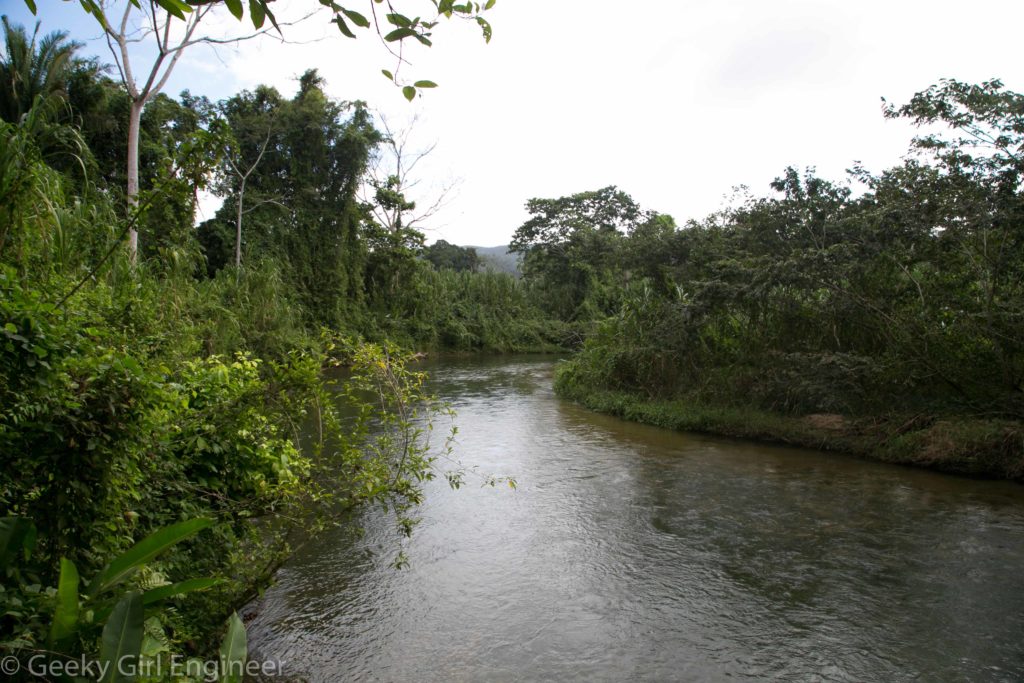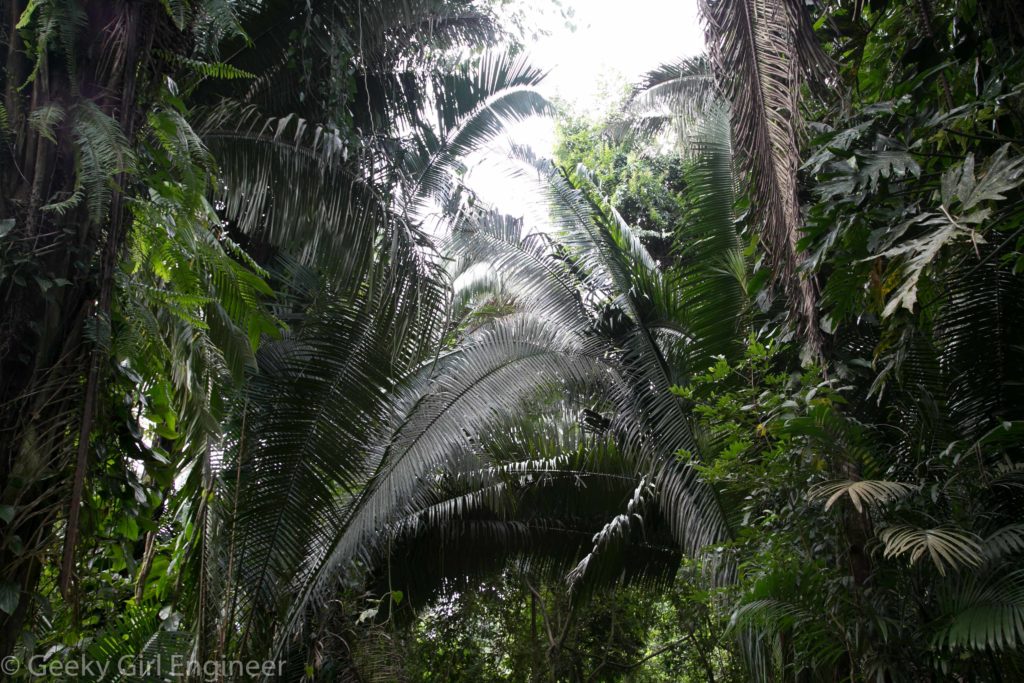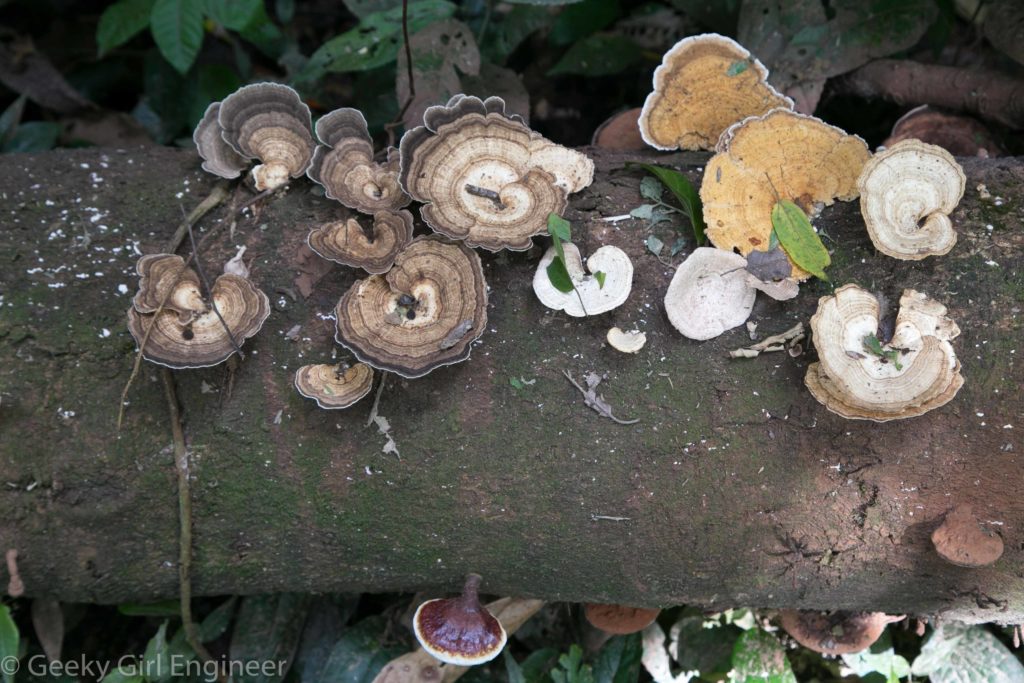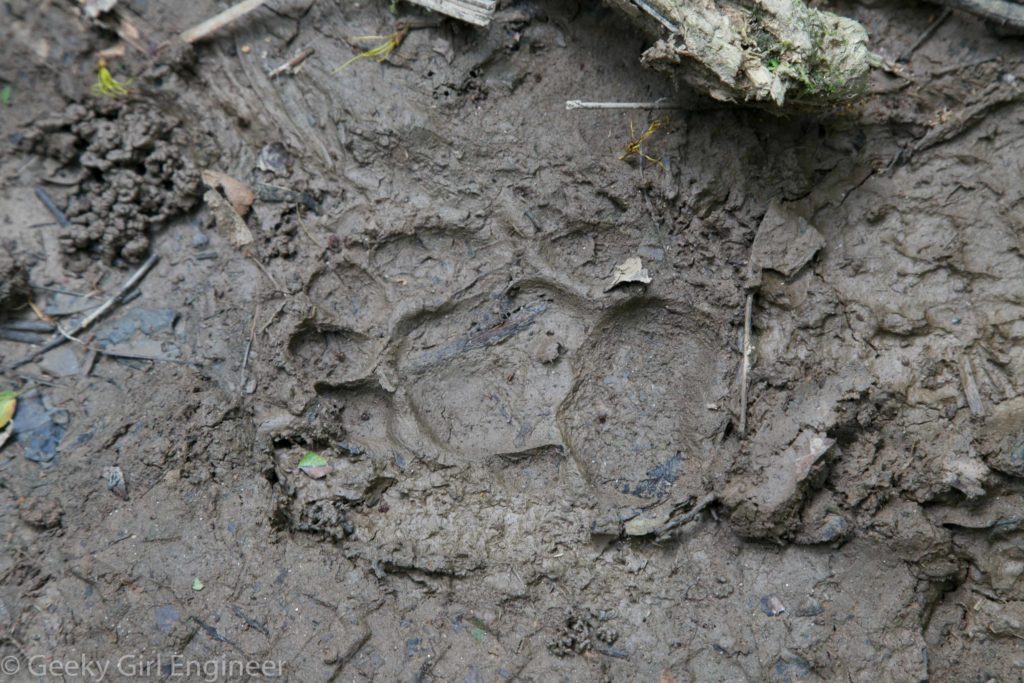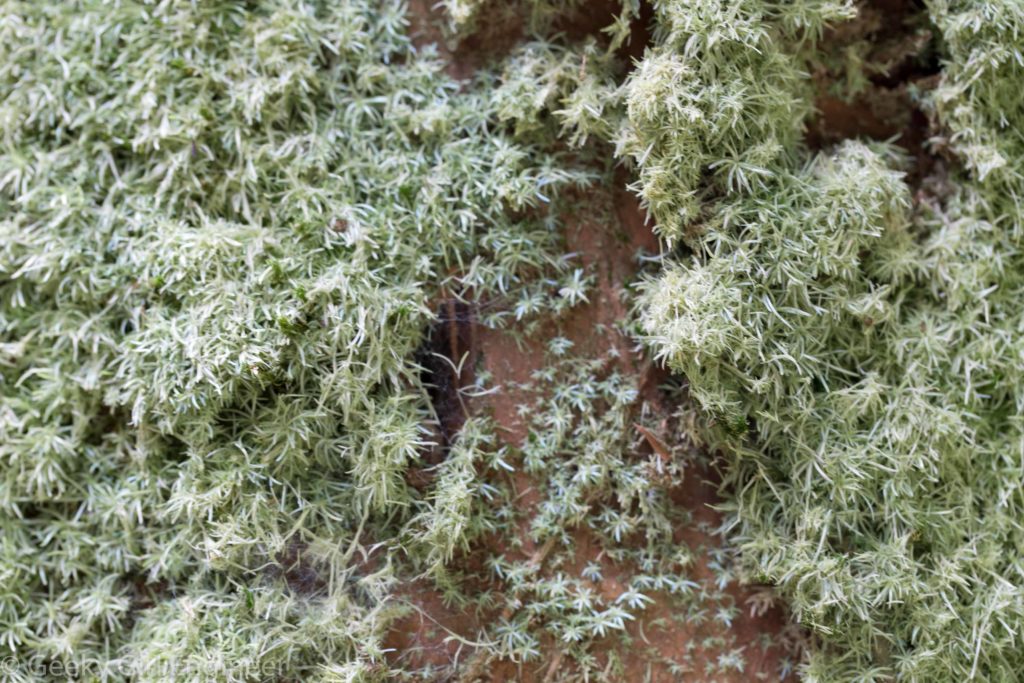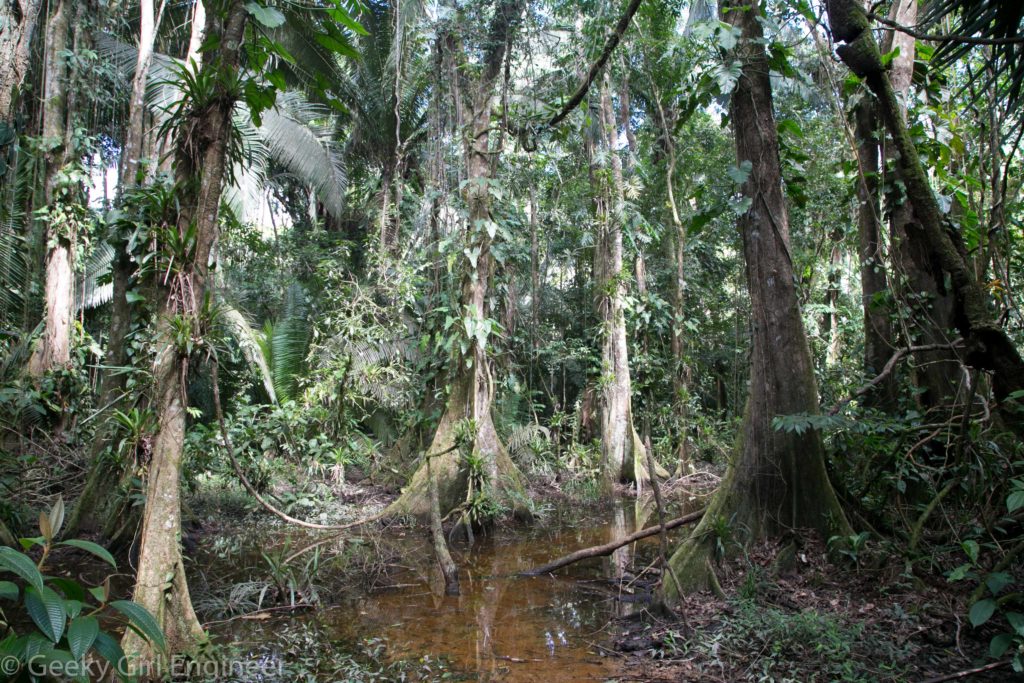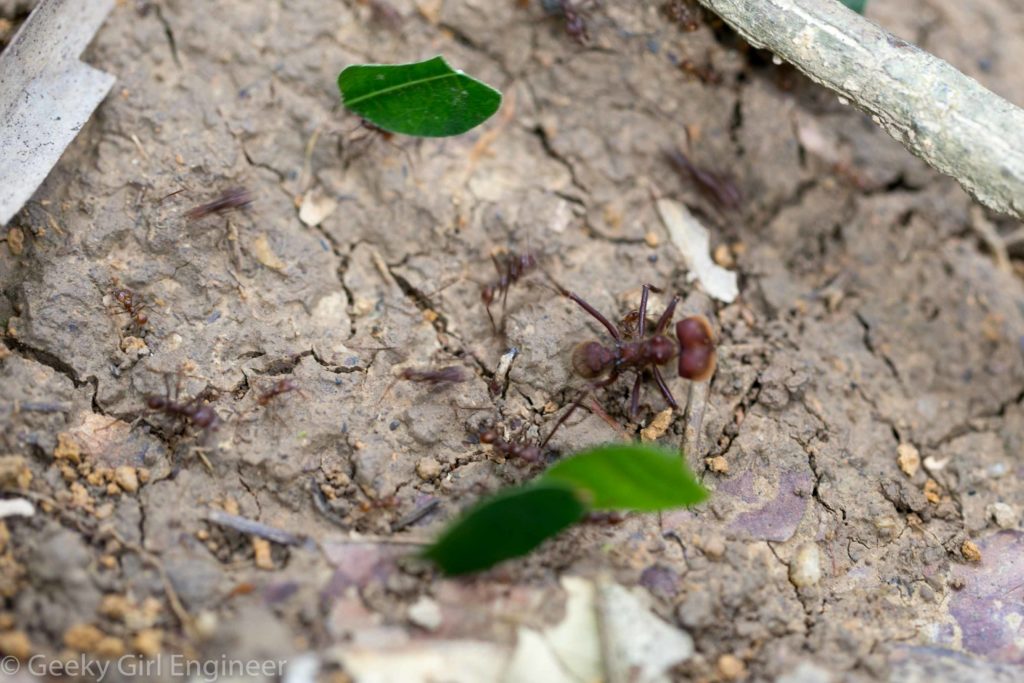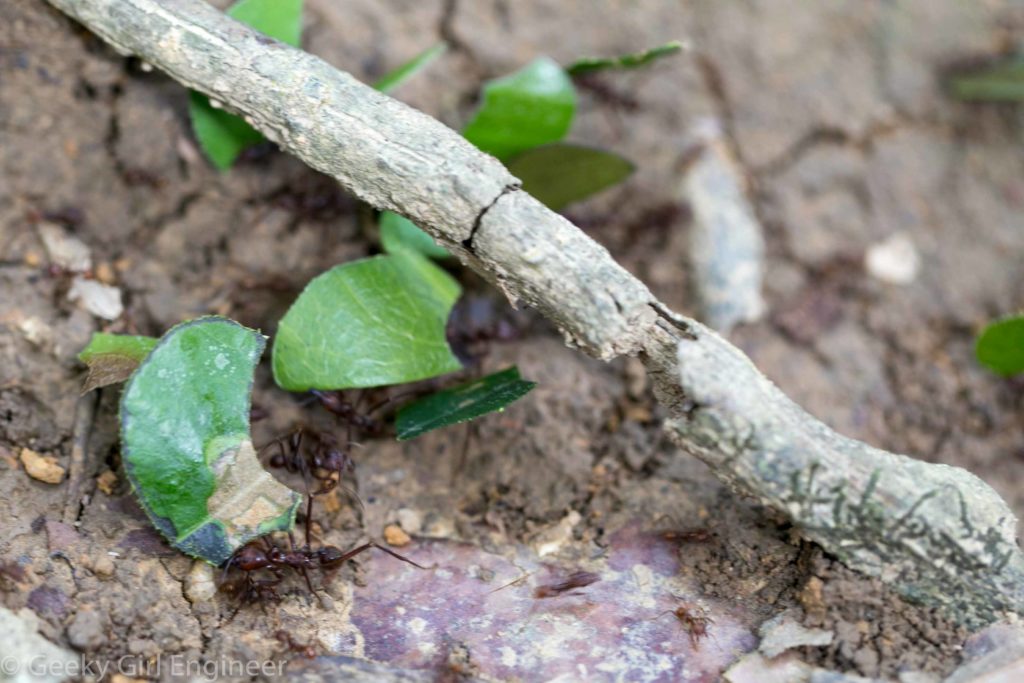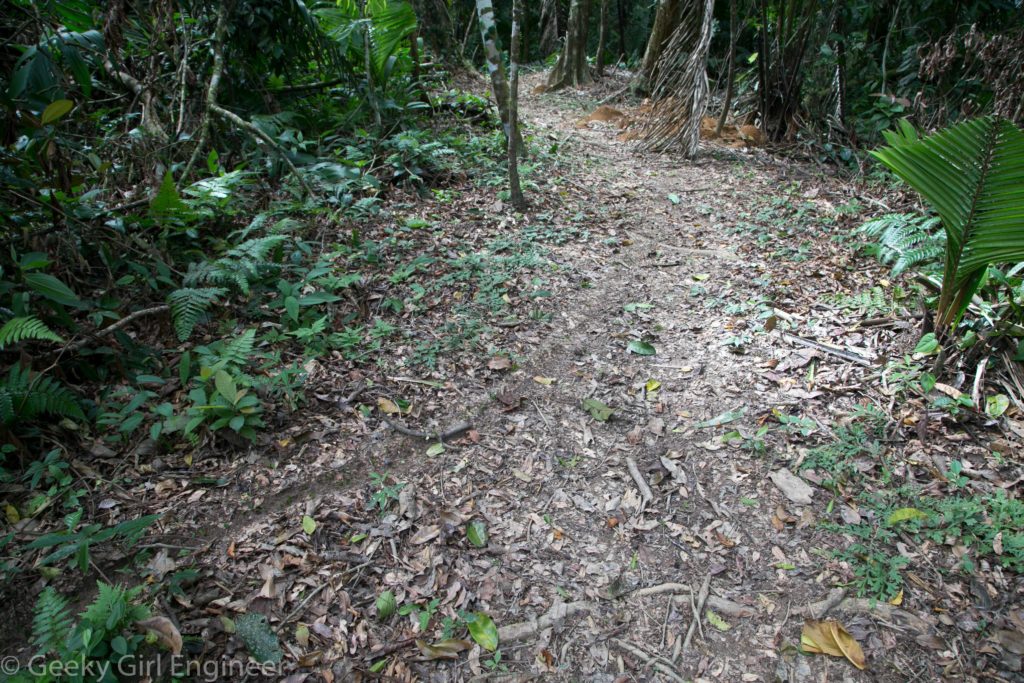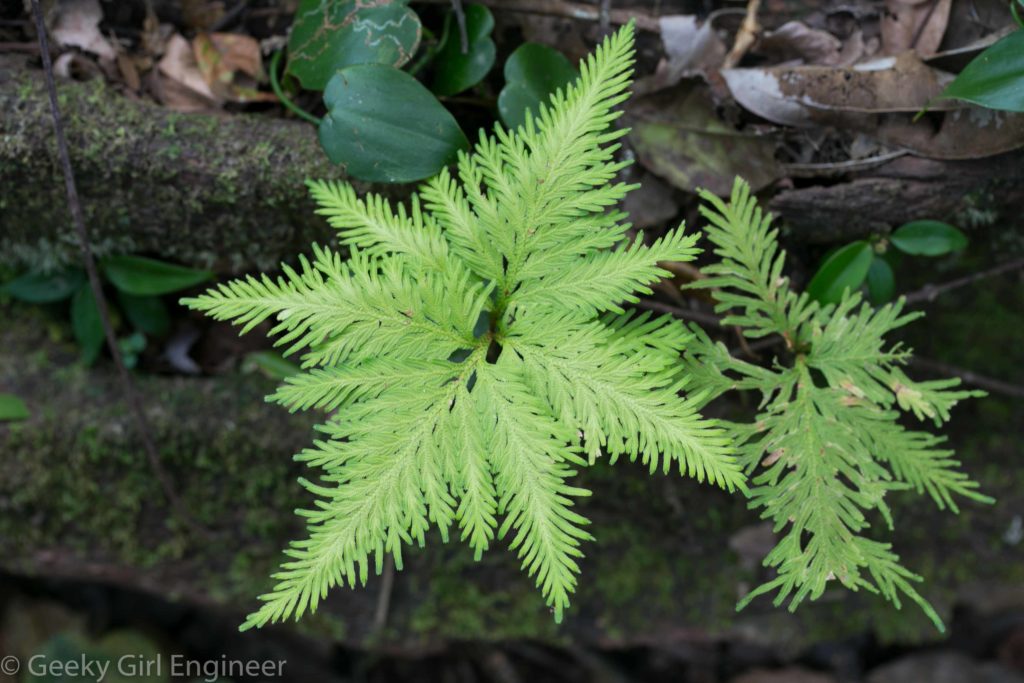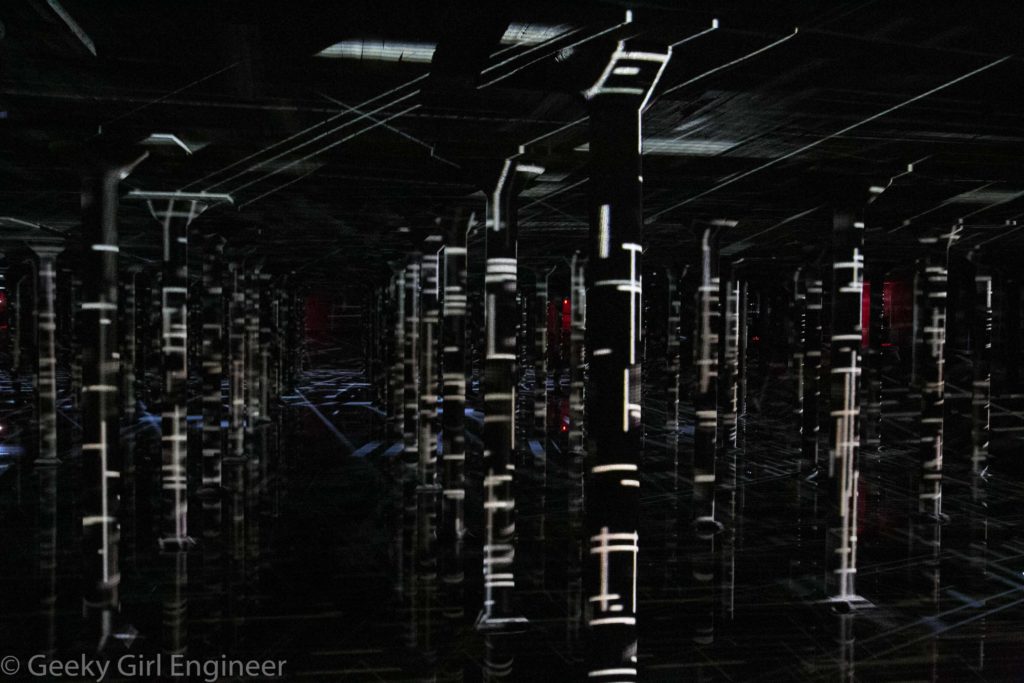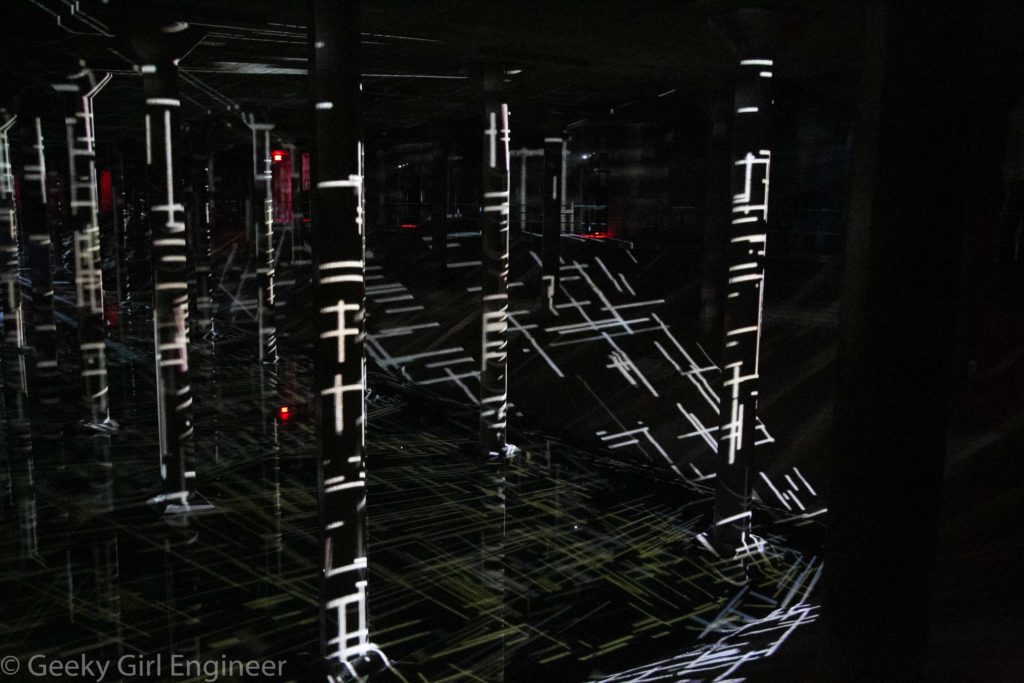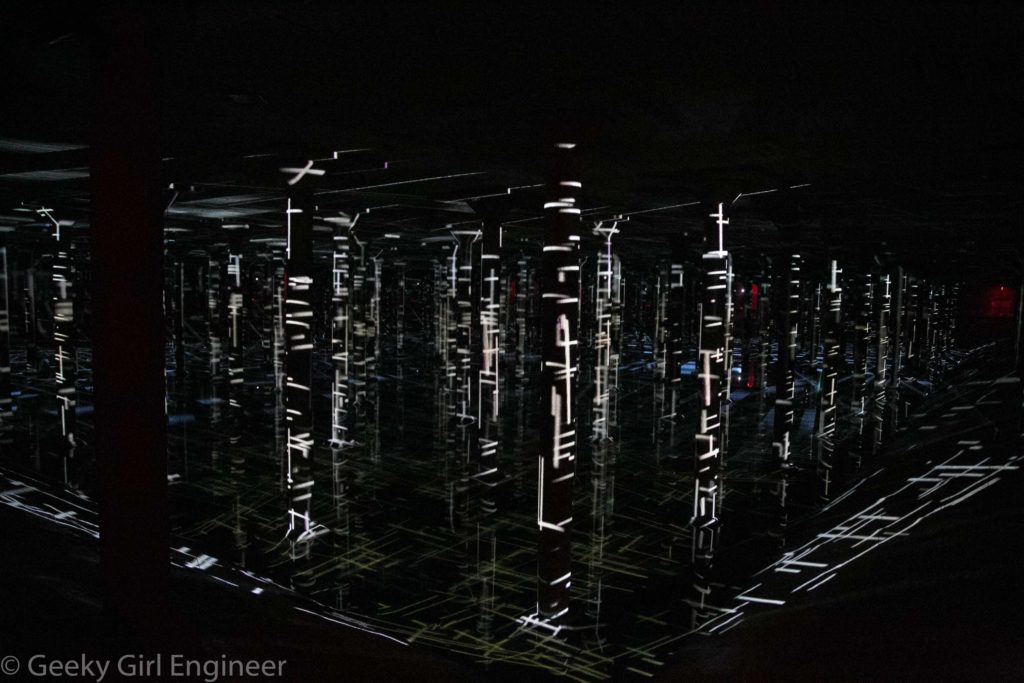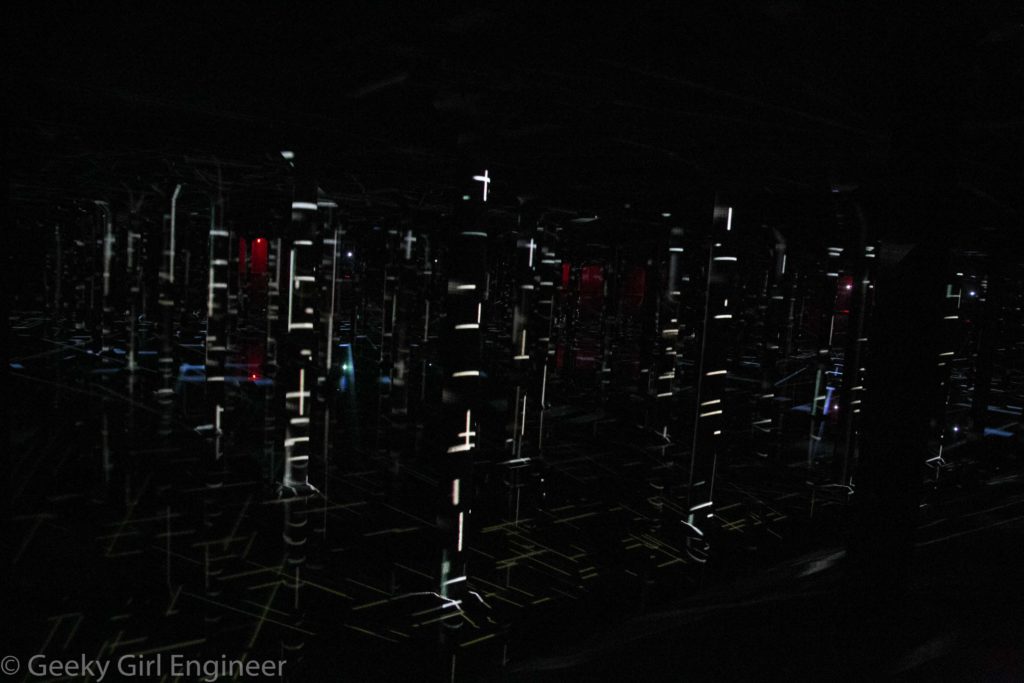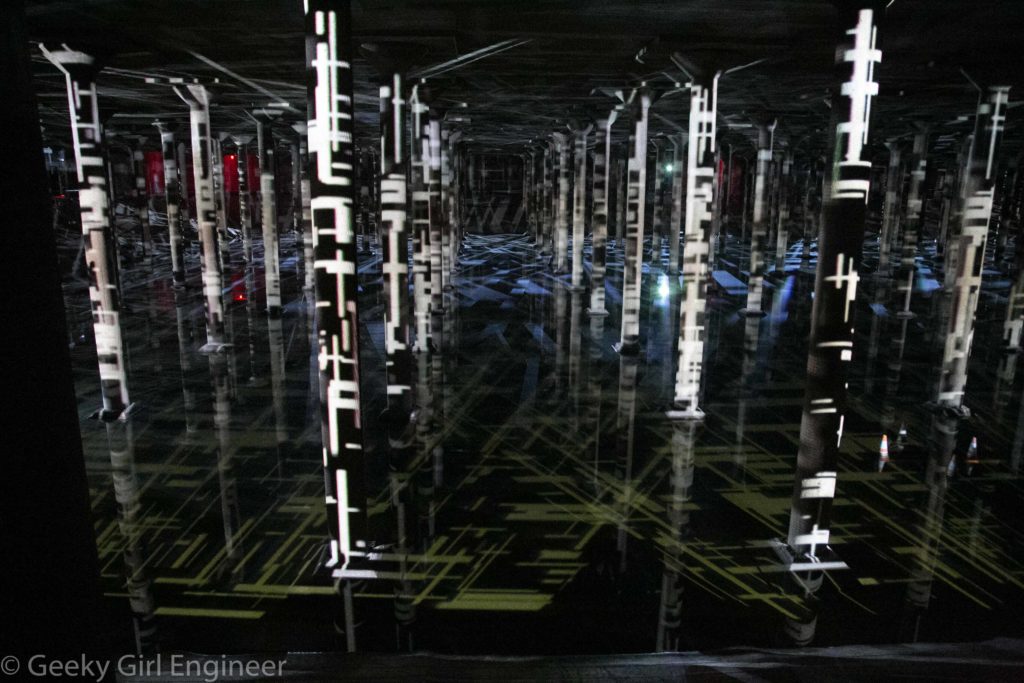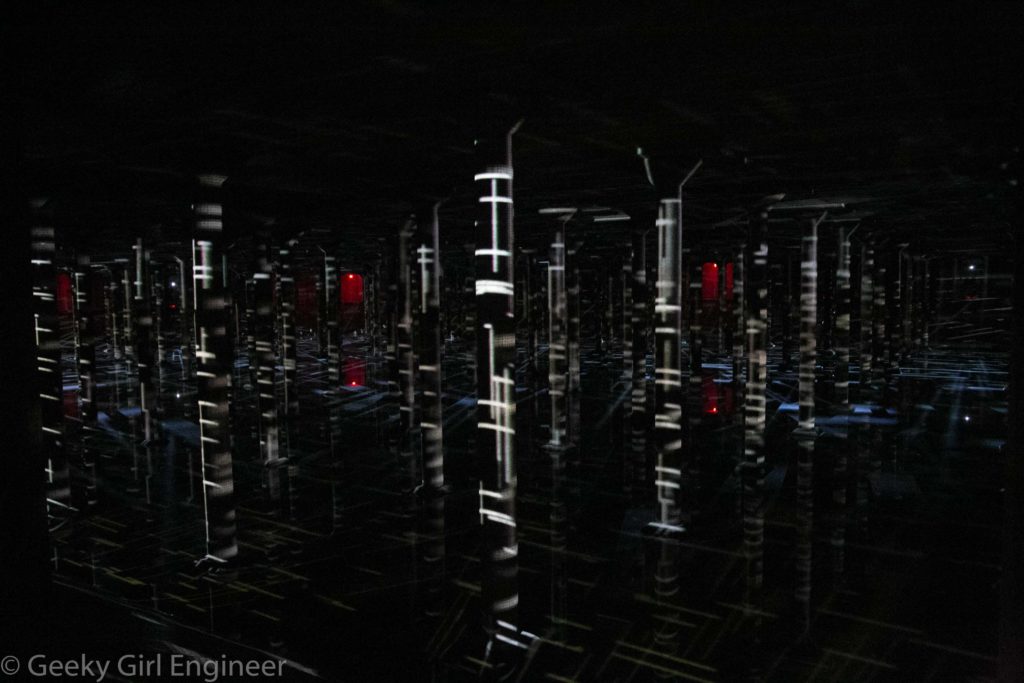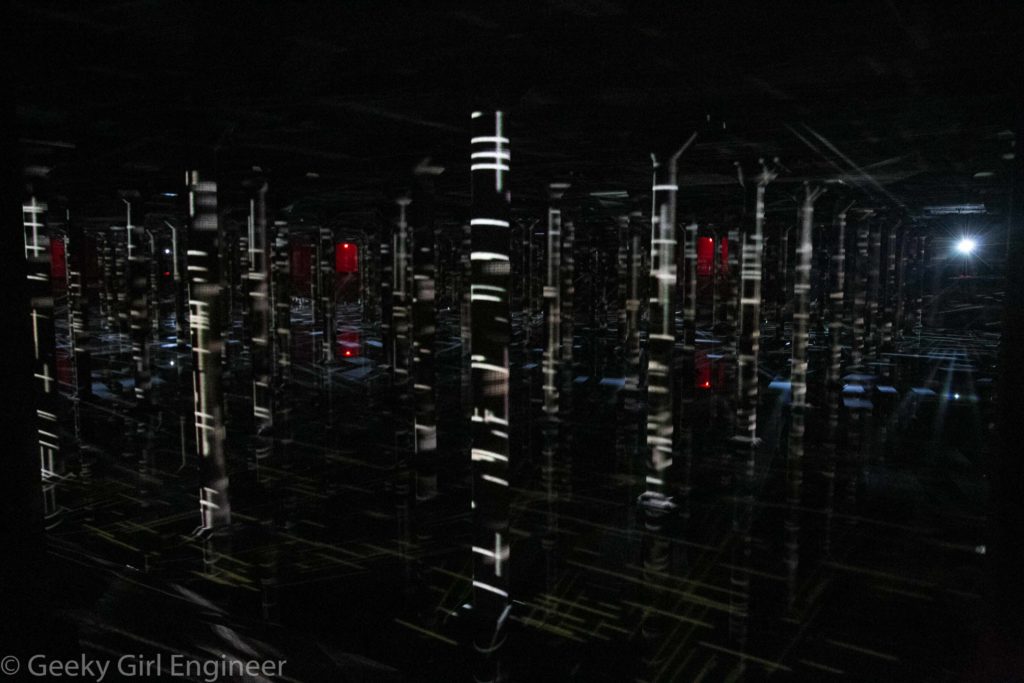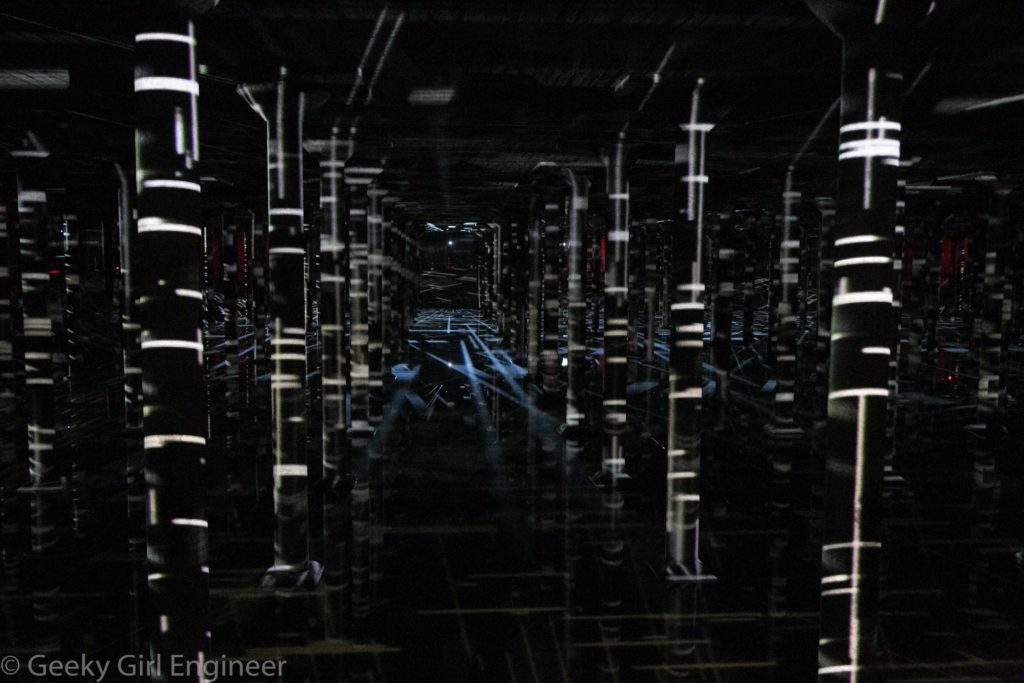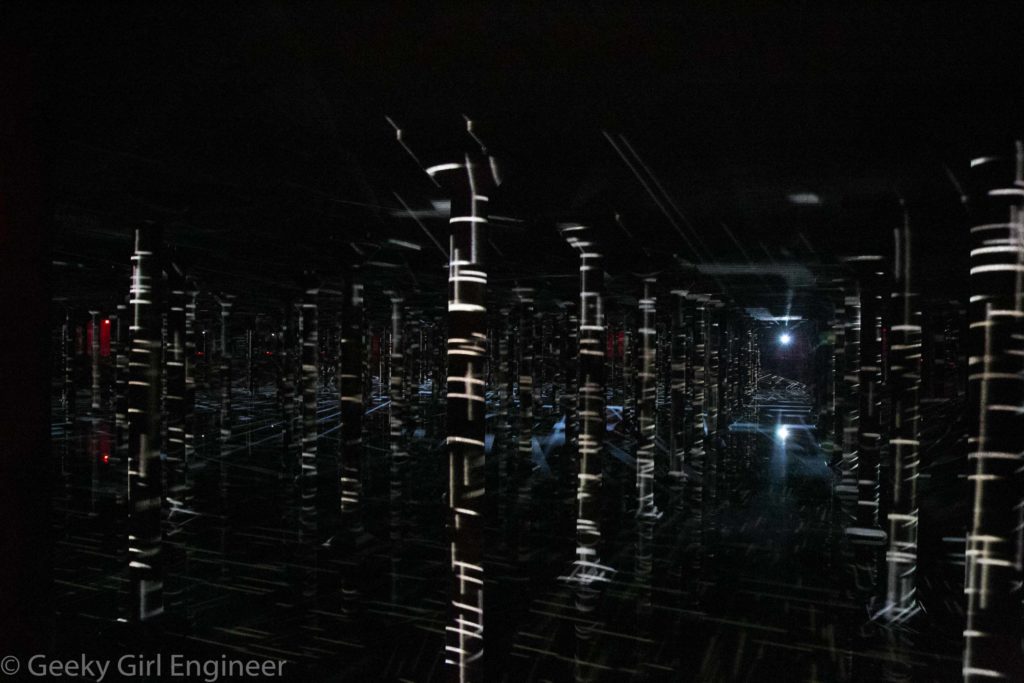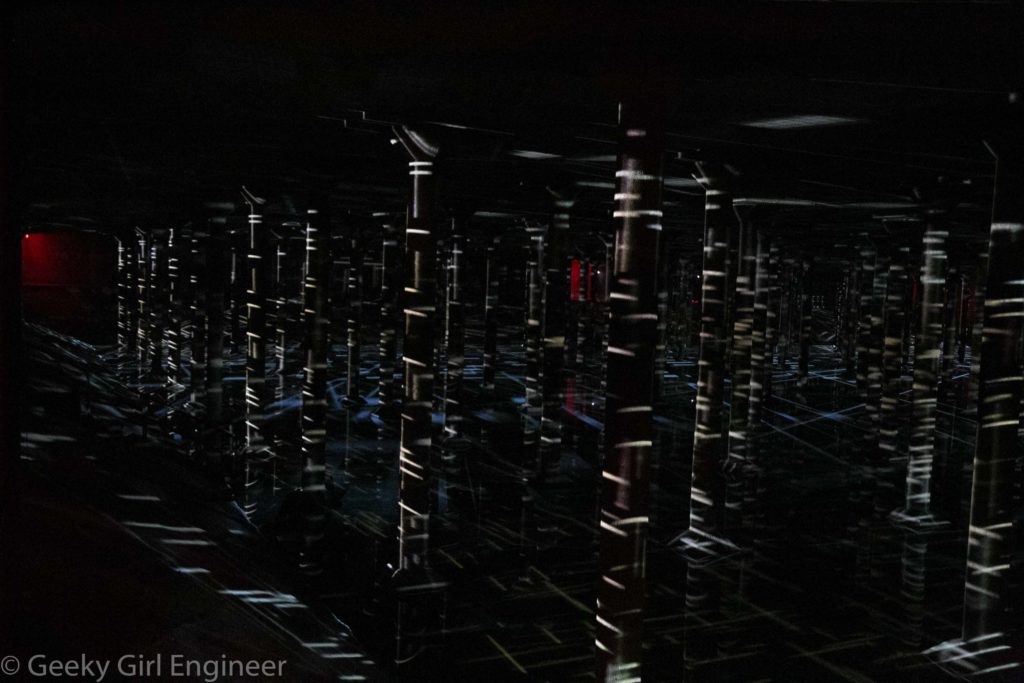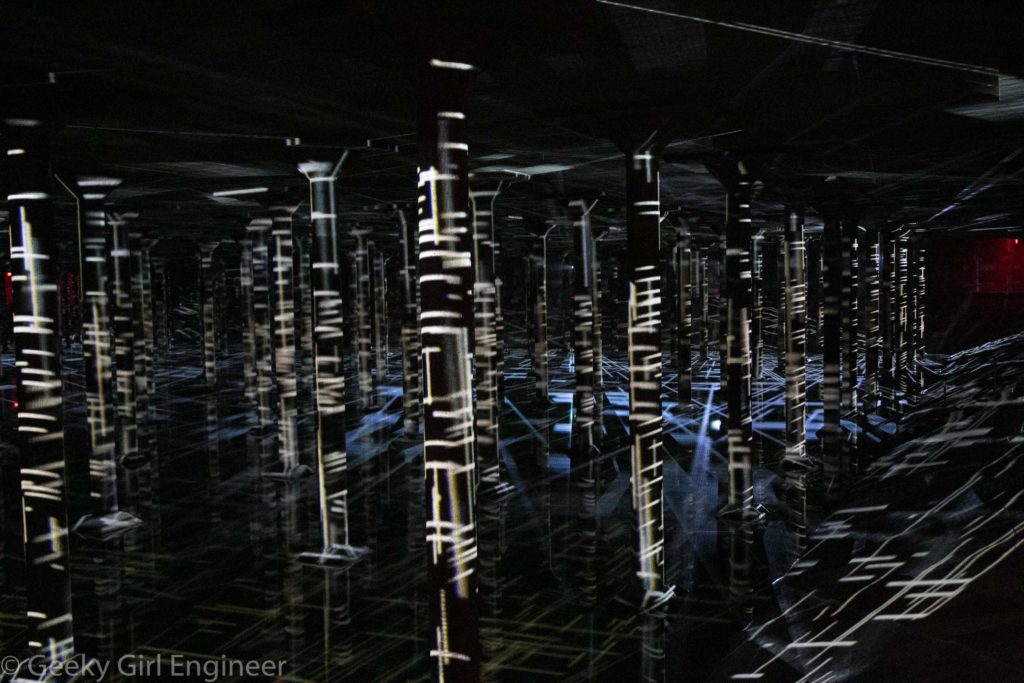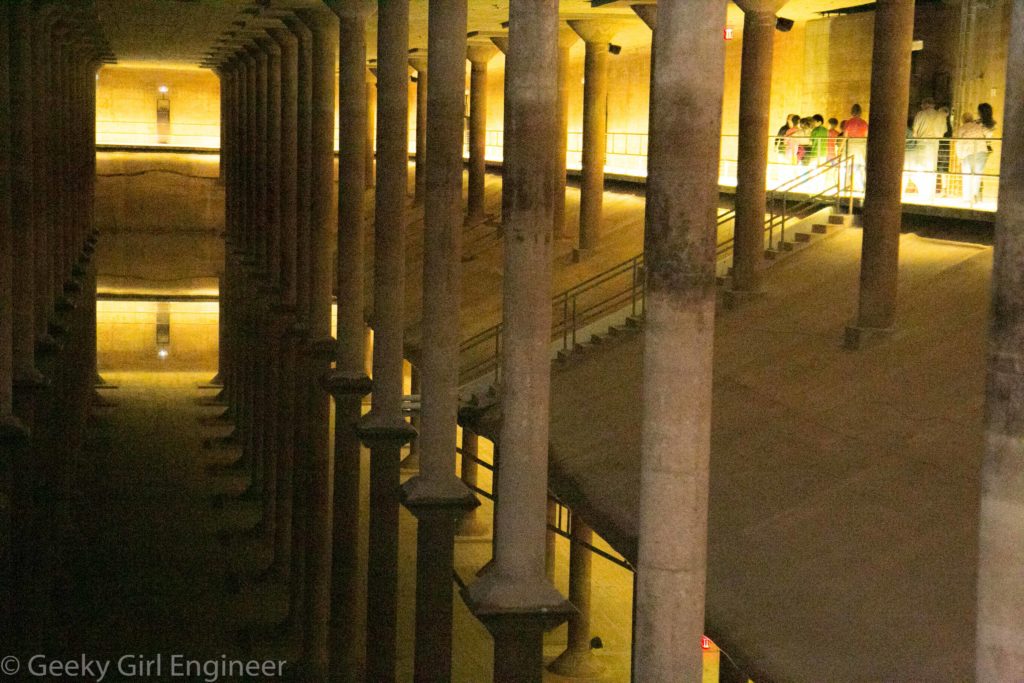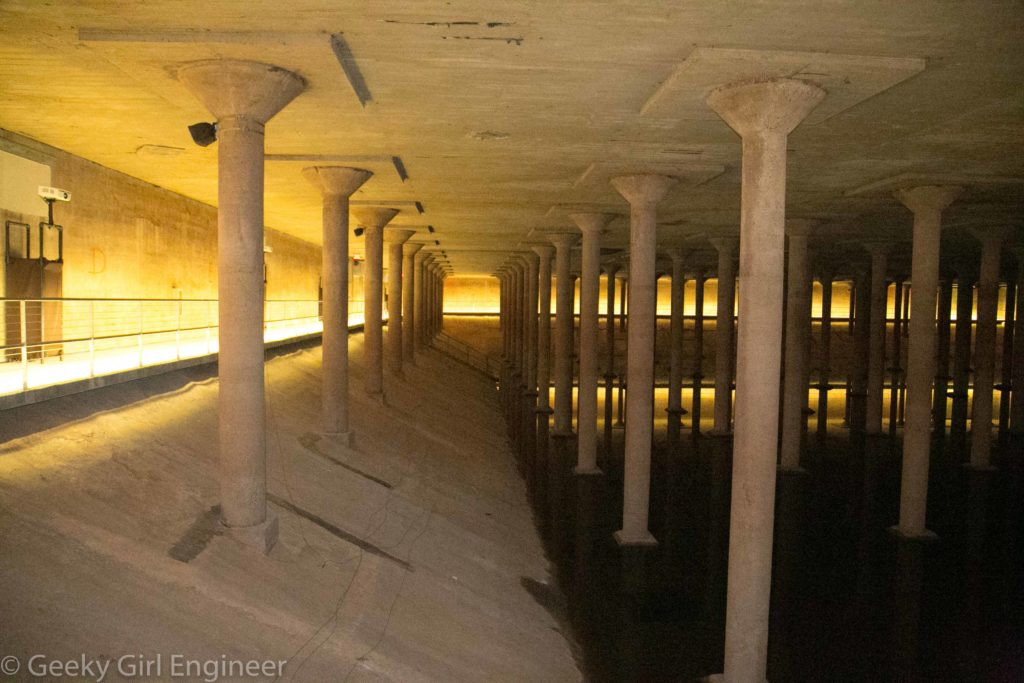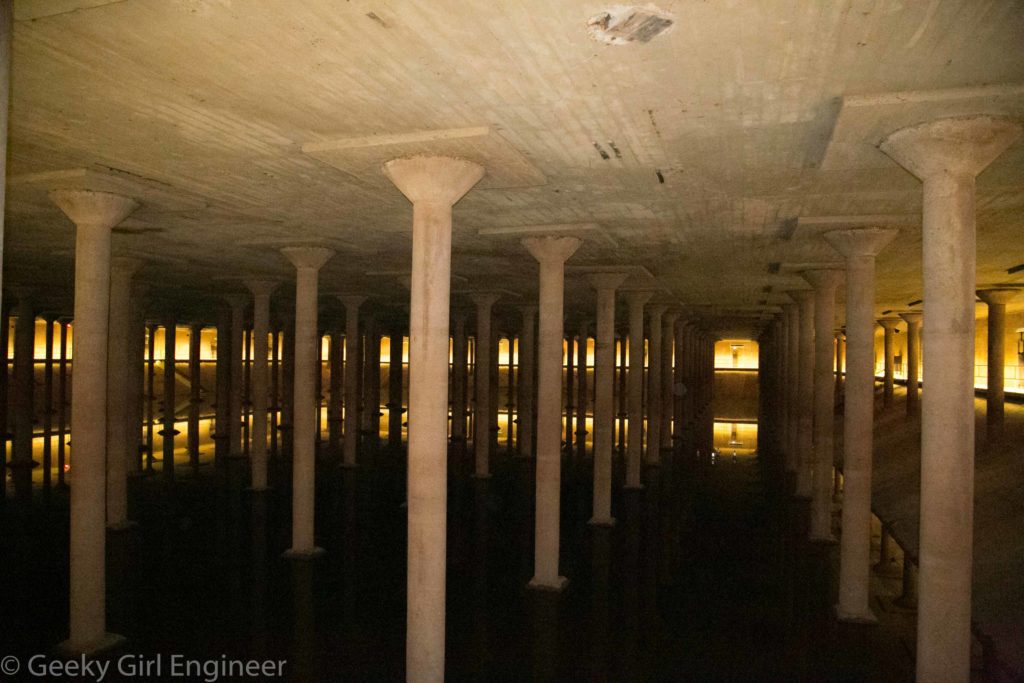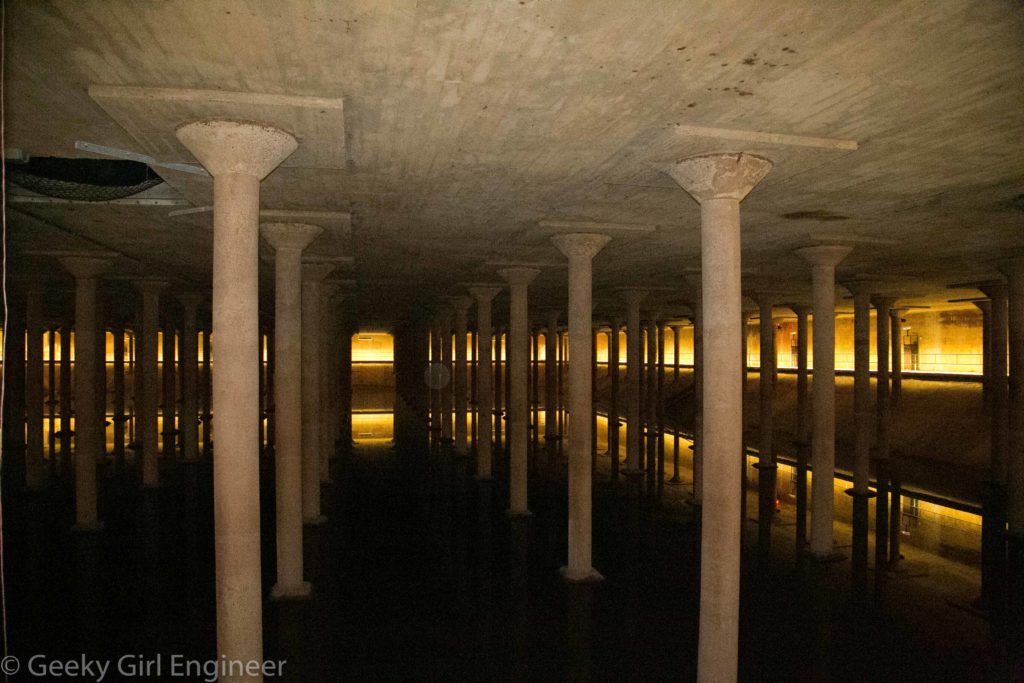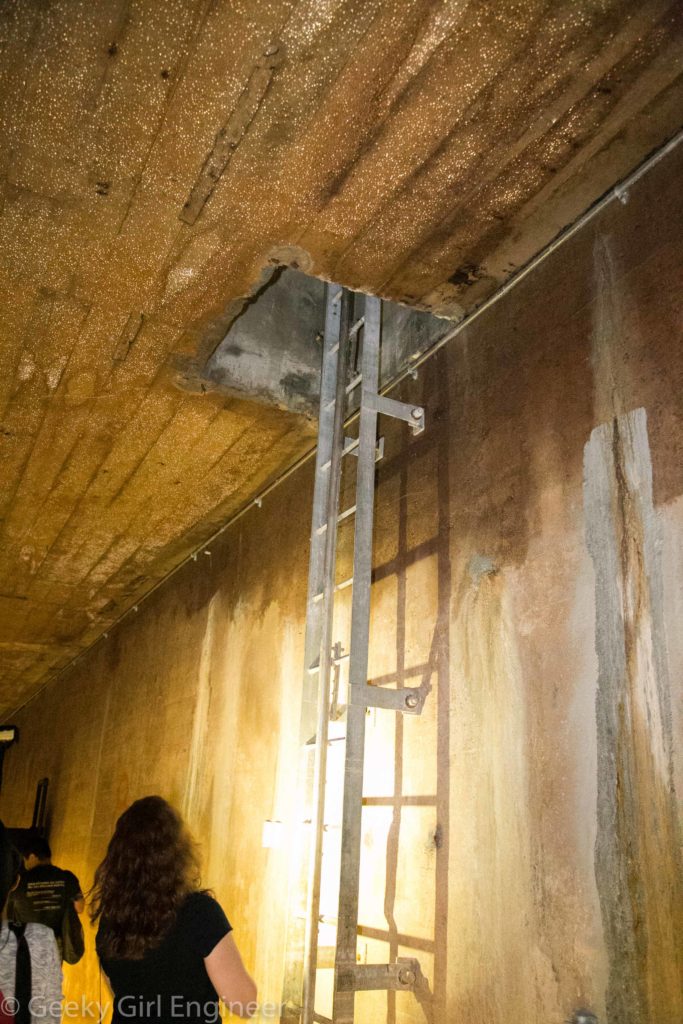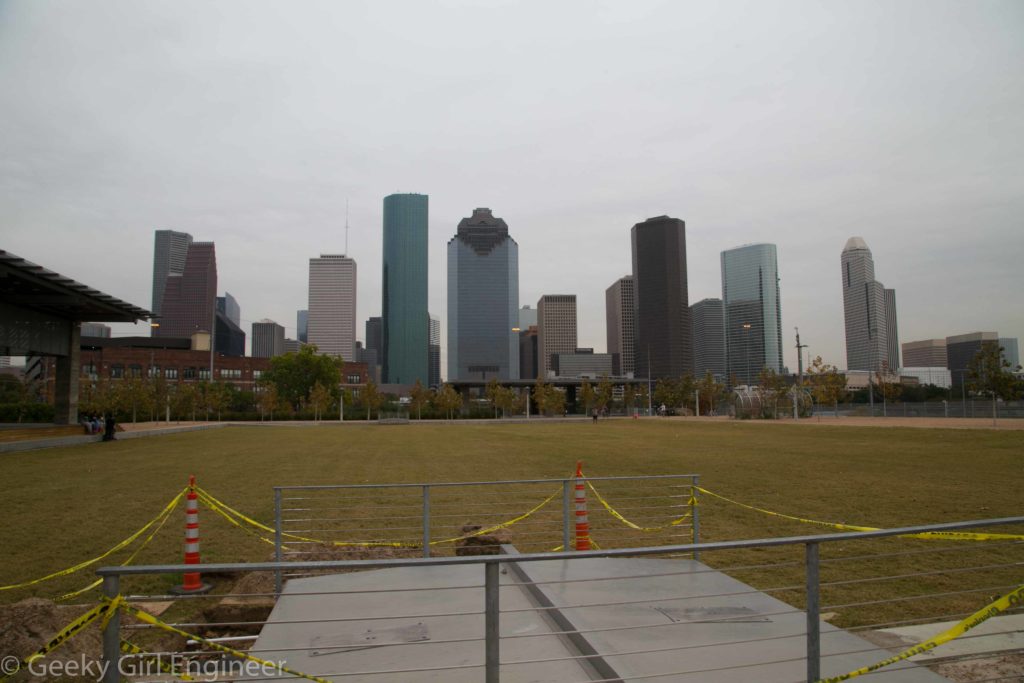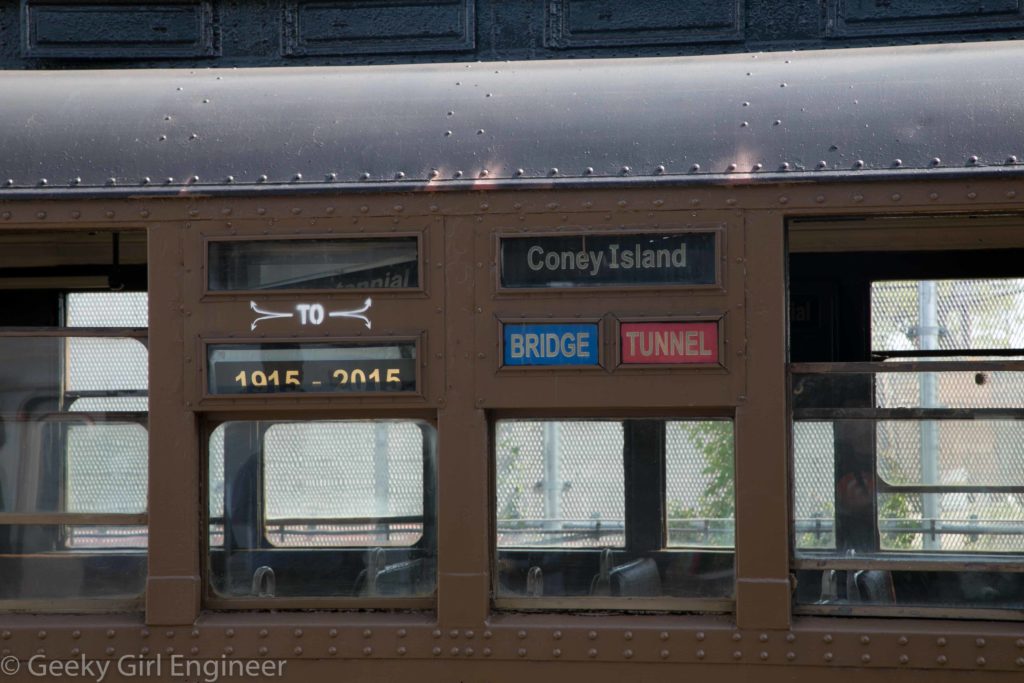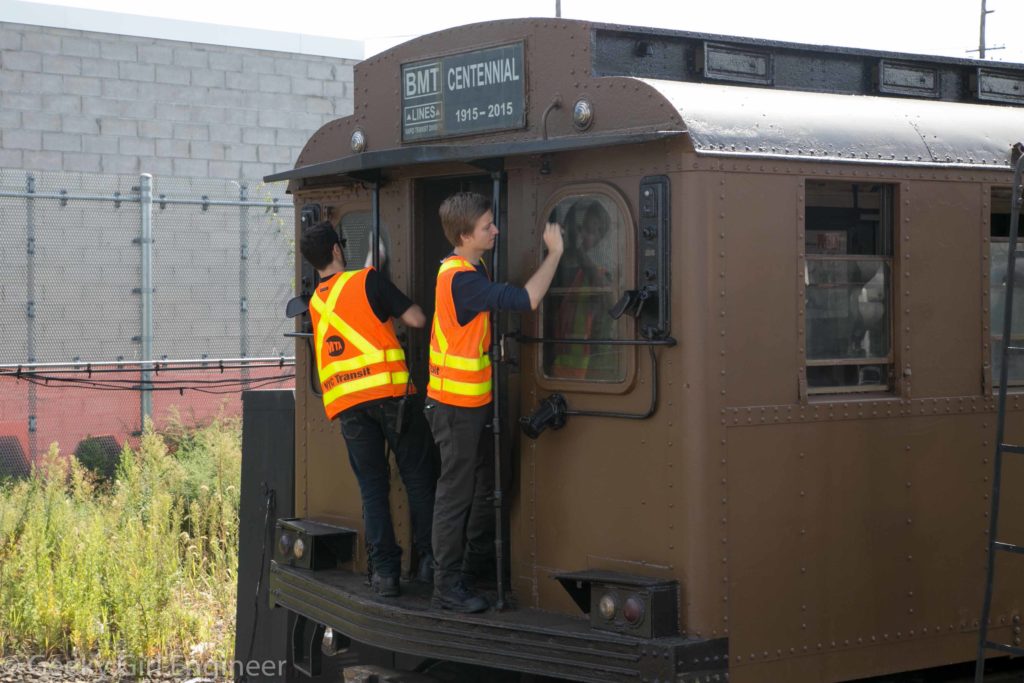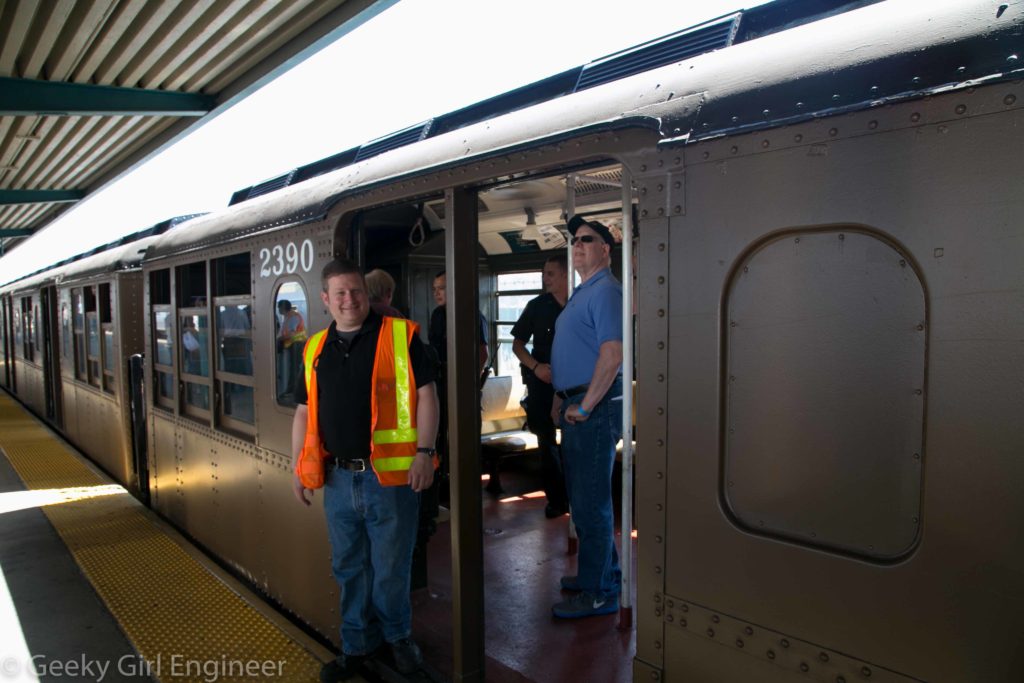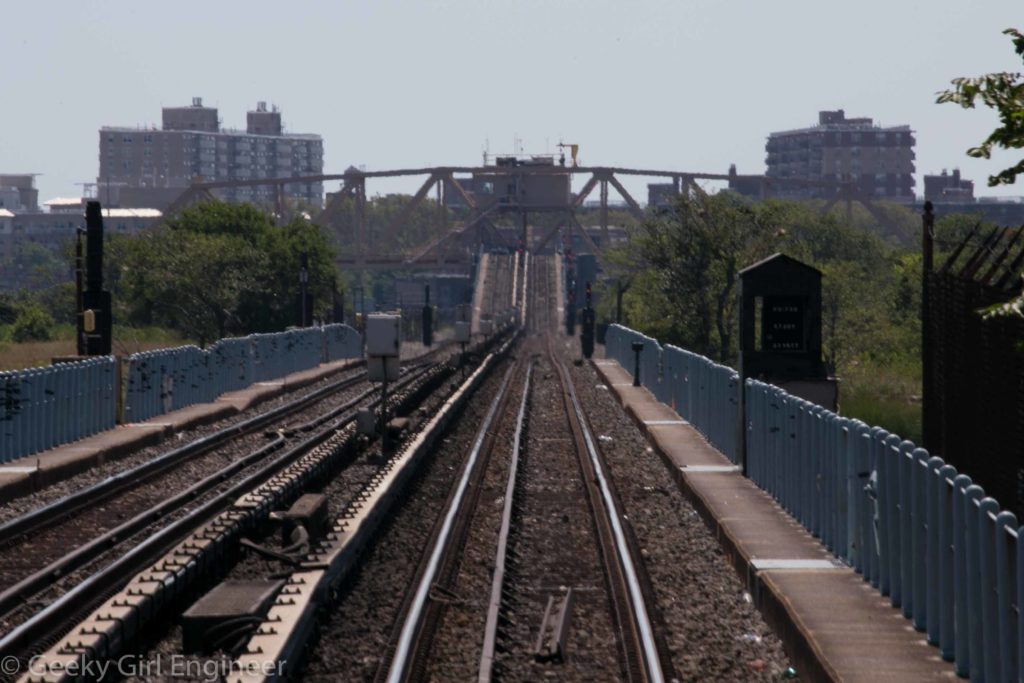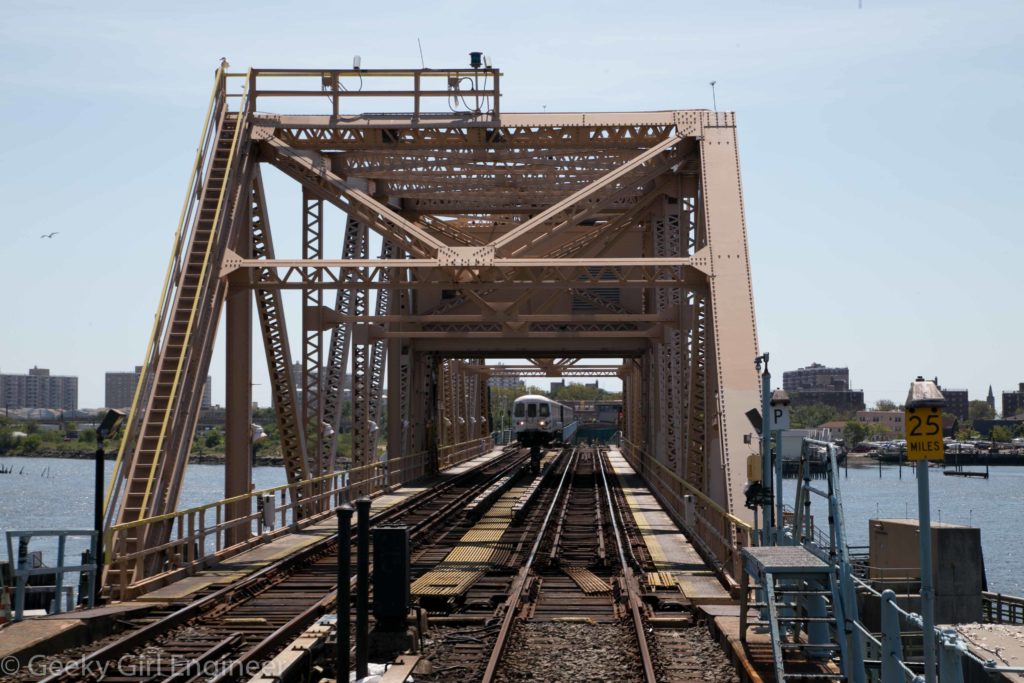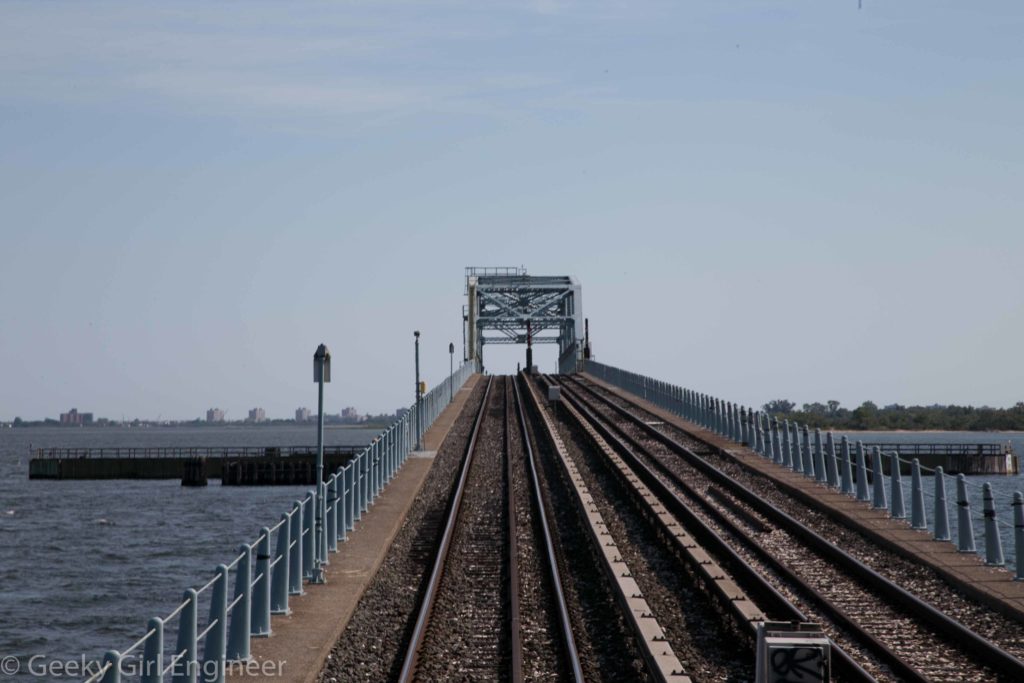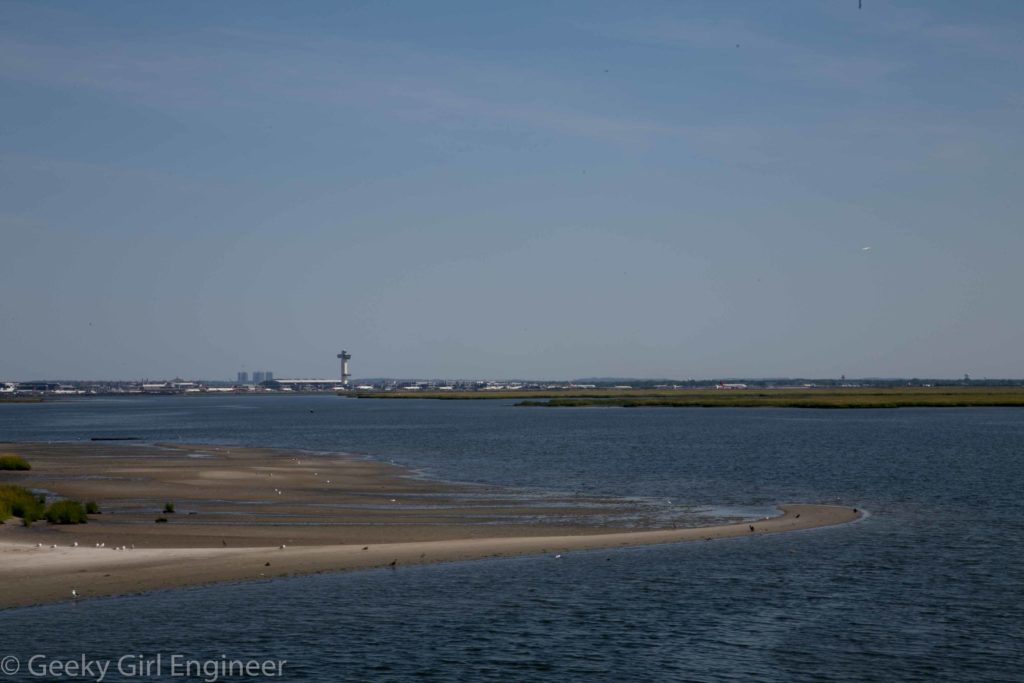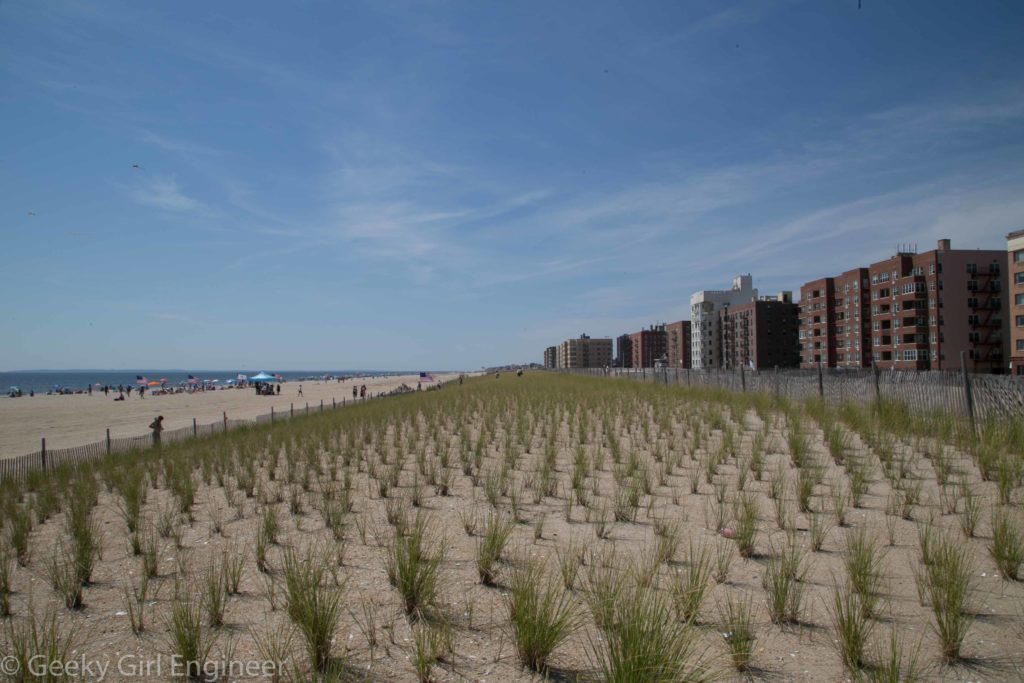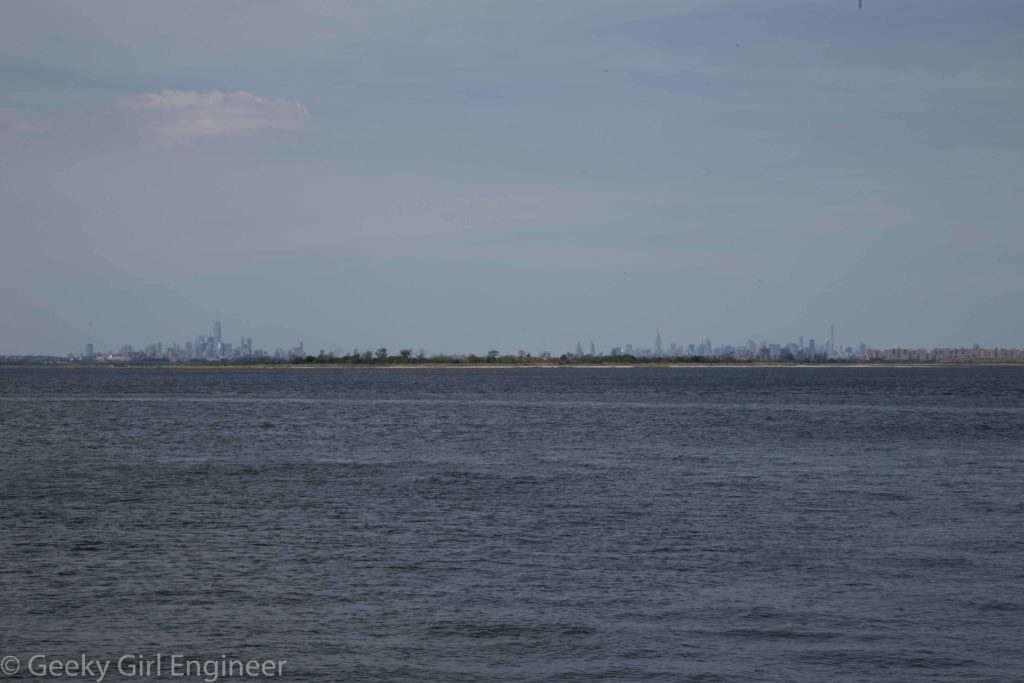Last week, I finally got the chance to tour Treasure in the Trash, a collection I had heard about a few years back and was obsessed with touring ever since. Treasure in the Trash is a collection of items that former Department of Sanitation of New York worker Nelson Molina found in the trash as he worked his route picking up trash. Only a very small percentage of items in the collection were found by someone else. Also, Mr. Molina worked in the same garage, the M11, during his career, so almost all the items are from the same area in east Manhattan. The collection is housed on the second floor of the M11 garage, which for structural reasons can no longer be used for vehicles (vehicles on only park on the first floor now), so the collection has expanded in the void.
Once trash is put on the curb, it is property of the city. Mr. Molina picked items out of the trash, but as the items were kept in the garage, he never kept them, so he never violated any rules. He would have had to have stopped his habit of picking items out of the trash if it had ever slowed him down on his route. However he clearly is fast in his work, and he is also seriously skilled at knowing which bags might contain items of interest for the collection. He was present during our tour, and he told us that his picking habit started when he was a child, and it clearly is a skill. While it would be easy to find the larger items to pick, we were all amazed at how he found some of the small items that were in bags.
Mr. Molina not only created the collection, but he curates it. The items were all arranged in collections of sorts. He retired from DSNY, but he still comes by the garage often to curate the collection. The collections are well done and arranged. I also enjoyed how he prominently displayed a poster for Open House New York, which arranged the tour, and a poster from the City of New York telling people to “Recycle More, Waste Less!”
The collection is amazing in its diversity, but it is really a statement about what we as a society throw away. So many things we buy now are “disposable” with the resources used to make them then just put into the trash when no longer desirable or useful. However with so many items, there are still resources that could be saved from the discarded item, if the item was discarded correctly. However in most places, it is difficult to discard of an item in a way that the resources could be retrieved from them. For example, metal recycling exists, but it is not always easy to get an item to a metal recycler. If you can though, you can actually make money from getting the metal to a recycler, like I did when I was renovating my house. [Side note: I don’t know the precise amount, but a decent amount of New York trash goes to Covanta Waste to Energy incinerators. After the trash is burned, Covanta’s process does capture metals to then send for scrap. However burning metals lowers the efficiency of the incinerator.]
Some of the metal in the collection though, like many other items in the collection, look like something, that someone else would eagerly buy. Some of the jewelry, china, and glass looked if not really valuable, good enough that someone would happily buy at a thrift store or on eBay.
Seriously, much of the collection features items that are the reason eBay was created and continues to thrive.
Then there are other collections that feature items that would be right at home in a museum of some type.
Then there were the items like old televisions, phones, and other electronics, that not only contain valuable resources like rare earth metals but also contain material, including those same rare earth metals, that are hazardous if they get into the environment. With most modern technology hardware, retrieving those valuable resources is difficult because of the way the items are constructed. Further, often the items are sent to developing nations, where people retrieve the valuable material to sell, but they work in ways that is dangerous to their own health.
Other items are funny, random, and weird. Some items made me wonder why someone had the item to begin with. Other items made me sad, like a cross stitch that featured what was clearly a bride and groom and said “Yvette and Lance – March 16, 2007.” I am just guessing Yvette and Lance’s marriage did not make it.
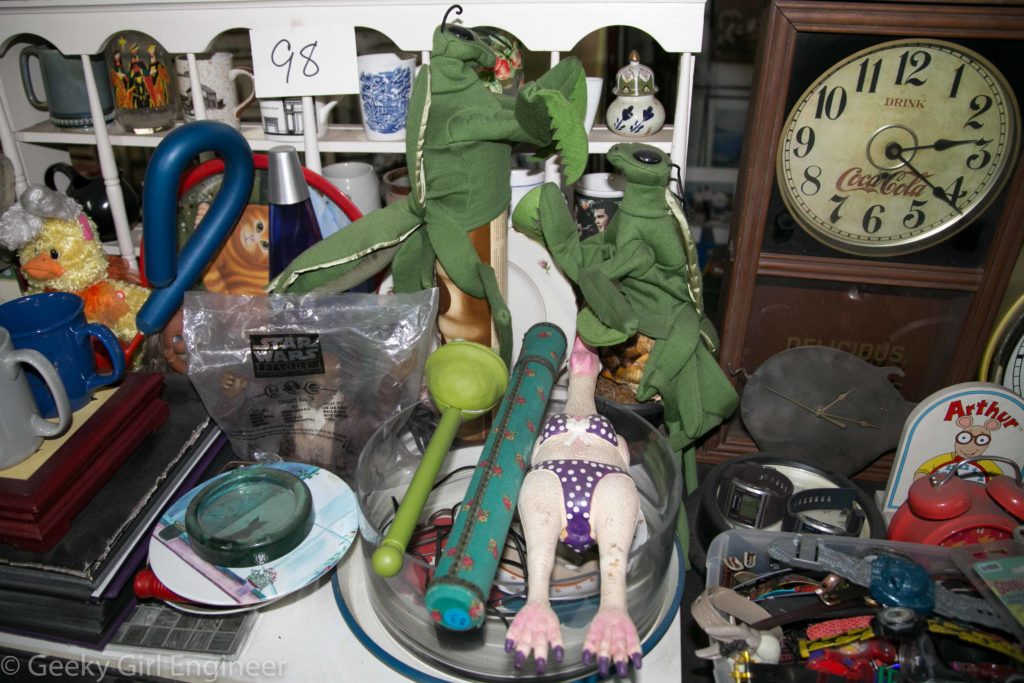
This was one of my favorite collection with the fighting praying mantises and wooden “rubber” chicken. On the left is a ThighMaster.
Then there was this gem that welcomes you as you walk up the stairs to Treasure in the Trash.
The place was amazing. If you ever get the chance, go tour it. Also, many thanks to Open House New York for arranging the tour, DSNY for letting us in, Nelson Molina for talking about the collection, and Robin Nagle, DSNY’s anthropologist in residence, for her introduction to the collection and whose book “Picking Up” about DSNY is well worth the read.

